THE CORE ISSUE: WHY REMANUFACTURING IS GOOD FOR THE AFTERMARKET




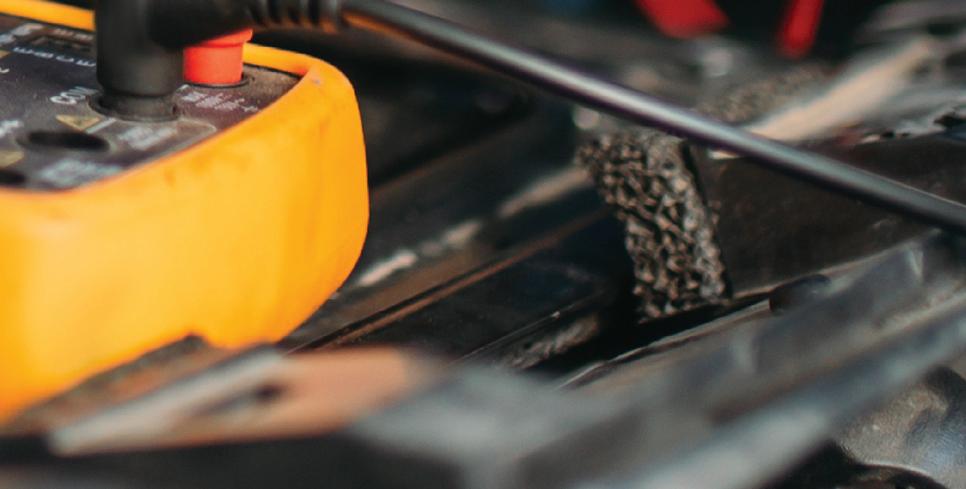
Let’s get technical
INSTALLATION TIPS ON CLUTCHES & STABILISER LINKS
BEST PRACTICE ADVICE OFFERED ON ENGINE COOLANT SENSORS, BRAKE DISC SHIELDS, BRAKE VIBRATION,EXHAUSTS & ADDITIVES



BUSINESS SOLUTIONS FROM ALLDATA,AUTOWAVE & THE GEA

TOM DENTON ON EV SERVICING
THE POWER OF ADDITIVES

TONY POWELL’S DIAGNOSTICS

TOP TIPS REVEALED
HOW DIFFERENT IS LIFE IN THE PIT LANE ?

FREE TOTHE TRADE
MARCH 2023
PMM PROFESSIONAL M OTOR M ECHANIC
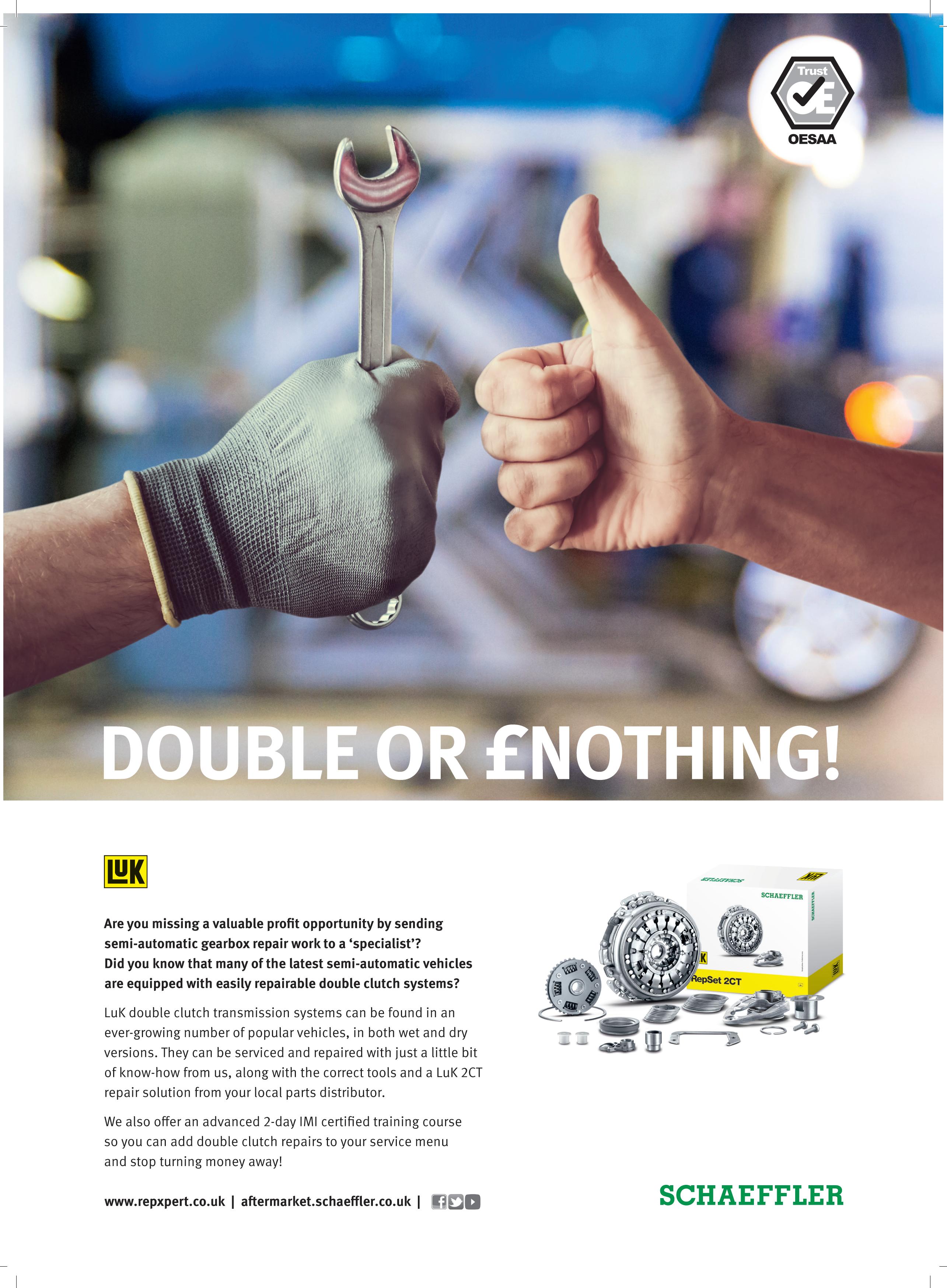
Editor’s Picks

Diagnostics
Tony
Read about how you can join workshops from around the country by signing up to NGK’s new training initiative featuring a portal with over 270 technical training videos.
51 TOOLS FOR SUCCESS
Looking after your tools correctly is more important than ever. Sealey shares some best practice on making tools last longer.

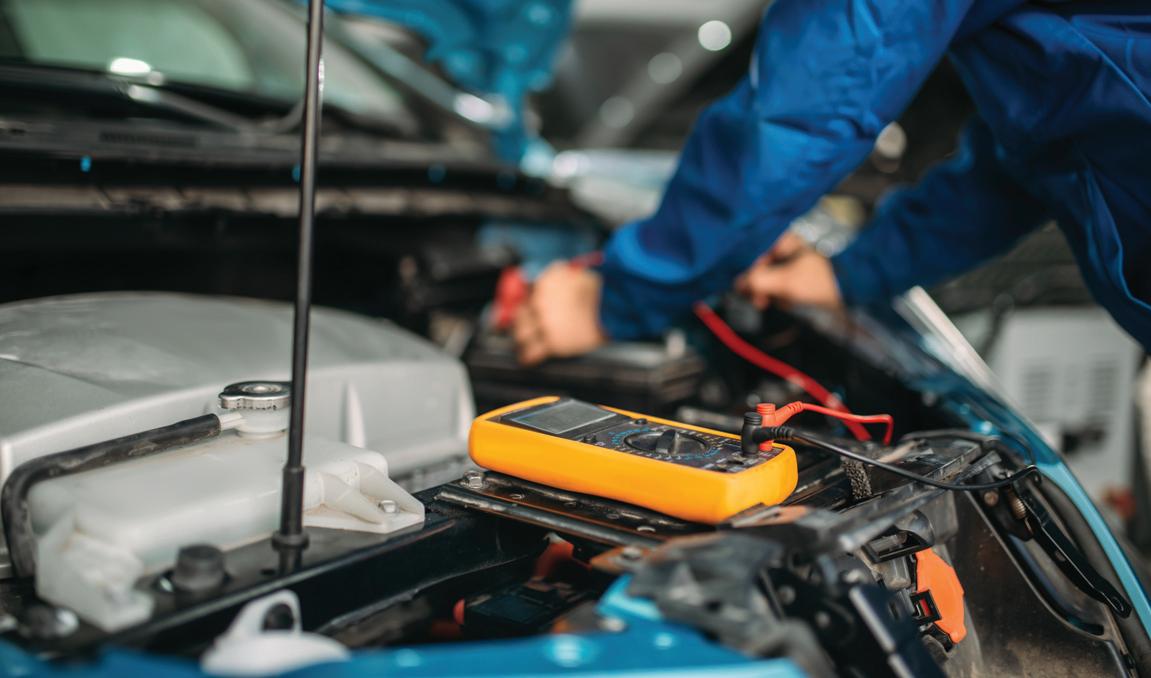
60 STEP-BY-STEP
ACtronics’ Thijs Jasink takes PMM readers through every step of remanufacturing a part including diagnosis and removal to packing and sending.

Contents VOLUME 24 ISSUE 3 MARCH 2023 Features Total Average Net Distribution 54,319 1st July 2021 – 30th June 2022 PMM MARCH 2023 3 41-49 EXHAUSTS & EMISSIONS 51-55 TOOLS & GARAGE EQUIPMENT 57-63 REMANUFACTURING Regulars 6-10 AFTERMARKET NEWS 12-13 TROUBLESHOOTER 14-15 CLUTCH CLINIC 17-26 TECH TIPS 29-31 BUSINESS & TRAINING 32 PIT STOP 34-39 SPECIAL REPORTS 64 ONLINE REPORT 65-66 WHAT’S NEW?
12 FAULT FINDERS
vehicle faults.
expert
Powell shares some tips and tricks he’s picked up during his career diagnosing
29 TRAINING UP
 Editor KIERAN NEE
Editor KIERAN NEE

News and Products Editor

FREYA COLEMAN
Digital Manager
KELLY NEWSTEAD
Group Manager
ROBERT GILHAM
Account Manager
ALEX DILLEIGH
Magazine Designer
GEMMA WATSON
Group Production Manager
CAROL PADGETT
Production Assistant
CLAIRE SWENDELL
Distribution Manager
KARL CLARK
Subscriptions
PROFESSIONAL MOTOR MECHANIC is a business magazine for firms and individuals involved in all aspects of the motor trade. It is published eleven times a year and is available nationally FREE to the trade through leading motor factors. It is also available through the post at a cost of £30.
EUROPE and OVERSEAS
1 year (11 issues) £50
Airmail 1 year (11 issues) £65
Location, location, location
Where is your garage? Does it even matter? There are certain places where garages tend to congregate: on the edges of towns, larger ones in industrial estates, smaller ones wedged in between shops along main throughfares and, of course, the ones tucked in under the railway arches. Where your garage is located might depend on a number of factors. Maybe you didn’t have much choice – in big cities space is at a premium and businesses find they have to make do with whatever is available. Perhaps you chose an industrial unit which would provide you with plenty of space, cheap rates and less headache, but without the potential business from passing traffic. Or maybe you inherited the space along with the business and you’re working within the same four walls that generations did before you.
I ask because I have recently purchased my first home, on the same street of which is a garage in a beautiful old yellow brick building which has been holding out against the developers – but perhaps not for much longer, unfortunately. Renovating what my partner and I will call home for potentially a very long time inevitably brings to mind the considerations surrounding the places we live and work in. The pandemic changed where many of us work, and although vehicle technicians are unable to work from home, it will have altered many of the habits of their customers. Customers who would bring their car into the garage next to their work may now find it easier to bring to their local.
Printed
by Walstead Peterborough
Published by HAMERVILLE MEDIA GROUP




Regal House, Regal Way, Watford, Herts, WD24 4YF.
Tel: Watford (01923) 237799
Fax: (01923) 246901
E-mail: pmm@hamerville.co.uk
Sales enquiries: pmmsales@hamerville.co.uk
Website: www.pmmonline.co.uk
Facebook: /ProfessionalMotorMechanic

Twitter: @pmmmagazine
Copyright © 2023
publishers
Choosing where to live, or indeed where to start a business, is necessarily a compromise and a balancing act. It’s more expensive to live in the town, but you will be closer to other people –friends, family, customers. You might need more space to expand, but where there is space there might not be sufficient infrastructure to facilitate much expansion. If you open a workshop near other workshops, there will be more competition but also a wider pool to recruit from. Whatever you choose, or have chosen, will come down to what your priorities are.
I think I have chosen a good place for a home and I hope the local garage stays put well into the future – if they move, they won’t be the same without the place and the place won’t be the same without them.
Kieran
Editor
Nee
VIEWPOINT
Listen on Amazon Podcasts Listen on Spotify Podcasts Listen on Apple Podcasts Associate member Find every episode at www.pmmonline.co.uk/podcasts Also available: JOIN M E EACH M ONTH ON THE PMM PODCAST
The
and editor do not necessarily agree with the views expressed by contributors,nor do they accept responsibility for any errors of translation in the subject matter in this publication.
‘‘
I think I have chosen a good place for a home and I hope the local garage stays put well into the future”
PMM NEWS with
NEWSIN BRIEF
■ BEN
Ben, the automotive charity, has launched a new text service which offers support for those struggling in the aftermarket and beyond atany time of day.
■ THE SOCIAL MARKET FOUNDATION
The cross-party think tank is warning that Britain will not have enough EV techs to service the car parc come 2030. The think tank predicts a shortfall of 25,000, however emphasises that the technicians of the future will be more highly skilled than at present.
■ BOOKMYGARAGE.COM
BookMyGarage.com has announced the addition of mobile mechanics to its offering after a survey found that 68 per cent of its customers would consider using one.
■ GROVE GROUP
Automotive supplier Grove group has extended its portfolio of workshop services and products to encompass a range of electric vehicle charging systems. The service comes following customer requests to charge both customers’ and employees’ vehicles.
More MOT madness ahead
The government has put forward more MOT plans, proposing to change the required date at which the first MOT for cars is from three to four years. The Department for Transport says this could save motorists around £100 million a year in MOT fees.

This proposal comes following a public consultation that has also been seeking views on the frequency of MOTs and how to improve monitoring of emissions. Up for consideration is whether to introduce the testing of pollutants, whether EV batteries should be tested to improve their reliability and how the DVSA can continue to crack down against MOT and mileage fraud. Following the launch, the Independent Garage Association has announced that it will be carrying out an assessment of the proposed changes, consulting with its members and the wider industry to ensure representative feedback is provided.
Industry voices
Stuart James from the IGA has responded to the proposals, saying that it is inevitable that plug-in hybrids and EVs will impact the way the MOT works. He also commented that “the MOT plays a vital part in keeping the UK’s roads amongst the safest in the world, and the IGA will work closely with the government to safeguard this record and ensure a fair, viable and safe future for the MOT system which protects all road users.”
In the same vein, Karen Rotberg, cofounder of BookMyGarage.com, said: “The fact the government is pitching these proposed changes as a way to save motorists money is farcical. On average, drivers pay £35.52 for an MOT test booked through our
Freya Coleman
website – that’s less than the cost of half a tank of petrol in a typical family car.”
The IAAF has also said it will fight any proposals to extend the frequency of the MOT test, arguing that the increase in the first test frequency will see the number of defective vehicles on the road rise, causing an increase in accidents and fatalities.
SMMT chief executive Mike Hawes said: “Although today’s vehicles are safer and more reliable than ever, safety critical components such as brakes and tyres continue to wear through normal use and lead to millions of MOT failures every year, including at the current first test at year three”.
Whilst four years is the standard in most European countries including Belgium, France, Italy and Spain, data obtained by BookMyGarage.com from the DVSA via a freedom of information request showed that 13 per cent of three-year-old vehicles fail their first MOT on a major or dangerous defect, rising to 15.4 per cent for four-yearold vehicles.
6 MARCH 2023 PMM
13 per cent of three-year vehicles fail their first MOT on a major or dangerous defect raising to 15.4 per cent for four-year vehicles
FOR UP-TO-DATE NEWS, SIGN UP FOR THE WEEKLY E-NEWSLETTER AT WWW.RDR.UK/AAV001
A longer life
According to data from the European Automobile Manufacturer's Association from its ‘vehicles in use’ report, the average car in the UK is 10 years old.
The average age of UK cars is expected to climb further in the years ahead following a significant decrease in new-car sales. Of the 36.7 million cars registered in the UK, 21.5 million are less than 10 years old. Comparing
this to the European Union, the average age of cars there is 12 years old, up 0.2 years compared to figures from the previous year.
NEWSIN NUMBERS
58 %
of motorists are less likely to swap their car in 2023 due to the cost-of-living crisis, reports January’s Startline Used Car Tracker.
90 %
of independent garages expect rising costs, taxes and energy bills to be the biggest operational challenge in 2023.
1 in 5
breakdowns on the road are caused by tyre failure.

In pictures: Co-founder of the Speed of Sight charity, Mike Newman, dubbed “the world’s fastest blind man”, has been honoured with an OBEfor services to people with disabilities, including visual impairments, in the King’s New Year’s Honours List. Congratulations Mike!
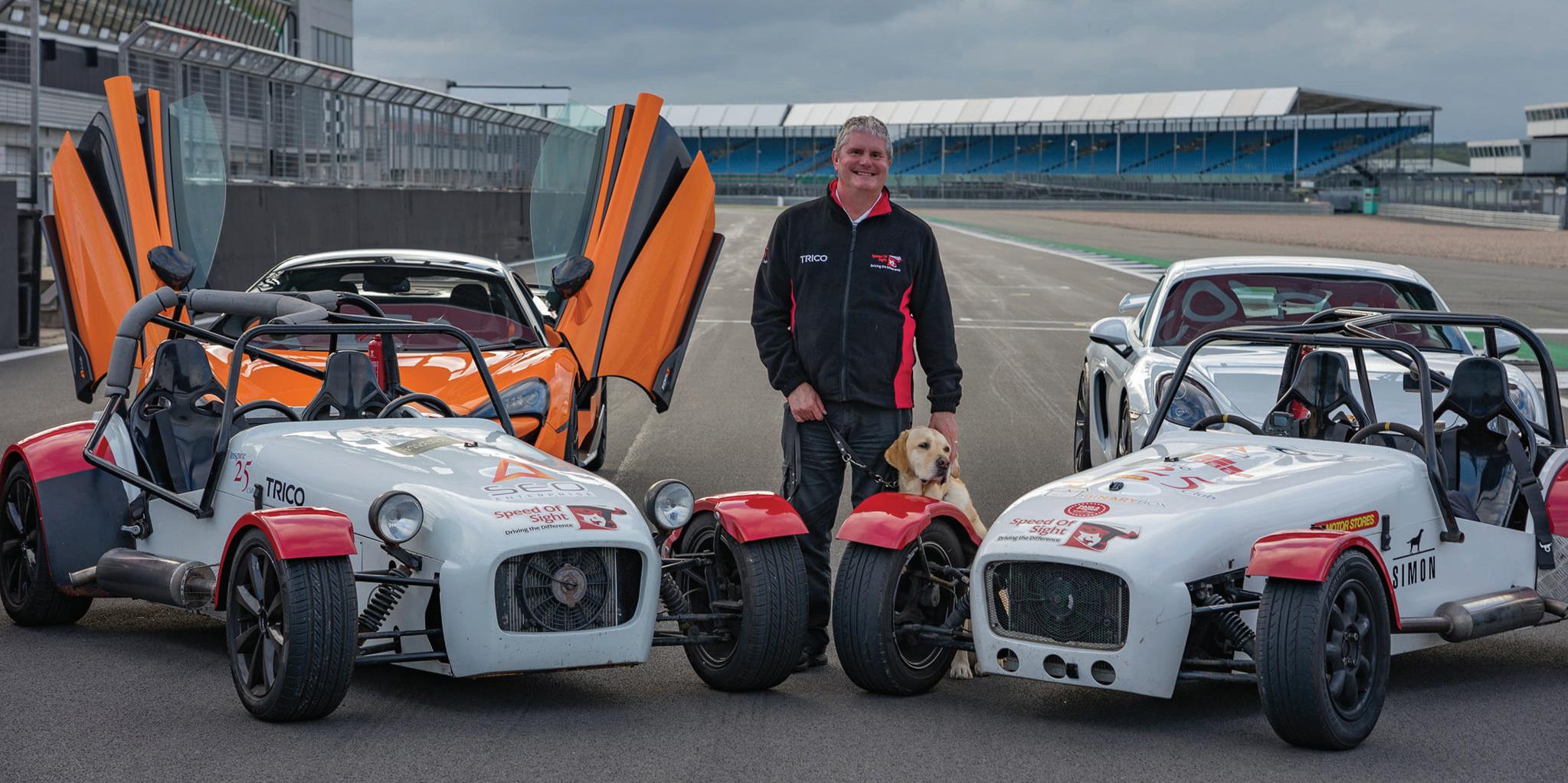
Essentialoilchanges
The VLShas warned motorists not to put off essential oil changes and top ups, despite pressure on household spending. Workshops are the front line and can help play an important role in helping customers understand how important oil servicing is.

Mike Bewsey, chairman of the VLS, said: “Postponing or skipping oil changes or ignoring the oil warning light is a risk we are asking motorists not to take. Doing so could starve the engine of vital lubricants, risking increased wear and, at worst, lead to a catastrophic event like an engine seizure
and a much more expensive repair later on. OEMs set oil change schedules for a reason. They know their engines, how they run on certain fuels and in specific regions and they know how the engine oil, as well as other consumables, perform over time and mileage.”
£1.9 m
how much the James Bond franchise has spent on vehicle damages over the years –good news for the local garage, perhaps.
PMM MARCH 2023 7
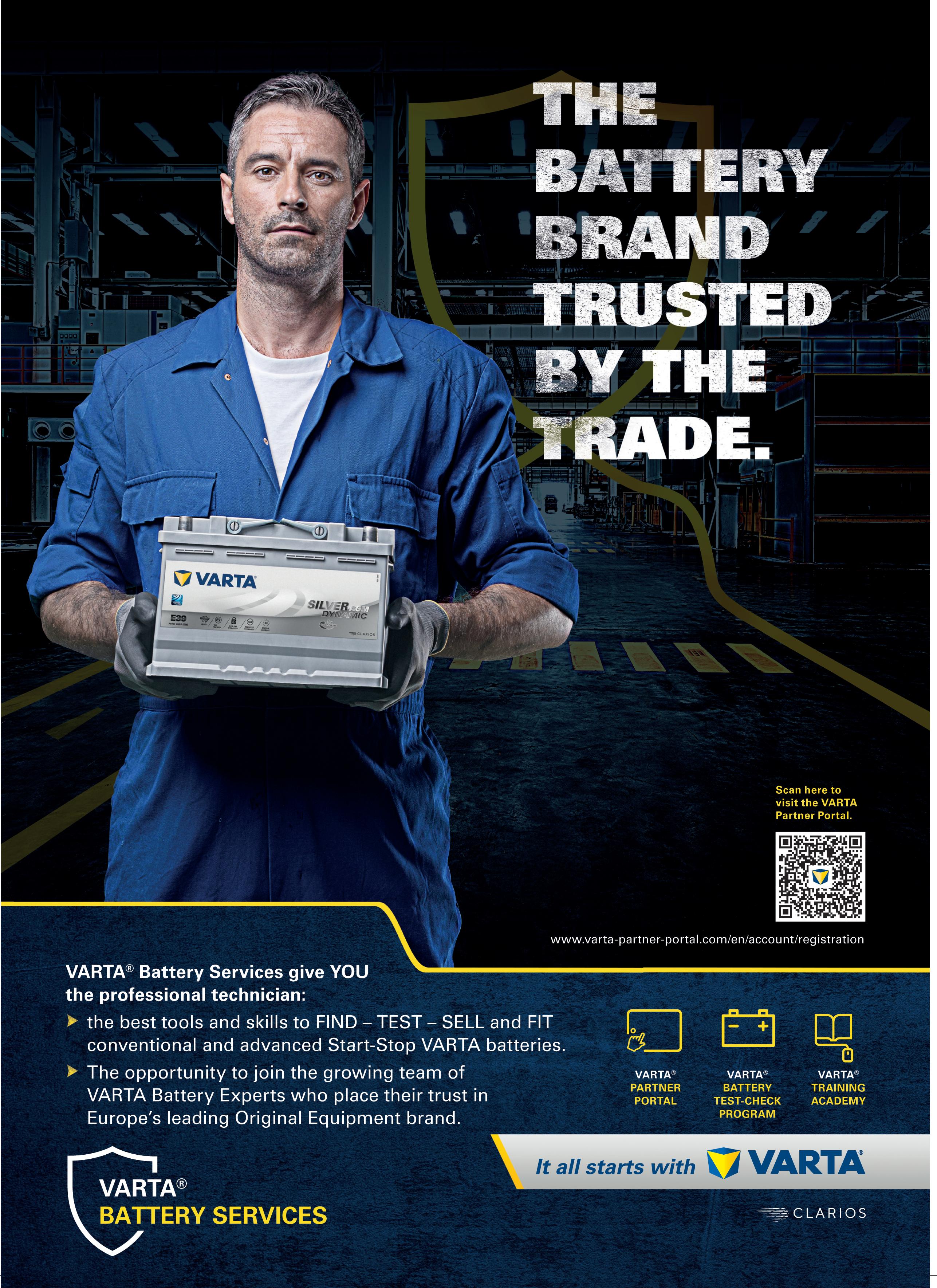 with Freya Coleman
with Freya Coleman
NEWSIN QUOTES
“ The latest data outlines a decline in demand for electric vehicles, probably caused by the cost-of-living crisis and doubts about the government’s electrification ambitions. This has led to a dampening of forecasts, with EVs predicted to reach 50 per cent of all new car sales by 2027 rather than 2026 as previously expected. But the last thing we need now is for the sector to believe it has more time to get the workforce properly skilled.”
Steve Nash, IMI CEO, commenting on the latest Auto Trader Insights.
“ The upcoming budget shouldgo further, allowing vehicle producers and suppliers to qualify for additional measures in line with energy intensive industries, ensure climate change agreements are maintained and energy efficient capital investments are incentivised.”
Mike Hawes, SMMT chief executive, comments on the government’s new energy relief scheme which will last a year from the 1st of April. The scheme will offer businesses an automatic gas unit discount of up to £6.97/MWh and an electricity discount of up to £19.61/MWh.
Online resource launched
Delphi Technologies has launched its new Masters of Motion online hub as the start of a sustained campaign to support technicians and workshops. The hub hosts content including ‘how to’ videos, infographics, articles, tips, training resources and advice. The resource also features sections such as ‘Advance your Workshop’ and ‘Need to Know’; these include articles on new technology, advice and expert insight. The company hopes the
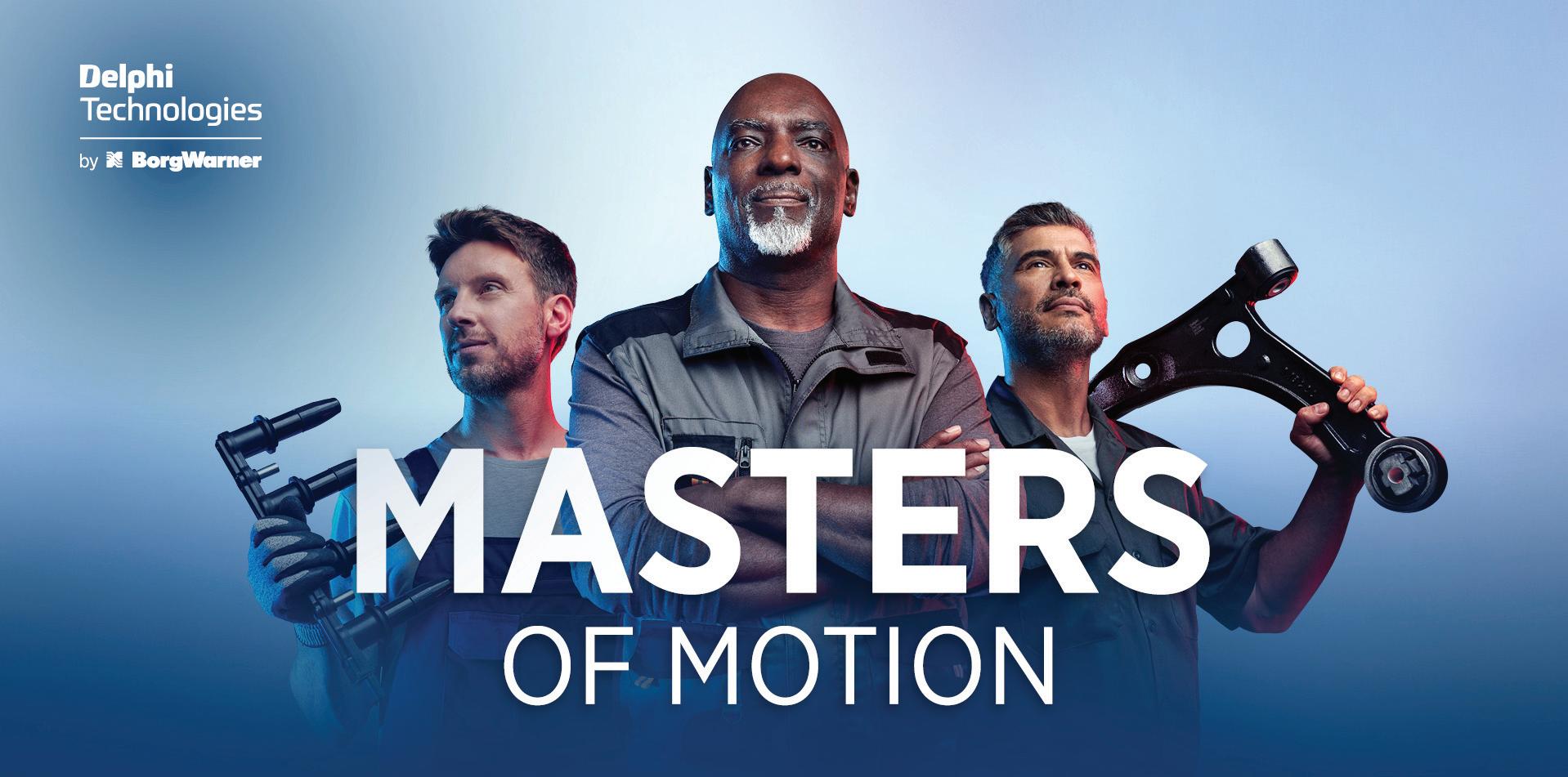
‘how to’ section will prove popular as it contains a library of nearly 30 videos already covering issues around ADAS calibration, diesel injection, engine management and more.
Lastly, the ‘how to replace’ videos offer step-by-step guidance on completing a range of jobs from core mechanical work like changing brake pads and discs or wishbones, through to replacing sensors and ignition coils.
All about oils:the latest podcast episode
In this episode PMM editor Kieran Nee chats to the VLS’s Mike Bewsey and Witham Motorsport’s Nigel Bottom about what role modern motor oil plays in vehicles, why they’re so complex and, most importantly of all, why they’re so expensive at the moment! As ever, news and products editor, Freya Coleman brings you the latest aftermarket news, while PMF ’s Tom Henman shines a light on factors and distribution.

Oil has been in the news more in the past year than at any time since the early seventies. So we thought, considering engine oil and the additives packages it carries are the unsung heroes of modern cars, why not dedicate an episode of the podcast to the stuff?
Big thanks to Delphi, supporters of this episode!
To listen, scan the QR code:

PMM MARCH 2023 9 PMM NEWS
DATES FORTHE DIARY
■ The IMI’s 2023 awards is set to take place at the IMI Annual Dinner on the 15th of March. Two new categories have been added to reflect the everchanging automotive landscape; the President’s Award focusing on sustainability and the environment and the EDI Award, aiming to celebrate diversity in the industry.
■ The BIG Awards are back this year on Friday the 22nd of September at Leicester City Football Club. The awards celebrate the best garages in the aftermarket. Entries are now open, and categories include the business improvement award, the diversity equality and inclusion award and the training and development award among many others.
■ PMM has confirmed it will be hosting a stand at this year’s Automechanika Birmingham, which will take place at the NEC in Birmingham on the 6th, 7th and 8th of June. Come and visit our stand for your chance to be featured on the PMM Podcast!
Confidence to grow
Business has boomed for TR Autos in Yeovil following itsswitch tocommunityfocused garage management system Garage Hive.
The independent Saab specialist, founded in 2008, is run by Tom and Kayleigh Butler and turnover at the four-person garage grew by £113,000 in the last year.

TR Autos says the first six months after moving onto the garage management system
did present challenges, but a member of the team was there to help. Customer online authorisations, vehicle health checks and job checklists have also helped drive business growth by offering total transparency on what’s needed. The garage has reinvested the proceeds of this extra business, moving from a two-bay workshop to one that is three times the size, adding an MOT bay for the first time too.
MOT fines

An MOT tester has been fined with £1,300 and 200 hours of community service for issuing fraudulent MOT certificates.
The mechanic at the Surrey garage was accused of issuing MOT certificates to seven vehicles without performing the test for
financial gain. He admitted to seven counts of fraud by false representation that took place between February and April last year. This comes at a time where the DVSA has recorded a total of 1,324 counts of MOT fraud from 2021 to 2022.
10 MARCH 2023 PMM
MESSAGE ME YOUR NEWS AT FCOLEMAN@HAMERVILLE.CO.UK
In pictures: The Clenchwarton Youth Football Club’s under 16s team whose away and training kits have been sponsored by MAHA.

BEST PRACTICE
Tony Powell’s diagnostics advice
We asked PMM product tester and diagnostics expert Tony Powell to share some of the techniques and knowledge he’s picked up along a career diagnosing vehicle faults stretching over four decades.
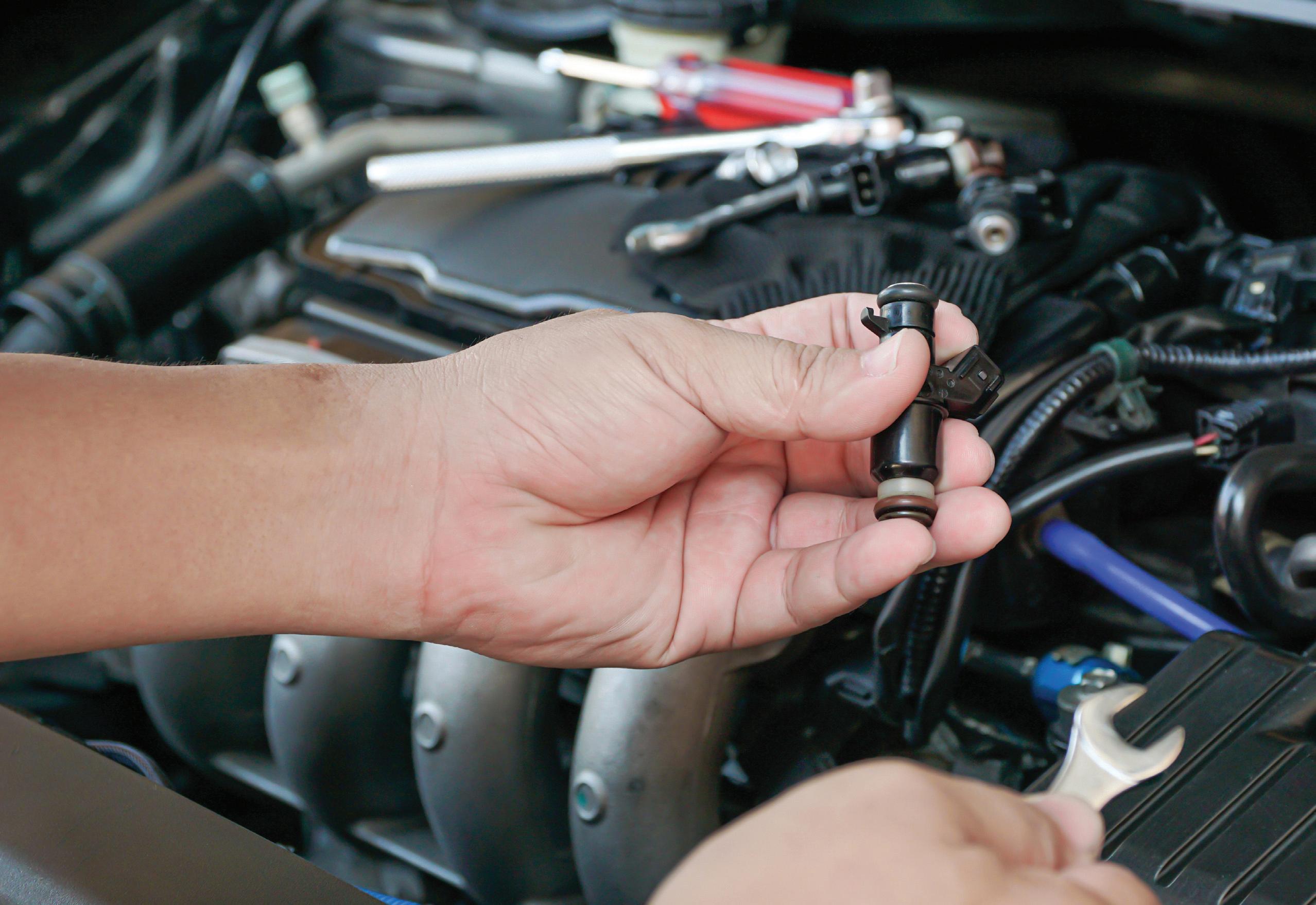
When I first started learning to diagnose things over 40 years ago, there was very little in the way of training outside of college, plus it wasn't called diagnostics back then!
We learnt stuff the hard way: by making mistakes and getting burnt (literally). I remember being told as a young apprentice to put a 1/4 in. bolt into a fuse holder (the old glass type) and then having to pull it out fast when the wire started to smoke where it was shorting out, this is the getting burnt bit as the bolt was very hot and no one told me to use pliers. These days everyone has a scanner that you just plug in and it tells you what's wrong – or so some customers think anyway.
The modern world of diagnostics has changed dramatically and at a fast pace in
recent years, with new tools appearing every day. However, you don't always need to spend thousands of pounds on tools to be effective at diagnostics.
The biggest and best tool we all have is our brain, working in conjunction with our sight, touch, hearing and even our smell; used in the right way these can be very effective and they’re completely free.
Over the years I have learnt that you never stop learning and every day is a school day.
There are many opinions on how to diagnose a fault but I always start with the basics, for example checking for blocked air intakes. I know of one garage that fitted a new set of injectors, a turbo and a fuel pump – when the fault was found, it turned out to be an old crisp packet that was flapping up and cutting the air off at 35 mph. It was an expensive mistake with a simple cause and an even simpler fix.
Start by looking at things first, you are looking for something that doesn’t fit: green fur on copper wires, broken wires that stick out, loose bolts or nuts, burn marks or rubbing marks from loose parts are always a giveaway. Can you smell fuel or anti-freeze? Do you hear a funny noise? If there's nothing obvious, move on –although experience can play a big part here, we can
TROUBLESHOOTER 12 MARCH 2023 PMM
“The biggest and best tool we all have is our brain, working in conjunction with our sight, touch, hearing and even our smell”
all be led down the wrong path. Be careful, because touching can alter things and that fault may disappear for a while.
A code scan can give you a guide as to where to go first, but remember just because it says “X” it doesn’t mean that “X” should be replaced, it could be power or earth or signal fault toor from“X”,notjust thepart and a solid, structured diagnostic plan is the way to go.
Take a recent “no start, no communication with the ECU” job I did. A code scan said no communication and a low battery fault along with many fault codes for CAN Bus and communication across the vehicle. Just to make things weird, the wipers were permanently running.
I started by putting a decent battery support unit on as there is no point in chasing a low power fault when the battery is flat. The giveaway here was that I still had the low power fault after doing this. Returning to the battery to check my support unit was on ok I noticed the odd one out, the bolt holding the positive lead onto the distribution module was very, very rusty. When I did a few preliminary voltage drop tests the readings I got were nicely over 12 V as they should have been, with no drop off. But using a test light gave me more information as the voltage disappeared. Further investigation showed that the fuses were badly corroded and one even looked fine yet disintegrated when I touched it (this just happened to be the one that fed power to the ECU). This explained the noncommunication code and the no start along with the low voltage code. A new module and fuses fixed all the issues here.
Using a decent test lamp that draws a small current can show up a wire that although it
allows 12 V along it or it passes a resistance test can soon fail when it is tested under load. Don’t rely on an LED test light for this job!
The same applies when checking fuses they may look ok but using a test lamp puts them under load which shows up the invisible crack or break that a voltmeter may miss.
Voltage drop testing is also a very effective method for tracing faults and is a skill you really need to master. So far, we have only scratched the surface but it’s easy to see that basic tools can still do the job.
As you progress through the years in this trade, you end up with more and more tools and getting off that tool van empty handed, especially in my case, becomes harder and harder –it’s sad to say but Covid saved me a fortune!
Scan tools
Some tools, though, are worth their weight in gold –take the Picoscope oscilloscope, for example. If you can master this tool you can fix some incredibly difficult faults with ease, getting into wiggly lines on a screen can show up some of the most awkward and difficult faults to diagnose in the most easy-to-see way. I for one wouldn't be without mine. There is a lot of training and back up for this one as well.
Scan tools come in two categories: dealer and aftermarket. Whilst the dealer tool can be brilliant it can also be hard to master and very costly to buy and maintain with minimal back up or support outside the facebook groups that have sprung up.
Aftermarket scan tools are usually cheaper and normally easier to use but often miss some important job options found on the dealer tools or only provide half the details required and many use the same software re-branded.

Yet without these tools many of us wouldn’t be able to perform to the levels we do.

PMM MARCH 2023 13 TO LISTEN TO OUR DIAGNOSTICS PODCAST WWW.RDR.LINK/AAV002
“A code scan can give you a guide as to where to go first, but remember just because it says “X” it doesn’t mean that “X” should be replaced, it could be power or earth or signal fault to or from “X”.”
HOW TO

Replace the clutch on a Citroën Berlingo1.6 HDI

In this month’s Schaeffler LuK Clutch Clinic, REPXPERT Alistair Mason is replacing the clutch in a 2012 Citroën Berlingo van, that has covered nearly 218,000 miles. The customer had reported that the clutch was ‘slipping’, which a short road test confirmed, and the clutch replacement was advised and authorised.
With a scheduled book time of six hours and very little investment in equipment, this makes a profitable repair for any independent workshop.
Gearbox removal
With thevehicle placed on thevehiclelift, open the bonnet, remove the engine cover followed by the battery cover and then disconnect and remove the battery and battery tray.
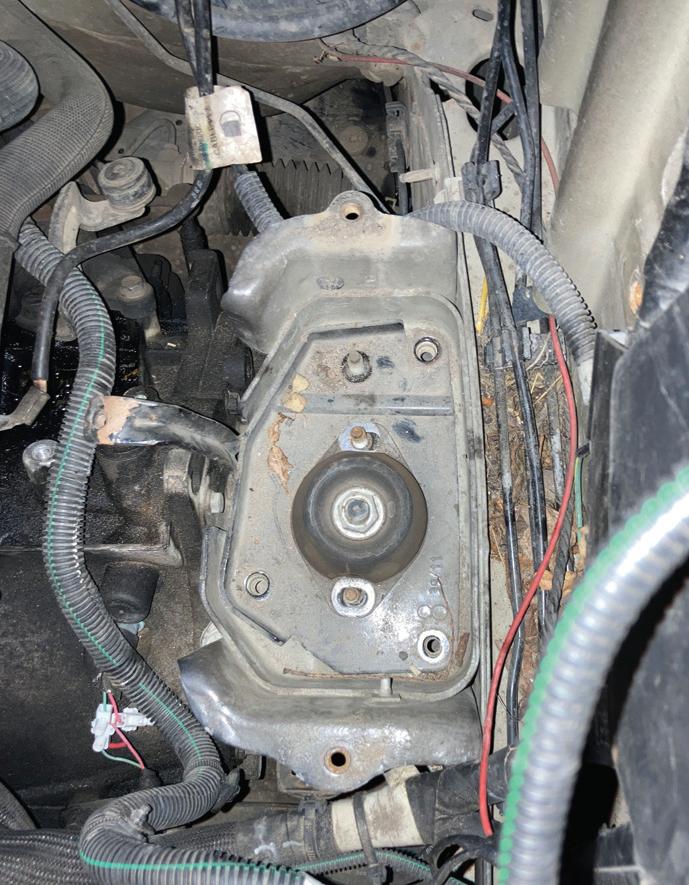
Note – there is a retaining bolt that is accessed from the N/S inner wing hidden behind the plastic wheel arch liner (Fig.1). With the top of the gearbox now accessible, disconnect the gear cables and the gearbox wiring loom, by disconnecting its multiplugs,
then remove the wiring loom bracket from the top bell-housing bolts and stow the gear cables and the loom out of the way. Whilst in this area, the top bell-housing bolts and top starter motor bolt can be removed, followed by the bolts from the gearbox mounting plate to the inner wing (Fig.2).

CLUTCH CLINIC
14 MARCH 2023 PMM
Raise the lift to waist height and remove the N/S/F wheel, then raise it again to gain access to the underside of the vehicle and remove the plastic under-shield and the front subframe side brace (Fig.3).
Drain the gearbox oil, remove the N/S bottom ball joint nut and disconnect the ball joint from the bottom arm. Lever the inner CV joint out of the gearbox, then pull out on the strut assembly and the drive shaft will come out of the gearbox and can be positioned away from the gearbox (Fig.4).


slightly to aid its removal, unscrew the final bell-housing bolts, ease the gearbox away from the engine, and when clear, lower and move it away from the vehicle.
Clutch Replacement
Remove the clutch assembly from the flywheel. In this case, we could see the clutch plate was at the end of its service life as the lining had worn close to its retaining rivets. Inspect the back of the engine for any oil or coolant leaks and rectify as required, remove the glaze from the solid flywheel face using emory cloth, and clean with clutch and brake dust cleaner.
point grease to the gearbox input shaft splines, mount the new clutch plate onto the input shaft (Fig.7), and allow the clutch plate to travel up and down the input shaft as this will ensure the grease is distributed evenly and that the clutch is correct for the vehicle, but remember to remove the clutch plate and wipe off any excess grease before fitting the cover.
Remove the three bolts from the O/S inner driveshaft seal housing flange, the final starter motor bolts, the lower bell-housing bolts and then, the lower gearbox pendulum mount. Top tip – there is a bolt located by the Diesel Particulate Filter, so remove the nut and stud from the DPF bracket as this will allow the bell-housing bolt to be unscrewed from the gearbox (Fig.5). Remove the two slave cylinder retaining bolts and position the slave cylinder away from the gearbox, without disconnecting the hydraulics.
Support the engine using an engine support and the gearbox with a transmission jack and remove the gearbox mounting. Lower the engine and gearbox assembly
Turning to the gearbox (Fig.6), remove the release bearing and release arm, but always check the pivot points and guide tube for wear, replacing them if required and then wash out the clutch dust from the bellhousing using clutch and brake dust cleaner.


Using a universal clutch alignment tool, mount the clutch plate with “gearbox side” facing away from the engine onto the clutch pressure plate and secure in position. Mount the clutch assembly onto the flywheel, insert all clutch bolts, tighten in an even and sequential sequence and finally, torque to the manufacturer’s specification. Then remove the clutch alignment tool.
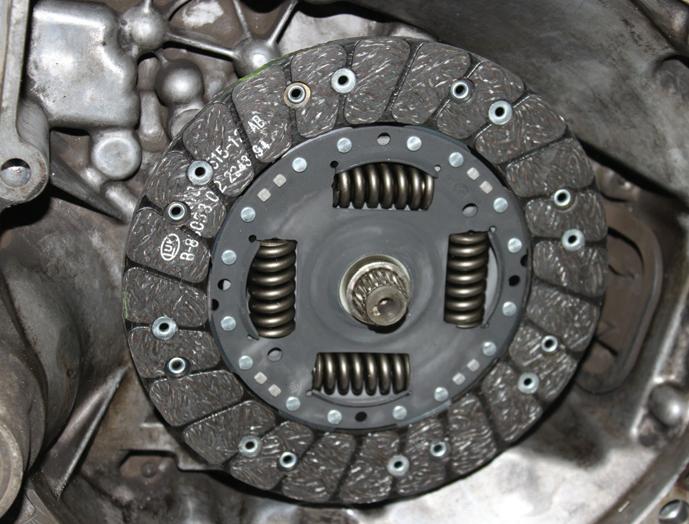
Gearbox fitment

Before re-fitting the gearbox, so they do not get caught or trapped when refitting the gearbox, ensure all cables etc are clear of the bell-housing area. Place the gearbox on the transmission jack, ease the gearbox onto the clutch and then the alignment dowels and secure in place with an easily accessible bell housing bolt and tighten. Refit all the other components in reverse order of removal and torque all bolts to the manufacturer’s specification.
Refill the gearbox with oil through the gearbox breather. After the battery lead has been connected, reset all electrical consumers, and always carry out a road test to ensure a quality repair has been made.
Fit the new release arm and release bearing, apply a light smear of high melting
PMM MARCH 2023 15
MORE INFORMATION WWW.RDR.LINK/AAV003
WANT TO KNOW MORE? FOR
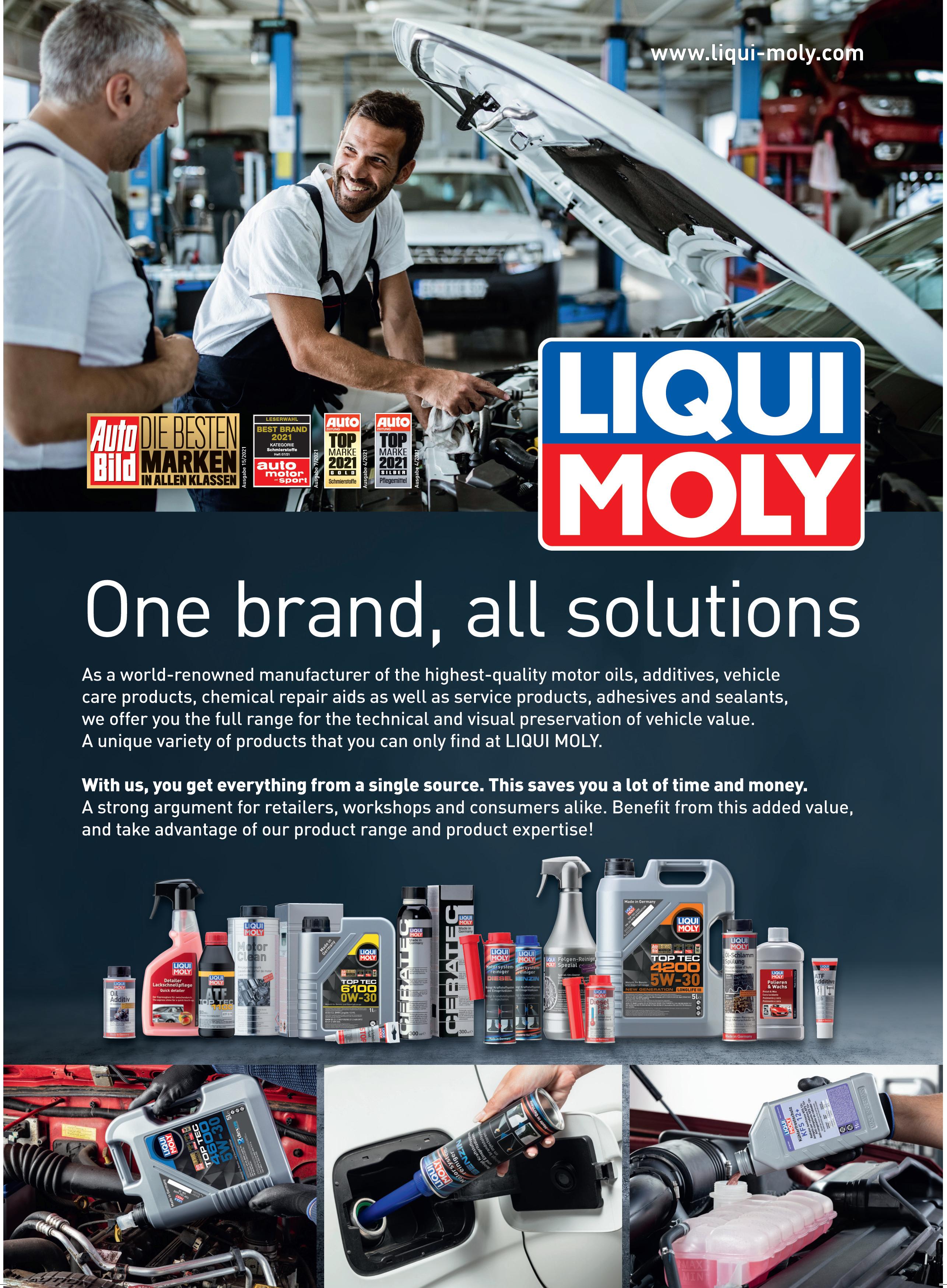
KNOW YOUR PARTS
Brake disc shields
Febi outlines everything you need to know about brake disc shields.

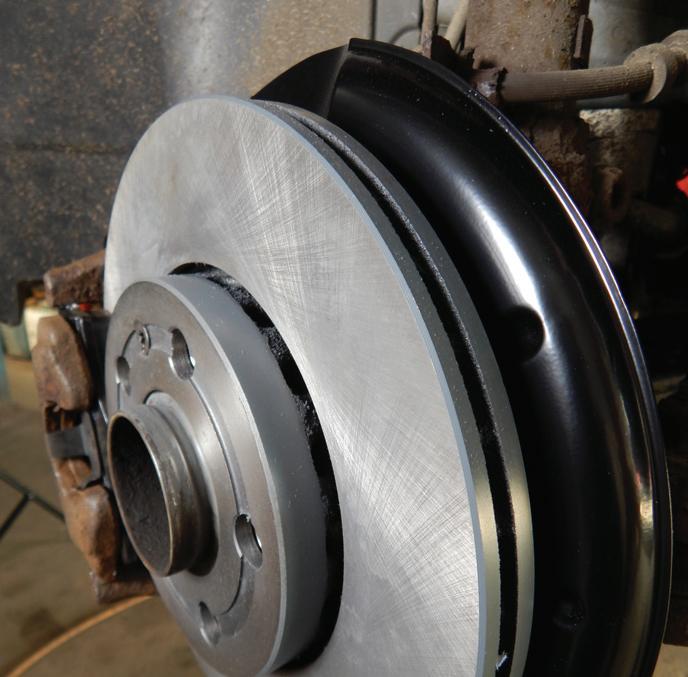
Avehicle’s braking system aims to create the necessary braking force to reduce the vehicle’s speed and prevent it from moving when parked. The vehicle’s braking system must give a rapid, balanced response when required, resulting in a short stopping distance, with even braking effect and precise control. It should also be resistant to road debris and corrosion, giving high reliability and durability.
Protecting discs
There are two main types of friction brakes used on vehicles; predominantly, disc brakes are used on most cars, whereas drum brakes are generally used for the rear brakes of smaller passenger cars. A characteristic of disc brakes is that they have a much greater resistance to heat loads and heat dissipation capacity than drum brakes. In addition, the direct contact of the friction material with the rotating brake disc results in maintaining a high braking torque for a more extended period. This means they do not undergo mechanical distortion during operation due to temperature build-up compared to drum brakes. In addition, rapid distortion is prevented by the uniform distribution of the friction metal pressure on the brake disc’s contact surface.
However, there is a risk to the exposed brake disc surface from road debris and rapid temperature changes, leading to brake disc fractures and distortion. Therefore, protective shields are mounted behind the disc brake assembly, protecting the discs, pads and hoses from constantly being exposed to dirt, and dust contamination from both the road and the friction material produced as the pads and discs wear while being used. Consequently, they help to maintain the vehicle’s braking performance.
In turn, they also protect hot discs by reducing the amount of sudden cold water that can splash them and cause them to distort or crack whilst driving in wet road conditions.
They also protect the electronic components in the brake system, such as the wheel speed sensors, brake pad wear sensors and the associated wiring, from heat and debris, along with all the associated steering and suspension components that are close to the disc brake assembly.
This protective part of the disc brake system and other parts of the brake system are subject to evaluation. In addition to routine maintenance and the regular vehicle inspection procedure, a vehicle is inspected to ensure that it conforms to safety and emissions regulations.
If the shields deteriorate due to corrosion or distortion, this can be caused by the following:


■ Premature wear and corrosion of the brake discs.
■ Possibility of excessive contact with external factors, such as water and road debris, due to shield material losses caused by corrosion.
■ Risk of damage to any of the fixings to the suspension and steering joints.
■ Noise due to distortion, causing contact with rotating or moving parts.
■ Excessive heat from the brakes affecting rubber or plastic components, causing melting or burning if the shield is missing or completely corroded.
febi brake disc shields are manufactured from pressed steel and are precisely formed to match OE. The steel is treated with a galvanised coating and then painted to give excellent anti-corrosion protection. An efficient and effective brake disc shield prevents the causes mentioned above and extends the service life of the braking system, providing safety for the driver and other road users.
PMM MARCH 2023 17
TECH TIPS
TO KNOW MORE? FOR MORE INFORMATION WWW.RDR.LINK/AAV004
WANT
PMM THE PODCAST



WHAT DO CHANGING A BATTERY, CHANGING A BABY (JUST THE NAPPY) AND CHANGING YOUR MORNING RADIO STATION ALL HAVE IN COMMON?
THEY OFFER THE PERFECT OPPORTUNITY TO LISTEN TO THE PROFESSIONAL MOTOR MECHANIC PODCAST WITH KIERAN NEE.



HEAR ADVICE ON PRICING JOBS, MANAGING PARTS SUPPLY, ELECTRIFICATION, RECRUITMENT AND MUCH MORE.





Listen on Google Podcasts Listen on Apple Podcasts Listen on Amazon Podcasts Listen on Spotify Podcasts LISTEN NOW ON YOUR PODCAST PLATFORM OF CHOICE
WILL SERVICING AND REPAIR WORK REDUCE WITH

EVS


As with work on any type of vehicle, training, skill and access to information is essential. With hybrid and electric vehicles, it is even more important. I am sure by now most of you have heard the horror stories of somebody draining oil from a Toyota Prius –at which point the car starts its engine because the high voltage battery is discharging. You don’t need me to outline the consequences. Manufacturers’ information is therefore essential.
Hybrid cars require the same service as traditional ICE vehicles with additional checks of the EV systems. Pure EVs are different, they have fewer moving parts and because of regenerative braking, even the friction brakes are used less often. However, an electric car still needs to be serviced regularly.

The actual service is vehicle specific, so some cars will need more checks than others. The MOT test (often done at the same time as an annual service) covers some of the basic safety checks, but as a general guide an EV service will include:
> Tyre condition, wear and pressure check

> All lights for correct operation
> All steering and suspension components inspected for security and wear
> Windscreen washer top up and wipers checked/replaced
> Pollen filter change
> Checking the auxiliary battery (even a pure EV has a ‘normal’ 12 V battery)
> Checking the brake fluid moisture content and replacing if needed
> Additional brake checks –due to reduced use corrosion can build up
> Diagnostic scan to check for stored fault codes
> Check charging connectors for corrosion or dirt, which could lead to a build-up of heat

> Check charging cables, if in the vehicle, for any external damage to the insulation and the plugs/sockets.

> Check on high-voltage batteries and components in general should include:


> Cracks or deformation of housings
> Colour changes due to temperature and tarnishing




> Escaping electrolyte or coolant

> Damage to high-voltage contacts

> Information stickers are fitted and legible

> Equipotential bonding is in good order
> Corrosion and damage in general

> High-voltage cables for the battery, air conditioning and heating, electric drive, on-board charger and charging socket.
Always refer to the manufacturer’s information for what is required at a service. For example, at specific mileages some EVs require coolants to be changed. Overall, there is less work to do when EV servicing. This means less time is spent so more vehicle throughput will be needed to ensure the workshop is fully loaded.

What is certain is that things are changing and that the amount of work and sale of parts will reduce. Perhaps some lateral thinking is needed and other sources of revenue could be explored. For example, electric scooters and eBikes will need servicing. We are in a time of rapid change – the best option is to be prepared.

TO KNOW MORE? FOR MORE INFORMATION GO TO WWW.RDR.LINK/
But it’s not all bad news if we are qualified and ready for it. Sponsored by
WANT
Yes!
FIG.2 High voltage cables should be checked for signs of insulation damage
FIG.1 Domestic mains socket and charge point cables
HOW TO Replace a stabiliser link
Delphi Technologies, a brand of BorgWarner, has supplied this step-by-step guide courtesy of their recently launched Masters of Motion hub for independent garage technicians.
Delphi’s new training resource has articles, tips, training, resources, advice and more. There are sections called ‘Advance your workshop’ and ‘Need to know’ to support on new technology and other challenges.
Delphi says through Masters of Motion, it is committed to helping garages meet the demands future vehicles will present. The aim is to develop a stronger connection with the independent garage and workshop technicians that form ‘the backbone of the aftermarket’.
Getting down to it
This guide comes from a selection of around 30 ‘How To’ videos covering a range of workshop jobs including ADAS calibration, diesel injection, engine management and more.
This video sees Matt from Delphi working to change a stabiliser link, also known as an anti-roll bar drop link, on an Audi A3 e tron at Delphi’s in-house training workshop in Warwick.

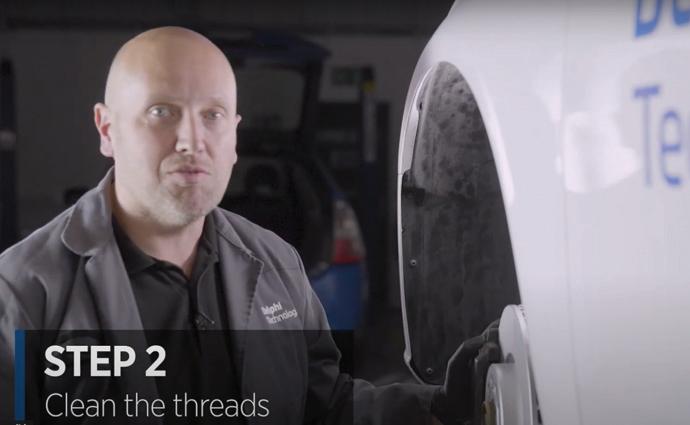
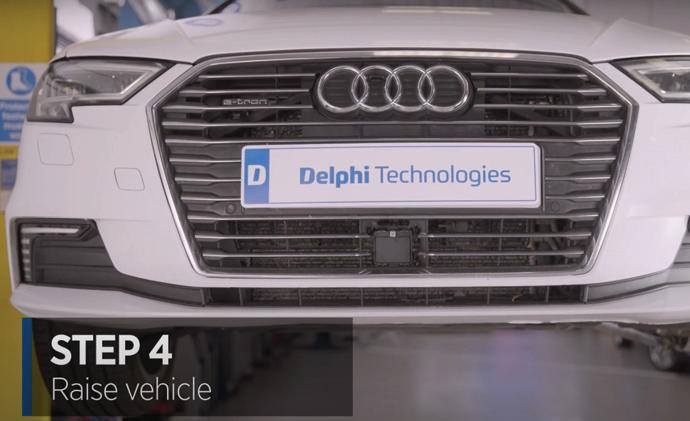
STEP Clean the threads
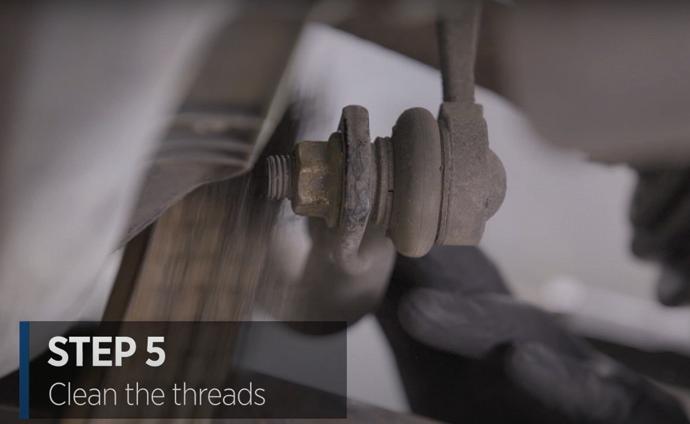
Cleaning away loose debris and any corrosion with a wire brush makes it easier to undo the locking nuts. Rolling the strut around is recommended to give better access.


WATCH!
To watch this stabiliser link being replaced, scan the QR code below
STEP Remove the bottom lock nut This involves ‘working it backwards and forwards’toreleasethenut frombinding on the thread.In thiscasethenutstillwouldnot release, so some lubricating oil was added to free it.

TECH TIPS
STEP Remove the wheel
STEP Remove the top lock nut
STEP Raise the vehicle
This improves access to the bottom lock nut.
STEP Clean the threads
20 MARCH 2023 PMM
“Delphi says through Masters of Motion, it is committed to helping garages meet the demands future vehicles will present.”
STEP Compare the parts
Having removed the part, take time to make a visual comparison before fitting the new part.
STEP Remove the nut from the component
The nut is removed from the lower fixing point of the component. In this case, the size of the nut is different to the one on the part that was removed but the part is fully compatible.

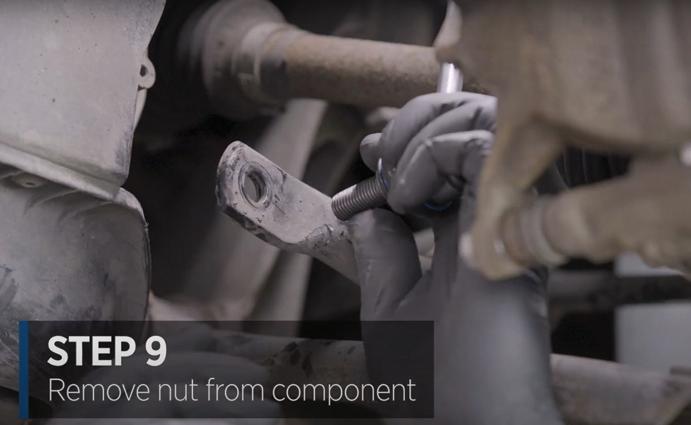
STEP Tighten bottom lock nut fully with torque wrench
STEP Hang the top fixing


The new component is hung loosely from the top fixing to take the weight before the bottom section is fully secured.
STEP Secure the bottom lock nut
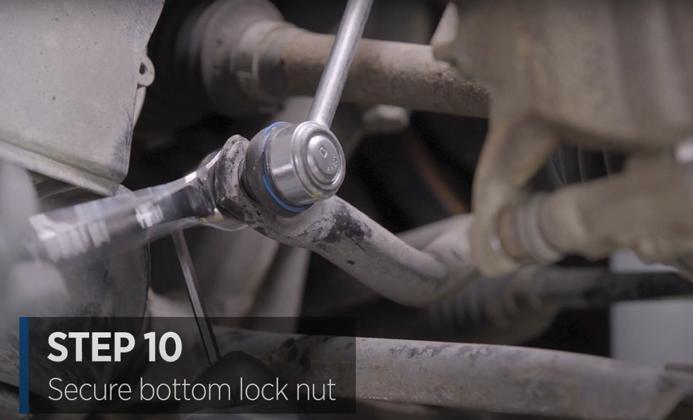
After a change of spanner, the centre of the fixing is held by an allen key whilst the lock nut is tightened up until there’s some tension.
STEP Secure top lock nut
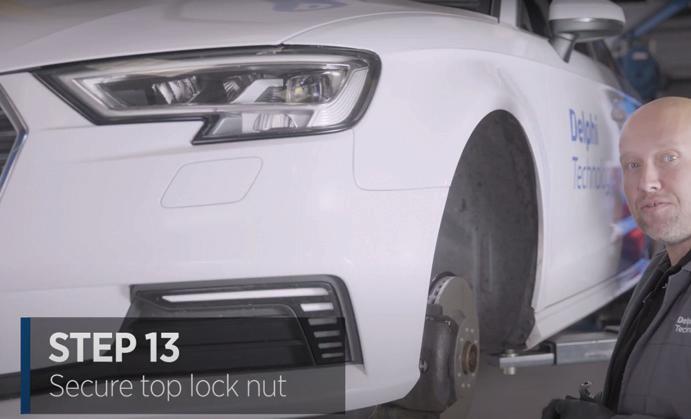
With the bottom fixing secured, the car is lowered again so the top locking nut can be tightened in the same way with the rachet spanner and allen key.
STEP Set torque wrench to manufacturer’s specification
In this case, the wrench is set to 65Nm.



STEP Tighten to manufacturer’s specification
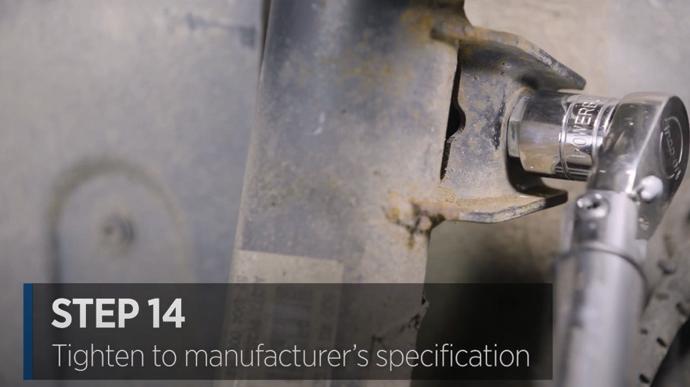
Complete the tightening process with the torque wrench once again.
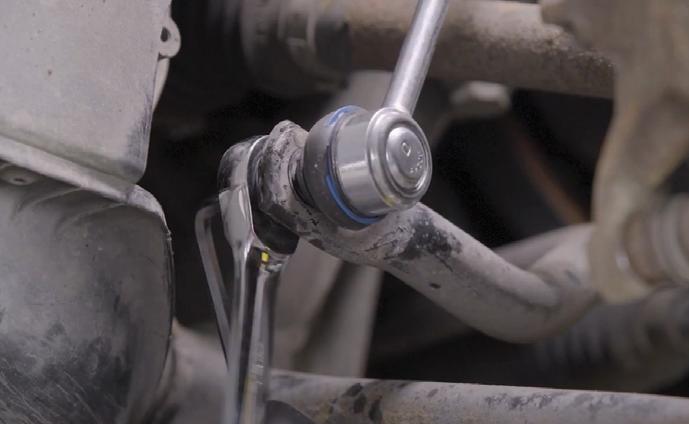
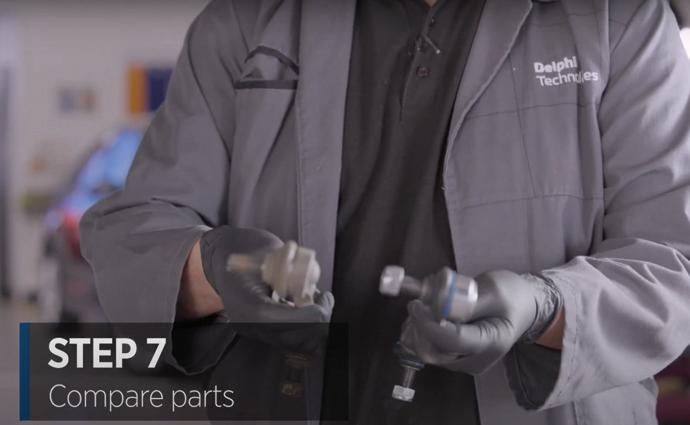

PMM MARCH 2023 21 WANT TO KNOW MORE? FOR MORE INFORMATION WWW.RDR.LINK/AAV006

BEST PRACTICE
Brake fluid: everything you need to know
each variation of brake fluid.
When it comes to vehicle maintenance, monitoring the condition of brake fluid rarely makes most driver’s to-do lists. This can lead to dangerous consequences for customers and a missed service opportunity for garages.

The best characteristics of a good brake fluid starts with the research and development work that goes into it, to ensure safety is paramount before it’s offered to the market. Without research and development first looking at the chemical composition and identifying the properties for the correct fluid for the application of vehicle, the brake fluid would not meet all the safety requirements that are needed.
The main requirements for brake fluids are high operation temperatures, good lowtemperature and viscosity-temperature properties, physical and chemical stability, protection of metals from corrosion, inactivity with respect to mechanical rubber articles, and lubricating effect. If a brake fluid does not meet all safety requirements, such as high operation temperatures, good low-temperature and viscosity-temperature properties, physical and chemical stability, protection of metals from corrosion, inactivity with respect to mechanical rubber articles, and lubricating effect, the required safety requirements will be affected.
It’s safe to say that brake fluid is safety critical and if the quality is insufficient this can lead to system failures in the brakes.
Brake fluids for hybrid or fully electric vehicles
Electric and hybrid vehicles are gaining popularity in the aftermarket and for such vehicles, you need to ensure you know what fluid is available that meets the needs of these vehicles. When the vehicle battery is full, the brake system can’t take advantage of regenerative braking and so the brakes will have to do all the work without any support from engine braking. This creates a

PMM MARCH 2023 23 TECH TIPS
Scott Irwin MIMI, head of technical training at TMD Friction’s aftermarket brake brand, Mintex, discusses why garages need to educate their customers on the technicalities around
need for a high dry and wet boiling point. In normal conditions, brakes will be used less due to the proportion of the work carried out by the regenerative braking, but they must still be in perfect working order when needed. This creates the need for enhanced corrosion protection.
Due to major electrical currents in the vicinity of the brake system, a lower conductivity fluid is advisable. As with all modern vehicles, the developments in ESP, ABS, ADAS and AD, means cars are going to put great emphasis on cycle time and frequency.
In turn this will place increasing demands on brake fluid lubricity and viscosity in the electric and hybrid vehicle braking systems.
Common mistakes
It’s true to say that mistakes will happen, but the main major mistake TMD experiences is not using the correct brake fluid tester to check the amount of moisture absorbed in the brake system. As most garages will know, brake fluid is hygroscopic.
This means they attract and absorb moisture from the atmosphere. This process will take place throughout the service life even though brake fluid is in a ‘sealed’ brake system, as water vapour molecules are able to slowly penetrate the flexible rubber brake hoses.
Over time, this results in a decline in the boiling point of the brake fluid and increases the risk of corrosion to metal components.
As the volume of moisture in the brake fluid increases, the boiling point will eventually reach a critical level where it is dangerous. This is why all European vehicle manufacturers recommend a complete fluid change periodically.
When testing brake fluid, the correct tool should be used. TMD recommends testing with a brake fluid boil tester. Something that the brake fluid manufacturer has also recommend over the years. While some testers only check the conductive element of the fluid, this is not the best way to test. The solution is to use a brake fluid boil tester that
will give you a more accurate test result. According to the braking firm’s experts, any brake fluid tester that does not actually heat the fluid is likely to give misleading or even dangerous results.

Changing brake fluid
Brake fluid should be changed every two years or if the boiling point falls below 200°C. If the boiling point falls below 180°C, the brake fluid must be changed immediately.
Brake fluids conforming to DOT 3, Dot 4 and DOT 5.1 can safely be mixed although the performance of the higher specification products will be diluted. Silicone (DOT 5) and mineral-based brake fluids should never be mixed with any other type.
If the bottle has been previously opened it is probably better to discard it and buy new, unless the technician knows the product is less than three months old and the bottle was resealed tightly.
For unopened bottles technicians should ask whether they know how old it is and how it has been stored. If it is still in a sealed bottle, less than 18 months old and stored in a cool, dry place, then it is likely to be quite
safe to use. If you don’t know how old it is, work out the age from the batch number.
If the level in the reservoir drops too far, there is a risk that air bubbles will be introduced into the braking system, which could result in the brakes no longer working.
The dangers of ‘wet’ brake fluid
Vehicle brakes work by clamping a brake pad or shoe against a moving disc or drum. The resulting friction generates significant quantities of heat. While much of this heat is intentionally dissipated to the atmosphere, some of it will inevitably be transferred to the calipers and wheel cylinders which contain brake fluid.
This will cause the fluid to heat up. If the temperature is allowed to approach the boiling point of the brake fluid, bubbles of vapour (gas) will form in the brake system. Unlike a liquid, a gas is compressible. Consequently, the next time the brake pedal is pressed, its travel may all be used in compressing the vapour, resulting in a complete loss of braking.
This phenomenon is known as ‘vapourlock’ and is, of course, extremely dangerous. The lower the boiling point, the greater the danger of vapour-lock occurring. By changing the brake fluid regularly this phenomenon can be avoided.
24 MARCH 2023 PMM
FOR MORE INFORMATION WWW.RDR.LINK/AAV007 TECH TIPS
WANT TO KNOW MORE?
“Brake fluid should be changed every two years or if the boiling point falls below 200°C. If the boiling point falls below 180°C, the brake fluid must be changed immediately.”

COMMON FAULTS
The importance of vibration damping
Vibration damping is critical for cars because it isolates noise and vibration from passengers and drivers. Overall, it restores driving performance as well as comfort and recreates the feel of driving a new car. Excessive vibrations of the engine and the road can even produce a leakage. Vibration damping is therefore important to lessen the transfer of vibrations through the chassis and into the steering and suspension systems, which can ultimately help to improve the vehicle's overall handling, stability and increase its service life.
Controlled material quality
Since the materials used can have a major impact on the damping's efficacy, highquality materials must be utilised for vibration damping in automobiles. Poorquality materials could make the damping components loose, requiring a steering correction. Moreover, ruptures or leaks in the damping material might lessen the material’s effectiveness, let vibrations through and ultimately lower the performance.
Potentially, premium materials can offer durable and efficient vibration damping, leading to a more comfortable ride and a longer vehicle lifespan. One example of a product when it comes to vibration damping would be Meyle’s original-hydro engine mount which is engineered for any type of transmission and useful for any combustion engine.

The company has an extensive range of engine mounts of solid rubber, hydraulic and even pneumatic switchable engine mounts. In fact, it is one of the first in the aftermarket that also offers switchable engine mounts for all common car brands. Its NVH (noise, vibration and harshness) range covers 80 per
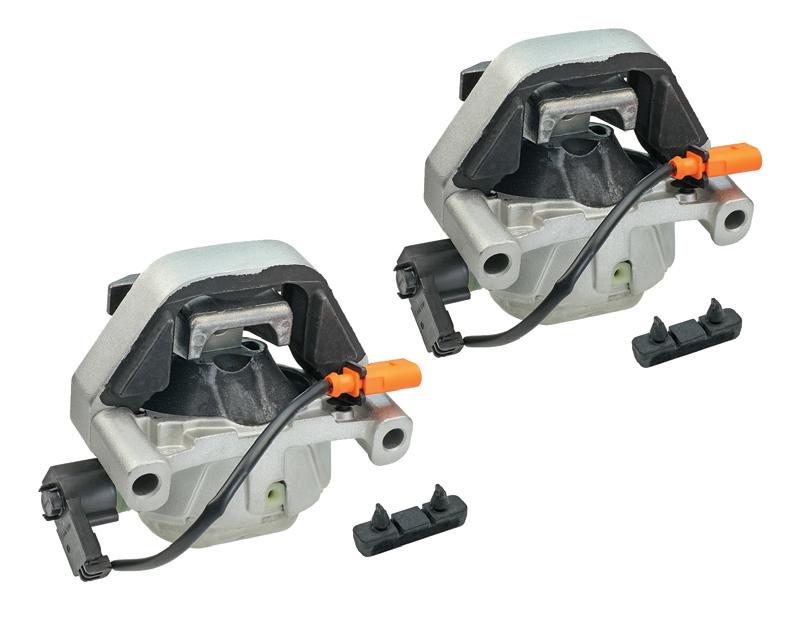
cent of the EU registered car parc. In order to ensure a long lifetime for its engine mounts despite the large static, dynamic and thermal loads, the company has used quality materials for the parts which are selected specifically for the vehicle and are subject to strict quality control from development to the finished product.
■ All Meyle original engine mount specifications are true to OE and the manufacturing process meets the standard IATF 16949.
■ Strict quality assurance by Meyle’s quality team and engineers.
■ Leakage test during production for hydro mounts.
Common faults
Oftentimes workshops don’t change the material in time. The durability length is often underestimated despite high quality materials. The items are subject to natural wear and need to be frequently inspected and maintained to make sure they are in good shape and that they are working correctly. It is recommended to replace the vibration
damping parts after between 80 and 100,000 km and after five years at the latest.
Our engineers advise workshops to replace the hydro engine mount in order to restore the original driving comfort.
Installation problems at the workshop and premature failure could be prevented. Often, insufficient production processes in low quality copies are the reason.
However, inadequate installation can also result in malfunctions or even the complete failure of the damping components despite good quality materials. That’s why the company goes one step further and offers different smart solution kits for different engine fastening types that aim to make a car mechanic’s life easier in the workshop. Changing the hydro engine mount, for instance, is facilitated by offering a set consisting of a left and a right hydraulic engine mount, including mounting material. Here, engineers recommend the replacement of both sides for full function and durability.
TECH TIPS 26 MARCH 2023 PMM
WANT TO KNOW MORE? FOR MORE INFORMATION WWW.RDR.LINK/AAV008
Michael Grimm, product manager of drive and power train at Meyle, gives his insights on why vibration damping is so important.


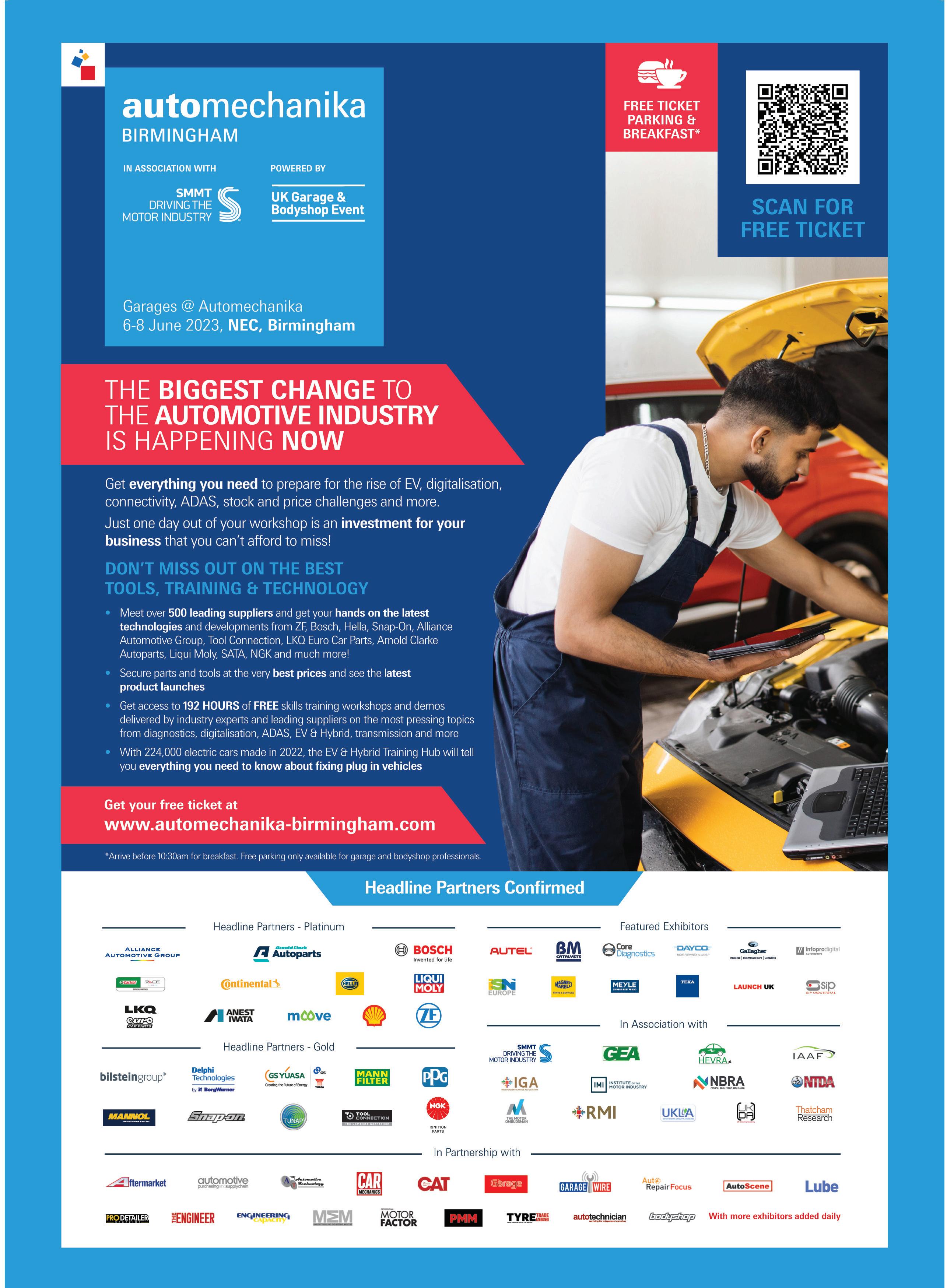
Join workshops from around the country who have been signing up to NGK’s new training initiative.
School for BRIGHTSPARKS
The ignition and sensor specialist launched the NGK academy last November and it has already attracted scores of leading independent garages eager to improve their vehicle knowledge.

The portal includes over 270 technical training videos across myriad technical subjects and components all delivered by automotive training experts Our Virtual Academy (OVA). The team has also created a suite of bespoke training videos on spark plugs with further NGK/NTK product-focused training being developed in the future.
Spark plug training videos, three of OVA’s core training videos and other existing NGK/NTK training content, are free to access for all once they have enrolled on the portal, but there will be a charge for accessing the full suite. OVA training videos cover topics such as:
■ Vehicle electrics
■ Petrol and diesel engine management
■ Chassis
■ Hybrid
■ HVAC
There are also comprehensive training videos on electric vehicles and access to
OVA’s dedicated content associated to the formally recognised qualification IMI Level 3 Award in electric/hybrid vehicle system repair and Replacement QFQUAL I.D 60314680.
Keeping up to date
Mark Hallam, marketing manager, NGK Spark Plugs said: “Many leading independent workshops have been quick to take advantage of our new training initiative.
WATCH!
To find out more about the NGK Academy, scan the QR code below

by providing the detailed information they need to fully understand the subject matter.
“In addition to the NGK training videos, NGK has purchased access to more than 270 training videos for hundreds of their customers on a wide range of topics including electric vehicles.
“It has been very well received. We have delivered hundreds of training courses and it is growing on a daily basis.”
“Automotive technology is changing rapidly and NGK academy will help technicians deal with the complex challenges that they face and which can help enable them to continue to have a successful career in the automotive industry for many years.”
One of the major attributes of NGK academy is the fact that as it is available online 24/7, 365 days of the year, training can be undertaken during downtime in the workshop which means there is no negative impact on business. Ben Stockton, managing director of OVA, said: “NGK Academy is designed to increase technicians’ knowledge

He added that the NGK technical introduction into spark plugs has proven particularly popular as has the leak-off testing solenoid operated diesel injectors course and the high voltage overcurrent protection course in the EV/Hybrid section.
Since launch NGK has been funding a three-month full access trial for members of its BoxClever independent garage loyalty scheme.
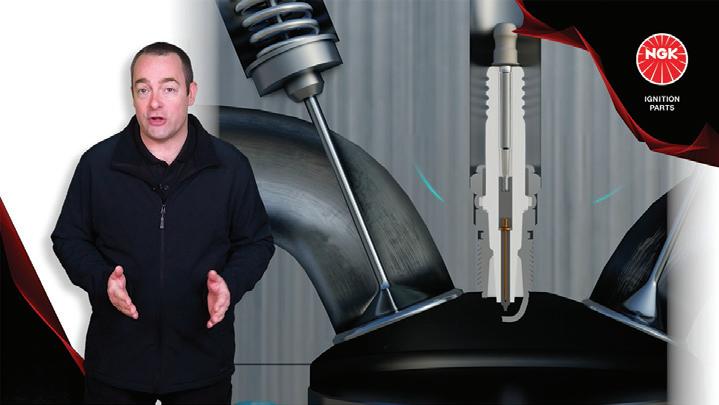
PMM MARCH 2023 29 BUSINESS & TRAINING
WANT TO KNOW MORE? FOR MORE INFORMATION WWW.RDR.LINK/AAV009
Alldata is adding labour times to its service data to help UK workshops further.
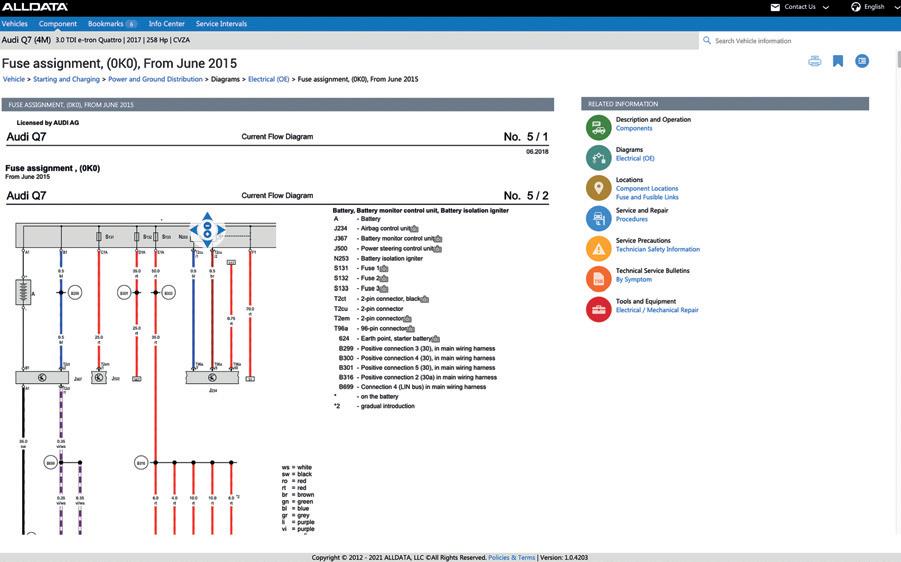

A UK INTRODUCTION
With more than 400,000 users worldwide, Alldata has spent the last 35 years establishing itself as a trusted partner to garages and bodyshops around the world. For any readers as yet unfamiliar with the service, the company republishes original and unedited OEM repair data to aid technicians working in the aftermarket to accurately diagnose and repair vehicles in their care.
With the increasing complexity in vehicle maintenance and repair in the market, the rate of change in the automotive industry is
accelerating at a faster rate than at any time in the past. More than ever before, garages need comprehensive and reliable repair and maintenance data. This allows technicians to offer a confident and professional diagnostic and repair service to their customers.
Alldata Repair launched in Europe in 2012. While the brand has gained a loyal following of subscribers in that time, to many garage technicians in the UK and Ireland, it remains a well-guarded secret. Following success in the German market, the UK operation is now scaling up its sales team, appointing a national team to widen the awareness of the product.
Furthermore, it will appoint selected valueadded resellers throughout the UK and Ireland to rapidly grow its subscriber numbers.
What data does the software contain?
With more than 12 million English language technical documents, original OEM repair information from 29 vehicle manufacturers is re-published in the software and the company recently added models from Toyota, Lexus and Cupra. The data is available under license from each OEM and brought together in one place –the Alldata website, accessible with one username and password.


Vehicles become more complex with the release of each new model. An annual subscription to Alldata Repair gives instant access to all repair data, as well as Technical Service Bulletins, diagnostic trouble codes and electrical systems/wiring diagrams. The data is offered with an intelligent search engine (offering text string matching technology) to enable the technician to find the data they need in seconds.
The portal offers 89,000 make, model, engine, year vehicle combinations, which equates to 95 per cent of vehicles on the road today. It also offers a library of three million technical drawings and wiring diagrams, with a database that is regularly updated.
It’s not just in the service, maintenance and repair garage environment where the service
BUSINESS & TRAINING
30 MARCH 2023 PMM
is instrumental: bodyshops with access can deliver OEM-quality mechanical and collision repairs. This includes body and frame, electrical systems, panel replacement and structural procedures.
Craig Scragg, a Retail Motor Industry Standards and Certification technical trainer gave his verdict on the software: “Alldata has helped me in various ways, from OE wiring diagrams to diagnostic codes, also including manufacturers’ removal and replacement procedures, including body panel procedures.
“I particularly like the wiring diagram aspect, as I know it is OE and comes directly from the manufacturer. I know it is as accurate as it can get.”
Labour times
Launched last month, Alldata Labour Times is designed to enable technicians to
confidently make repair estimates regardless of which make and model of vehicle rolls onto the forecourt.
Thanks to the collaboration with TecAlliance, a leading provider of aftermarket data, the software is now able to publish OEM repair times alongside its repair and maintenance data.
The labour times service is available to both garages and bodyshops as an add-on product to the standard subscription.
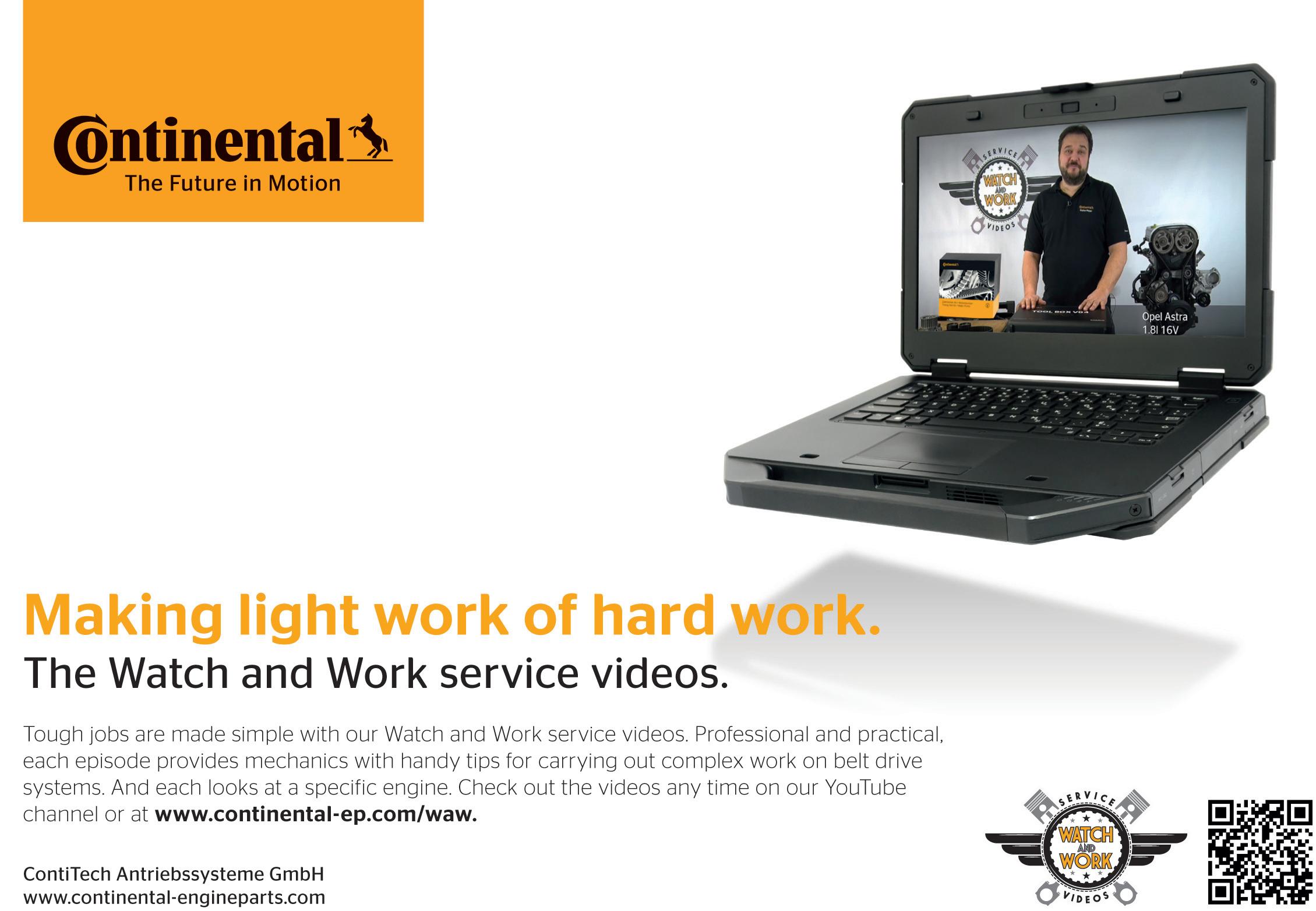
WATCH!
Scan the QR code below to learn more and discover how ALLDATA Repair works in practice

While this article marks Alldata’s debut in PMM, the brand exhibited at Mechanex in November last year. Product and technical experts travelled from its European headquarters in Cologne to highlight the product’s credentials and offer
demonstrations. According to the team, early feedback was encouraging.
Building on that momentum, Alldata’s exhibition trail will continue in 2023 with Automechanika Birmingham. The event will take place at the National Exhibition Centre between the 6th and 8th June. These events, with more potentially on the horizon, represent fantastic networking opportunities for existing customers and prospects. WANT
WWW.RDR.LINK/AAV010
TO KNOW MORE? FOR MORE INFORMATION
MAKE A PITSTOP
REPORTS FROM THE RACETRACK WITH LUCAS OIL-SPONSORED DRIVERTONY LYNCH


We’re at Lydden Hill Race Circuit, in Kent. It’s day one of a two-round racing weekend in the Retro Rallycross Championship. After a splendid start in Heat 1, gearbox problems adversely affect the performance of our Toyota MR2. We struggle around and finish back in fifth place.
Ahead of the season, the MR2’s racing gearbox had been custom-built and professionally remanufactured. It was all part of a plan to boost acceleration. The crown wheel and pinion had been changed, the gear ratios had been altered, which had certainly made the car faster.
As in F1 racing, quick engineering solutions are essential to rallycross racing success. The pressure to find them on race-days is intense. Unlike the mechanics in F1 pit lanes, once a rallycross heat is under way, paddock mechanics can’t influence the car in any way and there isn’t much time between heats to carry out major repairs.
GARAGE GAG
A friend has gone into business by setting up a garage that fixes car ignitions. It’sastartup.
The paddock mechanics can only respond with temporary clutch adjustments between heats. We struggle through qualifying and against all the odds, collect enough points to take third place on the front row of the Round One run off. Dramatically, the race-day ends in anti-climax and clutch failure just 10 yards after the start.
When we open up the gearbox, all the cogs are shot to pieces. What seemed like a good idea to improve performance failed after less than 30 miles of racing. Luckily for us, the limited slip differential (LSD) inside -which makes both wheels spin at the same time and gives us much more traction - was still in good shape. It is going to be a bit of a risk, but we decide to clean up the LSD and rebuild it into a spare gearbox that we always take to every race meeting.
Fancy a crack at a joke? Send in your (clean) attempts to fcoleman@hammerville.co.uk
The race might be over, but the real work has yet to begin. We are going to make the starting line-up for Heat 1 of Round 2 in the morning.
After a long night, day two racing is a completely different story. We get away quickly and the car is competitive. With reliability restored and confidence flowing, we race well in all three qualifiers. From front row of the final run-off, we finish the round on the podium in second place
Happy days, but let’s hear it for the mechanics in the paddock.
WITH
CONNECTIONS QUIZ





Try and figure out what connects each of the answers!
1. The Evora, Elise and Exige are all models of cars produced by which car manufacturer?
2. Which character did Danny DeVito play in the 1992 film Batman Returns?
3. What is the name of the 1976 sports drama written by and starring Sylvester Stallone?
4. Jim Beam and Jack Daniels are both producers of what type of alcoholic drink?
5. Name the missing suit of cards: Diamond, Heart, Spade and...?’


6. The oesophagus, stomach and large intestine are all part of which bodily system?
7. Which city is the fifth most populous in France, home of their largest airport?
8. Jacques Clouseau is the fictional, inept detective from which TV series?
9. Annapolis, Baltimore and Frederick are all cities in which American state?
Answers:1.Lotus 2.The Penguin 3.Rocky 4.Bourbon Whiskey 5.Club 6.Digestive 7.Nice 8.The
9.Maryland. The ?connection Biscuits
Pink Panther

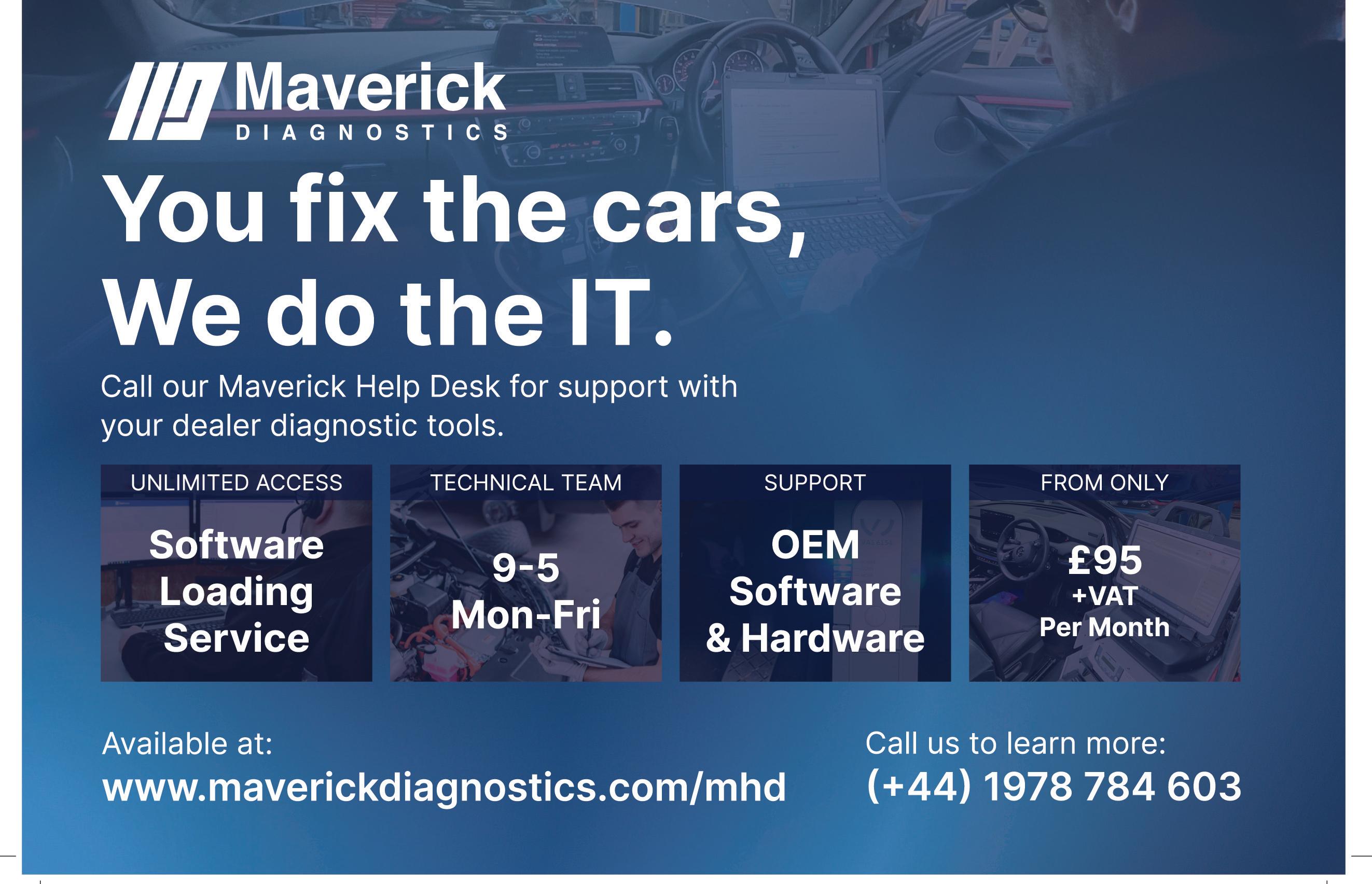
To EV, ornot to EV?
Whether or not to buy an EV or hybrid or stick to petrol or diesel is fast becoming the most confusing factor for a car buyer. Andy Brooke from Maverick diagnostics is here to clear some things up for PMM readers.


This is a hotly debated topic that everyone seems to have an opinion on from the EV ‘fanatical owners’ to die-hard petrolheads and everyone in between. So, let’s start by breaking down the different types of electric and hybrid vehicles available, both new and second-hand. This will also help garages decide if they should be offering EV servicing and to better understand the market.
Plug-in hybrid vehicles
A plug-in hybrid electric vehicle is probably the best solution for drivers who stick within their city limits; you will suffer no range anxiety because you’ve already got an engine attached to it. However, when it comes to the winter, all battery electric vehicles, whether hybrid or full electric, have a weakness. As soon you hit the heater or the heated seats button, your range drops dramatically.
Self-charging hybrids
Self-charging hybrids are a different to a PHEV as it doesn’t need to be plugged in and
generally contains a very small battery. It uses the petrol engine most of the time, and it cruises and pulls away from a junction with the electric power it charged when braking or slowing down. The range of a hybrid car running on full electric is only around one mile and is why I recommend a full PHEV for local runs on full electric. Overall, the hybrid system gives you a balance of economy that you can never achieve in a normal petrol car. Instead of delivering 30 MPG, a Prius will deliver 45 to 50 MPG on every occasion: from town to motorway.
MHEVs (mild hybrid electric vehicles)

MHEV is what it says it is; unlike a hybrid or self-charging hybrid, it is based on a 48 V rather than a 200 V (or higher) system. VAG group cars have a motor built into the flywheel. Other systems use a type of alternator/starter unit alongside a conventional starter motor which assists a conventional petrol engine for better economy. As with the self-charging hybrid, it also regenerates and charges its own battery when the vehicle is slowing down or braking. In reality, these cars will not be around after 2030 as their main benefit is tax reduction rather than emissions reduction.
Early BEVs
Older BEVs including the Nissan the leaf are very ugly but very functional, and it had a realistic range of about 70-odd miles on a good day in fair weather. The one I had was a very early 2011 24KWH model and it was utterly useless for longer journeys. Users immediately suffer from ‘range anxiety’ and even ‘range-apoplexy’. Eventually, the battery
SPECIAL REPORT
34 MARCH 2023 PMM
on my Nissan leaf gave up, which was very common in these early vehicles. Many Leaf owners went on to purchase modified larger battery packs, but this has become very expensive (anything up to £14K) and outweighs the cost of the vehicle.
New BEVs
Moving on to modern fully electric vehicles, like from Tesla, BMW, Toyota, Skoda, Audi, VW, Polestar, Kia, and MG. I have been lucky enough to drive them and they are totally different to drive; totally smooth and a bit of a revelation for an old petrolhead like me. It’s just a different experience altogether –you end up not looking at how fast you can go but how much battery you can save; driving does become a pleasure if you adjust your attitude to it. I think Tesla cars are the easiest to live with simply because a Tesla driver has access to lots of charging infrastructure, and if you buy the right model, you get free supercharging but these are getting busier every year.
Battery technology
In terms of battery technology, the difference between early and later BEVs is huge; the battery technology and chemistries are very different. The old Nissan Leaf had air-cooled nickel metal hydride (NMH) batteries with no heating or cooling –basically, the batteries were in a tin box. The modern EV often has an optional heat pump to warm the batteries in the winter and air conditioning or liquid cooling to cool the batteries in the summer. Its chemistry, being lithium polymer, is totally different. This type of battery extends the range massively and has evolved from mobile phone technology. As technology moves on, batteries have become far more efficient, and
battery life has been drastically extended. Tesla claims they will have the first millionmile battery soon, and Mercedes are making similar claims with their EQS model.
How far away is electric?
The answer to this will depend on the UK government’s policy. They have set a deadline for pure petrol and diesel vehicles to be replaced with electric or hybrid vehicles by 2030. In my honest opinion, the UK’s already overstretched infrastructure will not be ready. In part due to the average cost of a multiple high kilowatt charging station being over £500,000. Let’s use some simple maths to explain. The average petrol station has approximately eight pumps, services 20 cars

per hour and is open for eight hours a day — that’s 1,280 cars refuelled daily. Imagine the size of the field needed to charge all those cars for 40 minutes to 1 hour each.
To combat this, some manufacturers are already working on hot swap batteries, but again, this is pie in the sky at the moment. Others have been talking about installing inductive charging loops in the road — again, this is incredibly costly and could only really work in cities. Some UK cities are installing charging points in lampposts, which seems very good until you realise they can only provide very low kilowatt charging as the wiring infrastructure does not have the capacity for more. Although all these things will make a difference in the long run, the most significant impact will come from whether the government decides to ramp up tax for older diesel and petrol vehicles.
WANT
WWW.RDR.LINK/AAV011

TO KNOW MORE?
FOR MORE INFORMATION
In my honest opinion, the UK’s already overstretched infastructure will not be ready for the government’s 2030 deadline
The PRICE is RIGHT
With new car sales falling fast and motorists keeping their cars on the road for longer, the professional motor mechanic holds the keys to long term vehicle vitality. Recent years have seen the migration from parts to products as reliable vehicle fixes, not to mention the emergence of repair over replace. Underpinning all this is recent research confirming that motorists trust their mechanic to suggest high quality additives and lubricants, expecting these products to be top tier, not bargain basement. (Darren Darling refers to cheap as chips DPF Refill Fluids and DPF cleaning products for example as ‘Fire Juice’!) So, where’s your opportunity in this?
“The independent professional motor mechanic is, in effect, the fourth emergency service,” says Mike Schlup from Kalimex. “And for those workshops offering DPF services, they should have the JLM Lubricants range of DPF products centre stage. Because even the most badly blocked DPF can be cleaned on the vehicle and restored to normal settings – without a forced regen in sight.”
Here’s what Darren had to say about the JLM DPF Clean and Flush Professional Toolkit at the JLM Lubricants conference,


December 2022: “This toolkit is our friend. Data is of course key in determining the condition of the DPF so when the JLM DPF Cleaner is not the right choice we use this because it thoroughly cleans a badly blocked DPF. I can clean the DPF on a vehicle and not have to raise the DPF temperature to extremely high levels which incidentally runs the risk of thermal damage. A vehicle with a blocked DPF can come into my workshop at 5000mb idle engine spec, when it should be below 10mb. And I can safely use this toolkit to bring it back within good operating specification. After the clean, I will take the vehicle on a 20-30 minute road test. It’s always satisfying to return and see the pressure back in alignment – right down, job done!”
Forced regenerations
Darren is forthright about forced regenerations of the DPF, commenting: “Every month we see hundreds of damaged beyond repair DPFs due to poor attempts at repairing the car. This is frustrating for the motorist and for us having to tell them they must now replace the DPF at a cost of thousands. In principle, cleaning a DPF is simple. However, they’re easily damaged by high temperatures and a misuse of additives.
Kalimex, the UK distributors of JLM Lubricants products, argues that DPF specialists should take special care amidst the cost of living crisis to ensure customers aren’t hit with a hefty bill to replace their DPFs.
SPECIAL REPORT
36 MARCH 2023 PMM
This tends to happen when garages reset adaptations to get warning lights out when it’s not safe to do so or, when they conduct forced regenerations. The problem is on the rise with more garages now keeping DPF repairs and cleaning in-house. Most DPF cleaning equipment is advertised as a straightforward way to make a fast buck when it is not. But at whose expense? The motorist. This is why I only endorse the JLM Lubricants range of DPF products. They get it right first time, on time, every time.”
Of course, if you’re offering a premium service using best-in-class products this should not come at a bargain basement price. Reassuringly many motorists are not looking for the cheapest service at the lowest price –they want a service they can rely on. However, it’s worth pointing out that with the JLM kit, because it’s simple and low cost, the workshop’s investment is a fraction of the expense compared to leasing or buying a big machine, which means payback within only a
handful of jobs. For those workshops that still believe the only way to clean a blocked DPF is to either send it to a specialist or remove it from the vehicle, this is game changing stuff.

“You can be cost competitive using JLM products and still make a decent profit for your workshop,” says Barry Lawson, Ewan Lawson Motors. “Our sales are up on last year because our customers not only trust the products we use at the point of servicing and repair, but they also use them in between workshop visits as recommended by us.”
The JLM Lubricants range of DPF products also includes a Cerium Platinum DPF Cleaner to use at the first sign of a DPF blocking and a DPF Refill Fluid. JLM Lubricants also offers a Diesel and a Petrol Emissions Reduction Treatment – high specification formulas that are used in between workshop visits.
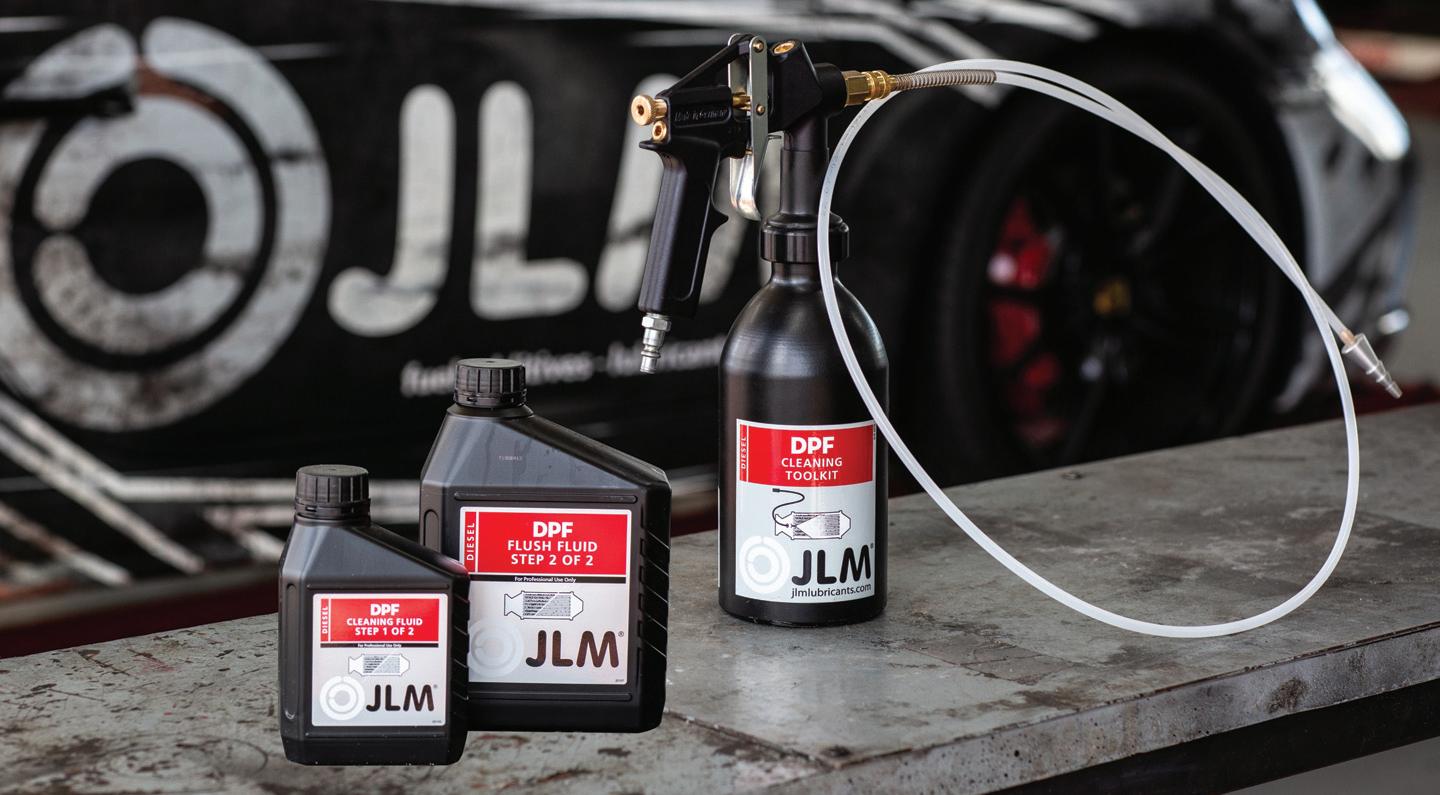

WANT
WWW.RDR.LINK/AAV012
TO KNOW MORE? FOR MORE INFORMATION
Do you work in an independent workshop? Are you an experienced technician with plenty of knowledge to share? Do you want to raise the profile of your workshop and be at the forefront of new
PMM
aftermarket. We care about educating and informing our sector and we know you do too! We want your help to make our media output the best it can be.


If you’re interested, email Kieran Nee at PMM@hamerville.co.uk We can’t wait to hear from you! SPECIAL REPORT
camera,
YouTube
LIGHTS,
ACTION! This is an opportunity for technicians and MOT testers of all ages and from anywhere in the UK to get their hands on the latest tools and products, get in front of the camera and provide cutting edge product reviews for the PMM
channel.
industry developments? If you have answered yes to all of the above, then we have the perfect opportunity for you and your workshop. We are looking for the best technicians in the country to join the PMM team at the forefront of the independent is looking for the next star
for its YouTube channel.
ADDITIVE strategies
Jody Bevan, owner of MnJ Autocare in Oldham, explains how garage efficiency and customer satisfaction can benefit from a clever use of additive technologies.
About this time each year, garages can expect distress calls from soft-top owners or classic car enthusiasts who can’t get their car started after a winter lay-up in the garage. “You can bet that it’s going to be a stale fuel problem, rather than a contaminated fuel problem”, says Jody.

“Because fuel octane levels fall quite sharply very quickly, re-starting problems after a lay-up can occur with cars that are either young or old, but it’s easily preventable. I use Lucas Oil’s fuel stabiliser in my own classic cars and advise all my customers to use it in theirs. It prevents the breakdown of petrol during vehicle storage, which works especially well with classics that only come
out for the summer months. It also means no need to drain the tank. As the product also cleans, lubricates and maintains fuel components, there are added benefits for both the user and the garage that supplied it.”

In the workshop
Jody introduced an additive strategy at MnJ after being hearing of the additives range by her local motor factor. Consequently, she was well informed and ahead of the pack on additive responses to the potential fuel problems generated by the introduction of the E10 petrol standard in September 2021.
“I knew Lucas Oil had a product called safeguard ethanol fuel treatment and I knew how to use it with my customer base. I think
this is a basic essential worth keeping handy in every classic car, in fact any car that wasn’t designed to run on ethanol fuels. If for any reason you can’t get any E5 fuel, you can add it to your tank and then use any available alternative fuel. I tell my customers it will help prevent internal component corrosion, combat the degradation of ethanol-based fuels caused by fuel separation and, consequently, protect their investment.”
WWW.RDR.LINK/AAV013
SPECIAL REPORT
TO KNOW MORE? FOR MORE INFORMATION
WANT
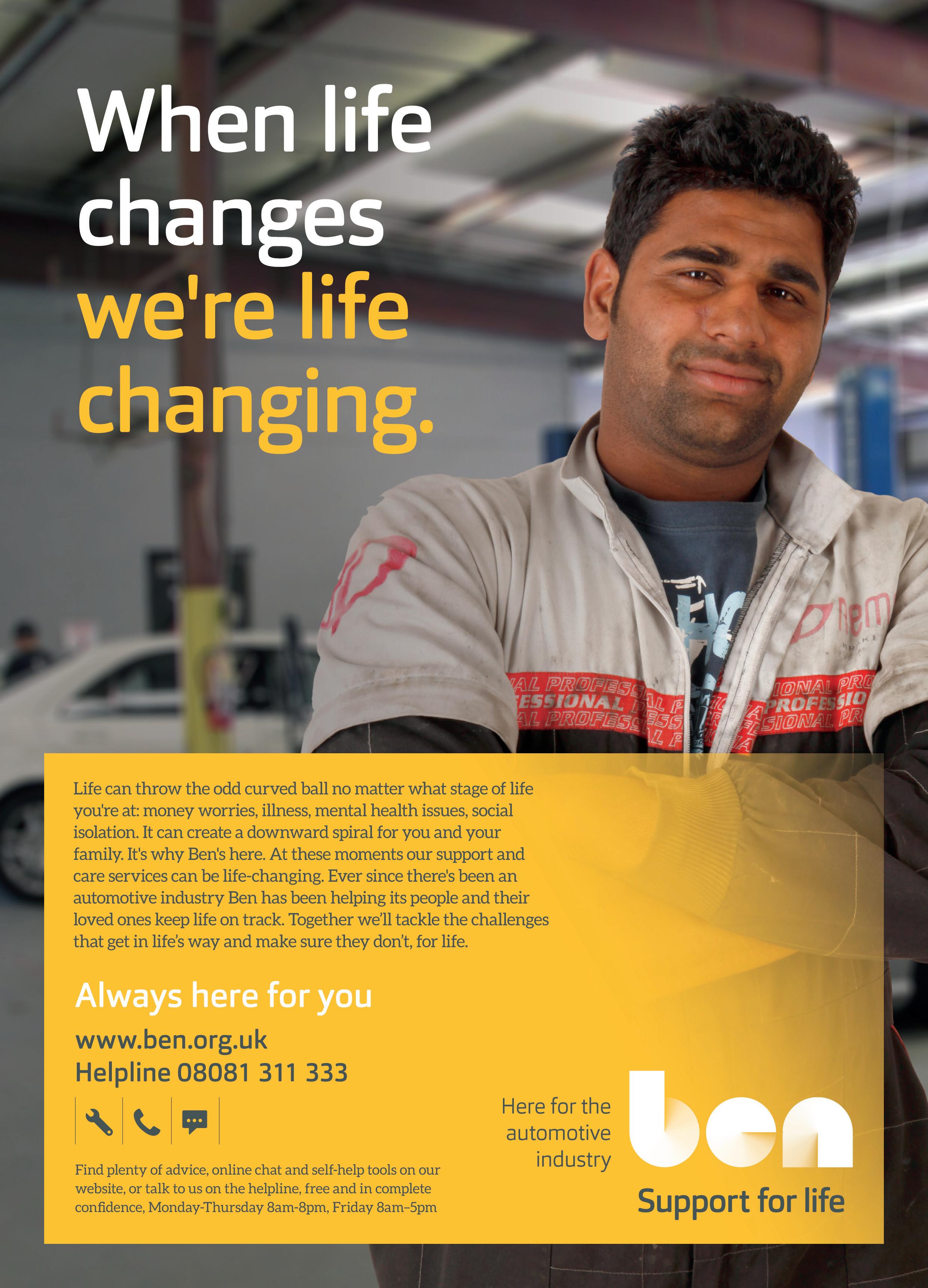
Maximise FUEL Savings
Could you increase your customers’ fuel efficiency this year? According to Wynn’s, cleaning the fuel system could maximise the mileage.
In the past year, the cost of living has increased, and as a result, motorists are feeling squeezed, particularly if they are unable to cut down on their journeys. Car owners need to get the most out of their vehicles by saving fuel and avoiding unexpected breakdowns and repairs where they can.
Current fuel prices present a massive opportunity for workshops to help drivers maximise fuel savings. For a vehicle to achieve good fuel economy, its fuel system must function efficiently.

Wynn’s advises that the easiest and most effective way to improve fuel system efficiency is to clean the whole system using a fuel treatment.
Total Action Treatment is claimed to be the brand’s fastest-acting all-in-one fuel treatment, formulated specifically to clean the entire fuel and exhaust system. It offers workshops an easy way to clean the system, restore vehicle efficiency and maximise fuel savings in an affordable way.
Removing deposits
One 500 ml treatment is poured directly into a vehicle fuel tank. When the vehicle is driven, the treatment cleans the entire fuel system from tank to tailpipe, removing deposits built up over time and mileage. As a result, the vehicle’s performance is restored and the engine runs more efficiently, delivering better fuel economy.
The treatment uses the latest additives technology to provide a total clean. It differs from many fuel treatments in the
aftermarket, which only clean up to the point of combustion and do not survive the combustion process.
Triple action cleaning
■ Before combustion – cleans the injectors, inlet valves and combustion chamber
■ During combustion – cleans the combustion chamber and exhaust valves
■ After combustion – cleans the turbo, EGR, catalyst, DPF/GPF
Total fuel system clean-up
The solution cleans all major parts of the fuel system:
■ Cleans and lubricates injectors
Restores injector spray patterns allowing better fuel delivery.
■ Cleans inlet valves
Improves cylinder seal and restores combustion efficiency.
■ Cleans the combustion chamber
Removes deposits from the piston crown, increasing cylinder volume and improving combustion efficiency.
■ Reduces clogging of the EGR – Cleaning the fuel system and restoring combustion efficiency reduces EGR deposits.
■ Cleans the turbo
Additives active after combustion allows cleaning of the turbo variable vanes and turbo wastegate.
■ Cleans the CAT, DPF/GPF
Additives active after combustion cleans the catalytic converter and gasoline
particulate filter and aids the regeneration of the diesel particulate filter. For diesel vehicles, Diesel Total Action Treatment uses special catalysts to aid the regeneration of the DPF by reducing the soot burn temperature. For petrol vehicles, Petrol Total Action Treatment uses the latest additive technology; PEA (polyetheramine) to help remove stubborn deposits from the fuel system, combustion chamber and exhaust system.
Benefits:
■ Maximise fuel savings
Improves engine efficiency by cleaning the fuel system and removing any built-up deposits, resulting in better fuel economy.
■ Reduce emissions
Cleaning the fuel system reduces exhaust emissions and smoke.
■ Extends engine life
Provides enhanced protection for the entire fuel system from damage caused by corrosion from newly blended ethanolbased fuels
■ Prevent breakdowns
Cleans and protects all major parts in the fuel system from wear and tear, preventing breakdowns and unexpected repairs.

WANT TO KNOW MORE? FOR MORE INFORMATION
WWW.RDR.LINK/AAV014
PMM MARCH 2023 41 EXHAUSTS & EMISSIONS
COMMON FAULTS
Engine Coolant Temperature Sensors
Nissens guides readers through the diagnosis of a faulty EC sensor
Although on first thought the engine coolant temperature sensor seems a relatively simple component, it plays a vital role in the overall engine management system, ensuring not only the proper working parameters for the engine and protecting it against overheating, but also the engine’s performance, particularly in regard to exhaust emissions and fuel consumption. A faulty sensor can therefore provoke various symptoms related to the engine’s operation, which can lead to problems with other parts or systems.
Background
The EC temperature sensor maintains the correct parameters within the engine cooling system, by monitoring and controlling the coolant’s temperature. However, many modern engines also utilise the sensor’s output signal for other engine functions, including to:


■ Adjust the fuel injection
■ Regulate the charge pressure
■ Set the exhaust gas recirculation quantity
■ Switch between cooling circuits (small and full circuit)
■ Switch or control the main or auxiliary cooling pumps
■ Activate/deactivate the start-stop system
The signal may also be used by other control units such as the heating, ventilation and air
conditioning control unit and the air conditioning compressor, that may influence the engine load.
The EC sensor uses electrical resistance to measure the coolant’s temperature, and there are two main types. The most popular is the NTC (negative temperature coefficient) that decreases resistance and the generated voltage when the temperature increases, but older applications may use PTC (positive temperature coefficient), which increases resistance and the generated voltage when the temperature increases.
The readout voltage signal generated by the sensor is forwarded to the engine control unit (ECU), which can then make adjustments to the engine’s and related systems’ performance. Depending on the car’s design, there may be more than one sensor applied by the engine. Typically, the sensor is mounted on the coolant inlet on the engine block or the cylinder head.
Symptoms of a malfunctioning
EC sensor
■ Check engine or service light
■ Engine in limp mode
■ ECsystem-related faultcodesstored by ECU
■ Increased fuel consumption
■ Increased engine emissions/smoking
■ Uneven/improper idling
■ Lowered engine performance
■ Engine stalling/starting issues
■ Engine overheating
■ Radiator fan does not start/stop
■ AC compressor does not start
Recommended troubleshooting
■ Various fault codes and sensor-related symptoms may have their root causes in other component failures. So, before blaming the sensor for breaking down, inspect other cooling system components thoroughly.
■ Inspect coolant level
■ Inspect the head gasket is intact/not leaking
■ Inspect the function of the EC system thermostat
■ Inspect the sensor’s electrical connection. Possible faults may cause signal interruptions, provoking faulty code generation and erratic temperature readings. Inspect the sensor’s wiring, ensure the connected socket fits correctly, the connector and pins are intact, and are
EXHAUSTS
42 MARCH 2023 PMM
& EMISSIONS
free from moisture or corrosion.
■ Perform OBD scanning to find related trouble codes. Read the OBD’s live data to control the coolant temperature reading from the sensor.

■ Using a multimeter, inspect the function of the sensor and the voltage signal sent to the ECU. Determine the sensor’s signal and ground lines. Connect the negative wire of the multimeter to the chassis ground and the positive wire to the sensor's signal line. Start the engine and inspect the voltage changes depending on the temperature. A healthy NTC sensor should read around 2-3 V on a cold engine and about 0.5 V at a warm engine. A healthy PTC sensor should read 0.6-0.8 V on a cold engine and 1-1.5 V on a warm engine. For both sensor types, 0 V readings may indicate power supply interruption or a short circuit to the ground, and 5.0 V will mean an open circuit.
Always consult the vehicle documentation to find the type of sensor and its correct temperature vs voltage values.
■ Disconnect the sensor’s plug and inspect if there is the correct voltage supply from the sensor (typically 5 V)
■ Having the sensor unplugged, inspect the sensor’s internal resistance, which should be temperature-dependent so place it in water and read the changes in the resistance. Consult the results with the given sensor’s type and model documentation.
A healthy sensor should read:
in 20 ° > NTC type: 2200-2800 Ohm, PTC type: 28-300 Ohm
in 80 ° > NTC type: 270-300 Ohm, PTC type: around 400 Ohm
WANT TO KNOW MORE? FOR MORE INFORMATION
WWW.RDR.LINK/AAV015

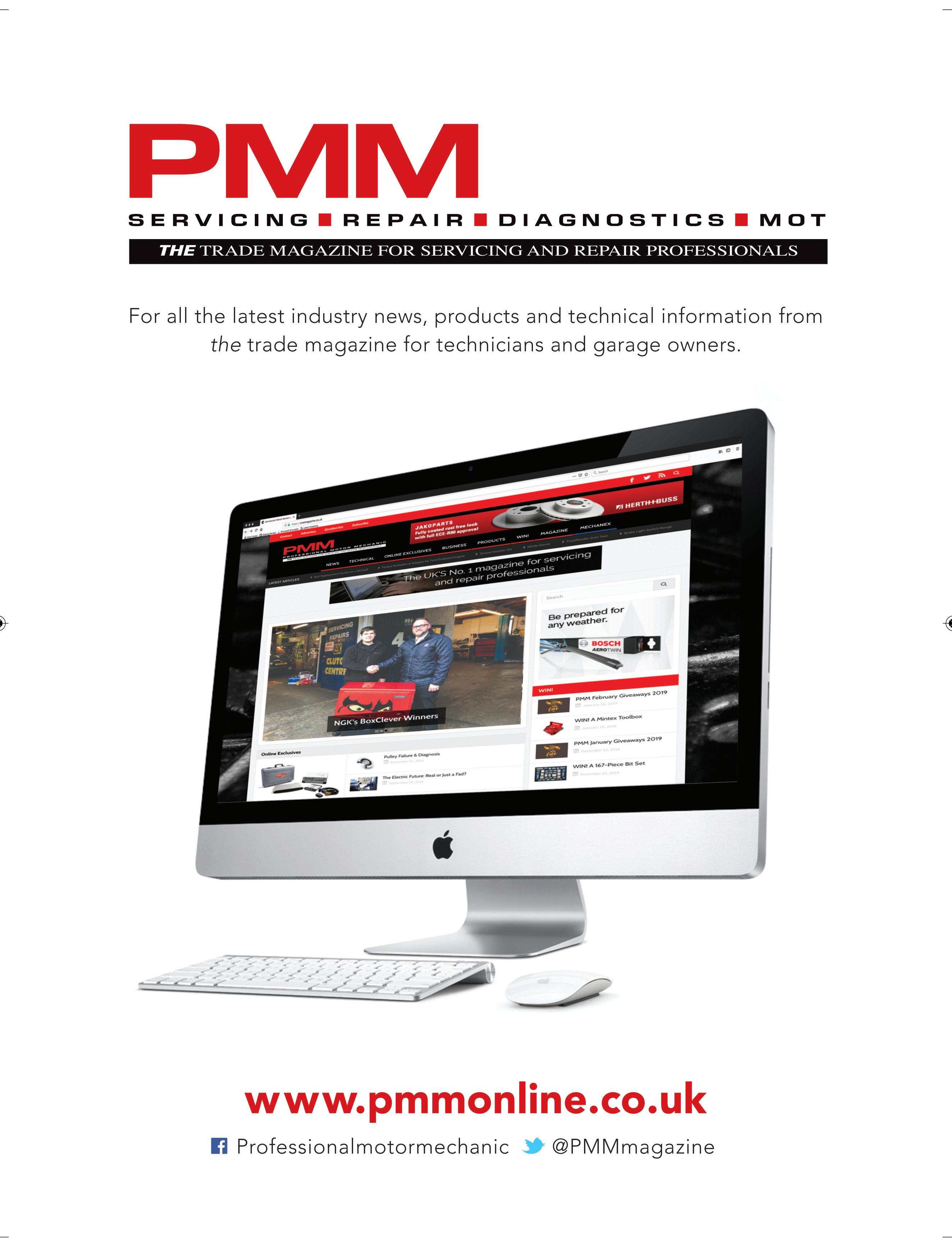
Cleaning FUEL INJECTORS
Do additives work? Yes, and they are essential too. The statement (usually not up for debate) we often hear is “additives do not make a difference”. This is an attitude that seems to be rooted in and passed down through the generations of mechanic folklore – without any consideration as to a) Is it true? b) Was it ever true? and c) If the answer to b is correct then is it still true?
It is worth clarifying a point here: Fuel additives have become synonymous with fuel system cleaners. This is where there can be a misunderstanding. Additives can be just chemicals that are added to the fuel to achieve certain goals such as fuel stability, reducing deposits or lowering emissions. A fuel system cleaner containing detergents is something that should do what it says on the tin – clean the fuel system! To have their full effect, additives need to be used consistently as they are designed to improve the quality of the fuel. It’s an important job.
Fuel system cleaners
In this article I want to refer to fuel system cleaners and in particular the ones that can clean hard-baked carbon from the injector tip, the piston crown, the internal workings of the injector and the intake valves.
The Worldwide Fuel Charter, a document signed up to by all engine manufacturers, states the following:


INFLUENCE OF DETERGENT ADDITIVES
Cleanliness of the injectors has become a higher priority because of high pressure injection systems. Modern engines, with their specified performance in terms of power, fuel consumption and emissions over time will depend largely on the cleanliness of their injectors.
Modern engines are using much higher pressure in their injector systems to allow faster fuel delivery as well as smaller droplet size to aid combustion. Deposits on, and in, the injectors interfere with that rapid and atomised fuel delivery and so interfere with (as stated in the charter) “power, fuel economy and emissions” of the vehicle. Indeed, we are seeing new types of deposits inside diesel injectors too caused by a combination of pressure/heat, fuel residue and changes in fuel composition through bio diesel.
Remember, a modern fuel injector will often be only a third of the size of a human hair – so it only requires the smallest of deposits to interfere with the precision and integrity of the fuel delivery.
With that in mind, and appreciating this is the car manufacturers’ own representative body saying this, then really every garage should be including a quality fuel system cleaner at every service (and charging the customer for it), in the same way that a garage would not think twice about changing an oil filter or a fuel filter (and passing on that cost).
Interestingly, research from 2018 suggests that 82 per cent of drivers are happy to know about services/treatments that are good for the car or save them money.
Quality fuel system cleaners, used periodically, will keep the critically important injectors free of power-sapping, emissions-increasing, fuel-wasting deposits.
The question now becomes, ‘do fuel system cleaners clean deposits?’ We can only speak for the results that BG Products produce but in the pictures here you can see before and after pictures of spray patterns.



Figs.1&2 show spray apertures from a diesel engine before treatment and 1,000 miles later. There is a significant reduction in the deposit around the hole.


In the injectors shown there is a clear difference in the quality of atomisation.


The positive impact of keeping injectors clean is not just lower emissions and better fuel economy, there is also a positive impact on components such as EGRs, DPFs and Turbos. This is a consequence of better fuel atomisation allows more efficient combustion and in turn that means less soot production.
A quality fuel system cleaner is vital for garage customers and will pay for itself though fuel economy alone, plus it will forestall other issues.
PMM MARCH 2023 45 EXHAUSTS & EMISSIONS
Paul Dobbyn, director of BG Products explains why fuel system cleaners are essential to the running of modern vehicles.
TO KNOW MORE? FOR MORE INFORMATION WWW.RDR.LINK/AAV016
WANT
Before After
InjectorA Hole 6 500X
REPAIR rather than REPLACE

Could Klarius Products’ range of flexi-pipes, pipe sections and mountings help you save customers an unnecessary full exhaust replacement?
Hanging out under the vehicle in the firing line of the road and weather, even a robust exhaust will break eventually. As a critical device for reducing emissions, any exhaust failure must be remedied, but a complete replacement can cost hundreds of pounds. If a customer has rolled up at your garage in a twelfth-hand banger, it may even cost more than the car itself. With UK motorists currently navigating a cost-of-living crisis, an exhaust replacement is a bill many will want to avoid. Providing a cost-effective and reliable solution will not only solve the immediate issue but also help to build trust by offering real support to customers.
If damage is localised to a specific part of the exhaust that can be easily repaired, then why replace the entire system? Klarius agrees, which is why it offers flexi-pipes, pipe sections and mountings for quick, easy and cost-effective exhaust repairs.

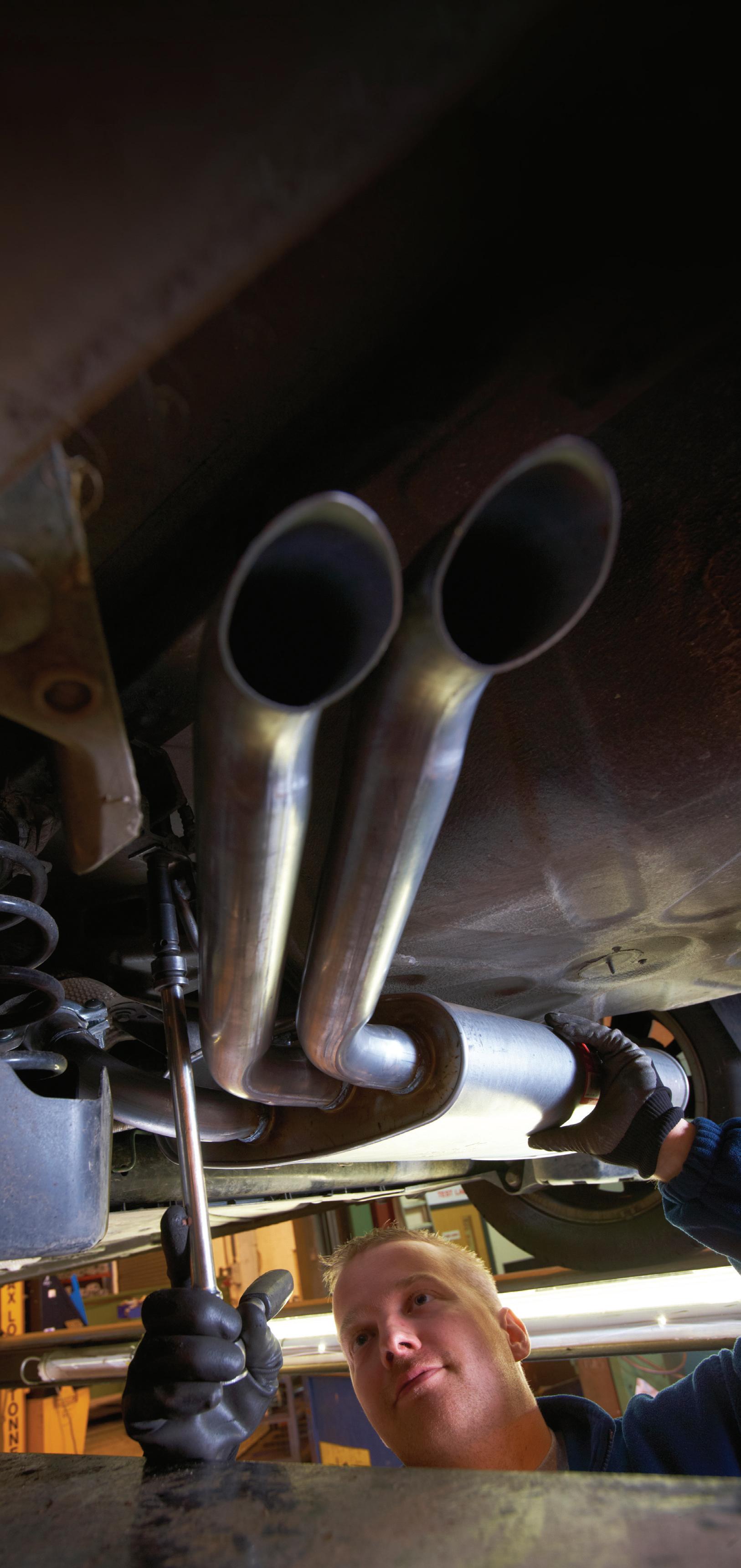
James Ellison, Sales Director at Klarius, explains: “We’re one of Europe’s largest manufacturers of aftermarket exhausts, with over 11,000 references ready to fit cars and vans of almost any make, model and age. This covers flexi-pipes, pipe sections and mountings, so whatever you have on the ramp, we’ve got what you need to do a longlasting repair at reduced cost.”
Cost-effective


Flexi-pipes, as the name suggests, are flexible elements in the exhaust system. They prevent the exhaust from being too rigid, allowing it to withstand vibrations and vehicle movements. With these mechanical stresses to deal with, they do sometimes fail. If the rest of the exhaust is in good condition, you can easily solve this problem by fitting a new Klarius flexi-pipe.

EXHAUSTS & EMISSIONS 46 MARCH 2023 PMM
Exhausts feature a lot of pipework, which is exposed to the road and can suffer impacts and corrosion. Rather than bin the entire exhaust, the company offers pipe sections as individual products, so that damaged areas can be sorted with cheaper, targeted fixes. Mountings are another common failure point for exhausts. They can perish or corrode, so replacing them is a big step towards securing exhaust reliability so the company offers specialised mountings to fit its entire range of exhausts, so any failure can be easily remedied with an exact solution.
In all cases, these repair components offer a large cost saving compared to an entire exhaust replacement. As a consequence, you can help your customers avoid a big bill

during a challenging time, all while safeguarding the reliability of their car or van.
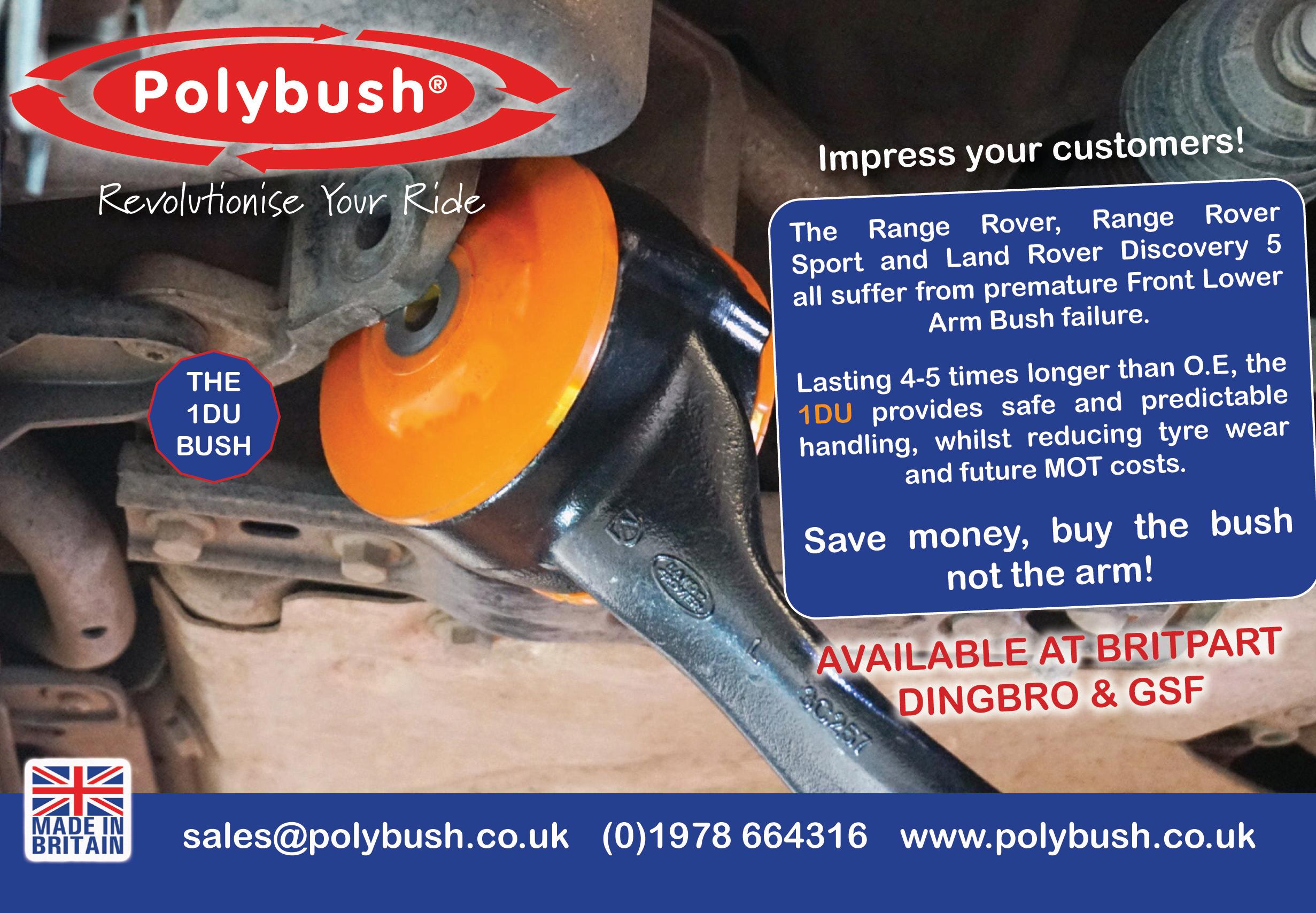
As a garage, you want repairs completed promptly and to a high standard. Repairing an exhaust is often quicker than a full replacement, helping you get onto the next job faster. This improves your productivity and profitability. Furthermore, there are opportunities to upsell. Assessing the condition of the exhaust, you can spot areas where failure is imminent and mitigate the chance of a breakdown. If a pipe is damaged, why not take the time to replace those old mountings while you’re already underneath the car? As well as improving your opportunities for profit, you’re boosting your reputation with customers too.
‘Fit first time’
Every Klarius product is supplied with a 2year standard warranty and a ‘Fit First Time’ guarantee, providing the assurance that your repair will last a long time on the road. Furthermore, the company tests its products on vehicles of correct make, model and production year – meaning that any replacement part is ideally suited to the car on your ramp. Consequently, vehicle performance and efficiency are preserved and overall exhaust service life increased.
WANT
WWW.RDR.LINK/AAV017
FOR
TO KNOW MORE?
MORE INFORMATION
Q&A
PMM Interviews BM Catalysts’ Mark Blinston
BM Catalysts’ commercial director Mark Blinston outlines to readers of PMM what they can expect to see coming down the pipeline.

What new exhaust technology can we expect to see coming onto the market in the near future?
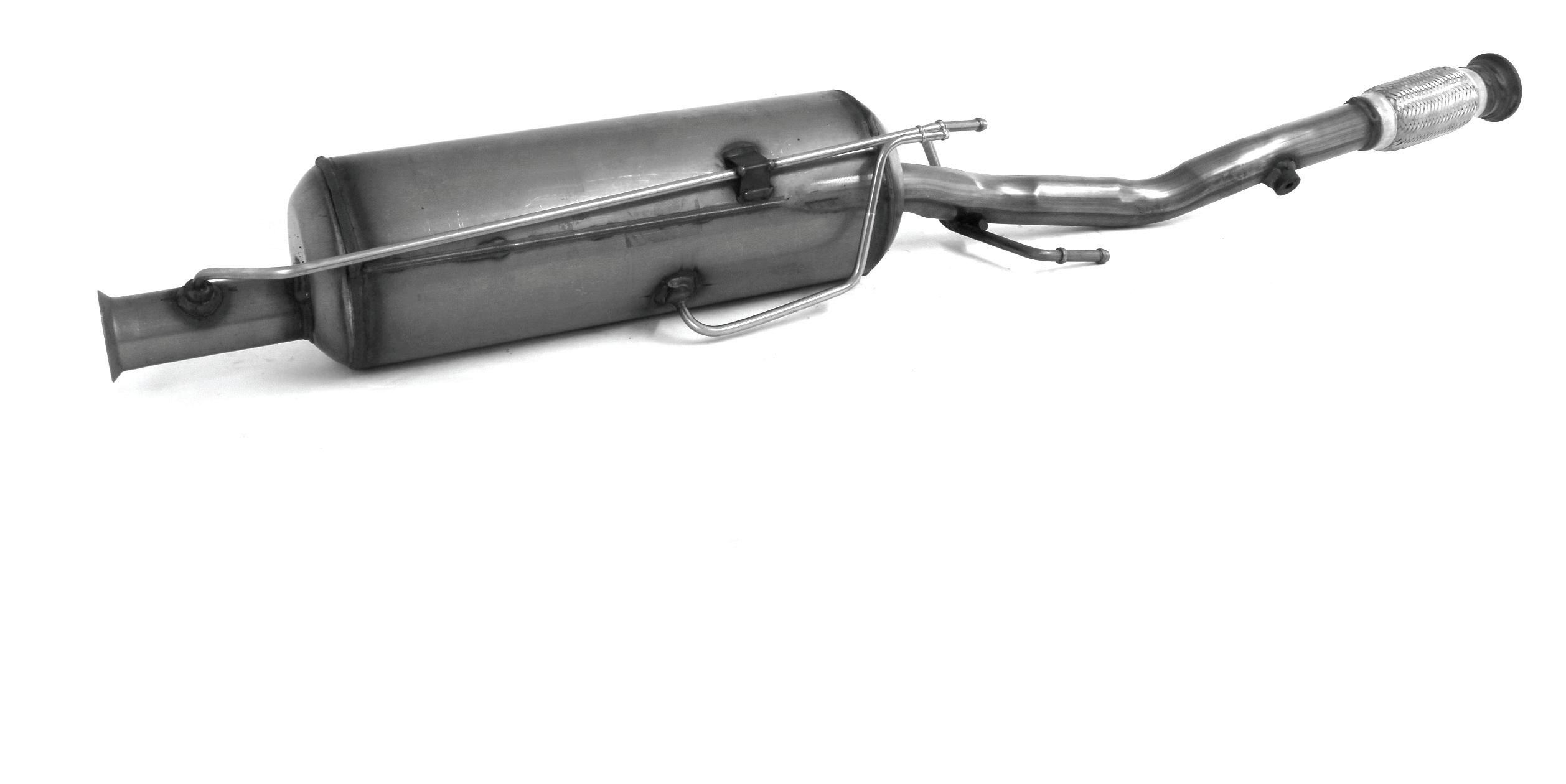
Vehicle manufacturers have been using different technologies that are yet to reach the aftermarket – and probably won’t for a few years yet. These include Lean NOx Traps and ammonia slip catalysts, plus gasoline particulate filters which are expected to reach the aftermarket much sooner than the previous two.
Last year we introduced our first selective atalyst reduction references which function to reduce a vehicle’s nitrogen oxide emissions by up to 90 per cent, while also reducing hydrocarbons, carbon monoxide and particulate matter emissions. This technology has become commonplace to treat emissions from diesel engines over 1.6 litres following the introduction of Euro 6 emissions standards in 2015, which cut permitted NOx emissions by more than 50 percent.
The biggest change that is on the way is the recently announced Euro 7 standards, which are said to come into play in 2025. These new standards pose a welcome challenge as the world looks to be more environmentally conscious.
Why is exhaust technology still evolving?
We try and differentiate between hot end emissions control and the traditional exhaust –both are very different technologies. Hot end
emissions technology, such as that produced by BM Catalysts, is still evolving as it has to meet the ever-tightening requirements for modern-day combustion engine emissions. With the global awareness of requirements to improve air quality for a cleaner future, we are constantly stressing the need for the automotive aftermarket to clean up its act and
clamp down on the use of poor-quality emissions control devices.
Despite the 2030 ban on the sale of new petrol and diesel cars in the UK edging ever closer, vehicles with internal combustion engines will still have a considerable life even after they can no longer be sold as new. Therefore, it’s important to constantly evolve technology to meet the market demands and tighter legislation on vehicle emissions.
BM Catalysts has an ongoing commitment to provide customers with a wide choice of high-quality aftermarket products and an uncompromising approach to research and development is identifying additional fitments to offer even greater choice to garages.
Was the Government wrong to put its eggs into the EV basket when ICE vehicles are becoming ever more efficient?
In our opinion, yes: the charging infrastructure is not where it needs to be for the expected demand; the cost of electric vehicles is still too high; and hydrogen ICE is presenting itself as a potentially more feasible solution to air quality issues.
It’s definitely a way forward to improve air quality and reduce harmful emissions, which needs to happen fast. However, there are more sustainable and cleaner ways of powering mobility than just EV. This also poses the question of whether electric cars really are zero emissions?
EXHAUSTS & EMISSIONS 48 MARCH 2023 PMM
“We are constantly stressing the need for the automotive aftermarket to clean up its act and clampdown on the use of poor-quality emissions control devices.”
ICE is more efficient than ever before, and tailpipe emissions are less of the total vehicle emissions than they used to be. There are braking and tyre and suspension emissions to also consider, with each component creating pollutants – not necessarily contributing to air pollution, but there are environmental factors, nonetheless.
As discussed, the automotive aftermarket already has solutions available to clean up the country's vehicle parc and ensure these cars' emissions are as low as possible, so there’s increasing scepticism about whether the approach to ban new ICE sales and fully back electric vehicles is the right one.
The Government is continuing to introduce new legislation to improve air quality, and while this may help, radically enforcing change to the UK vehicle parc will burden motorists with the high costs of changing vehicles.
Does a proliferation of exhaust technologies make life harder for drivers and aftermarket technicians?
Yes, simply changing a hot end emissions control product will likely not cure a vehicle issue, it requires thorough investigation. With technology ever changing to include more products, it could be a very costly mistake if correct diagnosis isn’t made first.
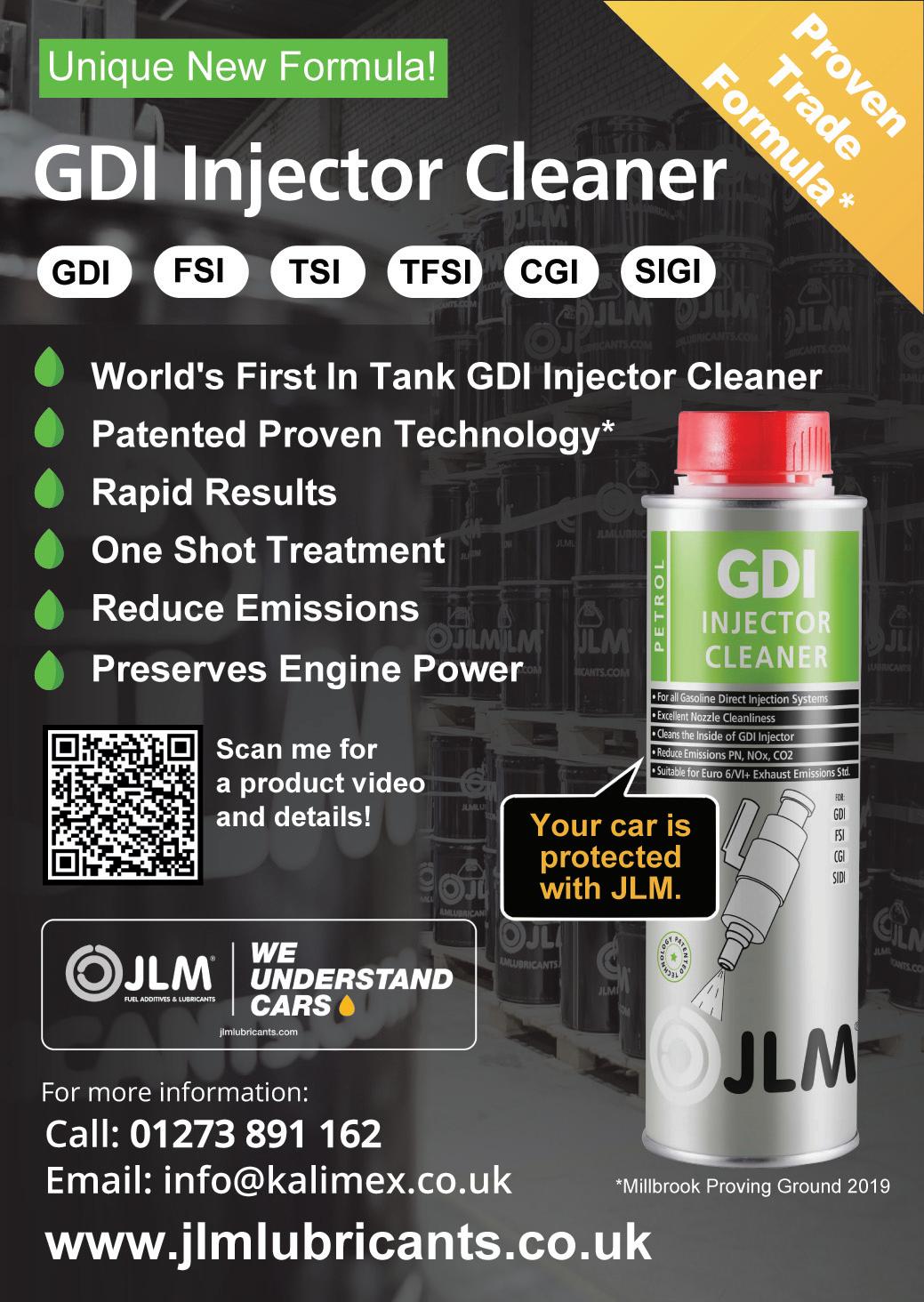
It’s important to provide a comprehensive range of emissions control products to meet the needs of the expansive vehicle parc. Compounded by changes in emissions legislation there is lot more exhaust technology on the market that can potentially cause confusion for technicians.
With the average lifespan of a vehicle topping 20 years, the internal combustion engine will remain a key player in the aftermarket for a long time to come. The world will no doubt change with new forms of mobility and new ways of powering vehicles emerging, however the aftermarket is well placed to continue to service legacy vehicles.
WANT
WWW.RDR.LINK/AAV018
Introducing rdr.link
A new digital service for our readers
With a wide array of online resources supporting the latest solutions – from videos to technical guides, PDFs to Podcasts – it can be a challenge to locate what you need.
To ensure you don’t miss out on these valuable resources, we are introducing rdr.link – a new, rapid service to transport you immediately to the online resources mentioned in our stories.
So, in articles you may now see things like: “To view an exclusive time-lapse video of the process use rdr.link/AA101”
Simply enter rdr.link/ with the unique 5 digit code into a browser and it will take you directly to the mentioned resource – in this case the video.
Designed to help busy professionals rapidly locate more information – look out for & use rdr.link
TO KNOW MORE? FOR MORE INFORMATION
“With the average lifespan of a vehicle topping 20 years, ICE vehicles will remain a key player in the aftermarket for a long timeto come.”
rdr.link

The TOOLS for success
and looking after
As a technician, you know how important it is to keep your tools in good shape as tools that are rusted, dulled, or are missing parts mean that you'll have to work harder and longer to get the job done.
One way to extend the life of your tools is by properly caring for them. If you neglect your equipment, you may end up having to buy new tools sooner than expected, resulting in unnecessary costs for your workshop.
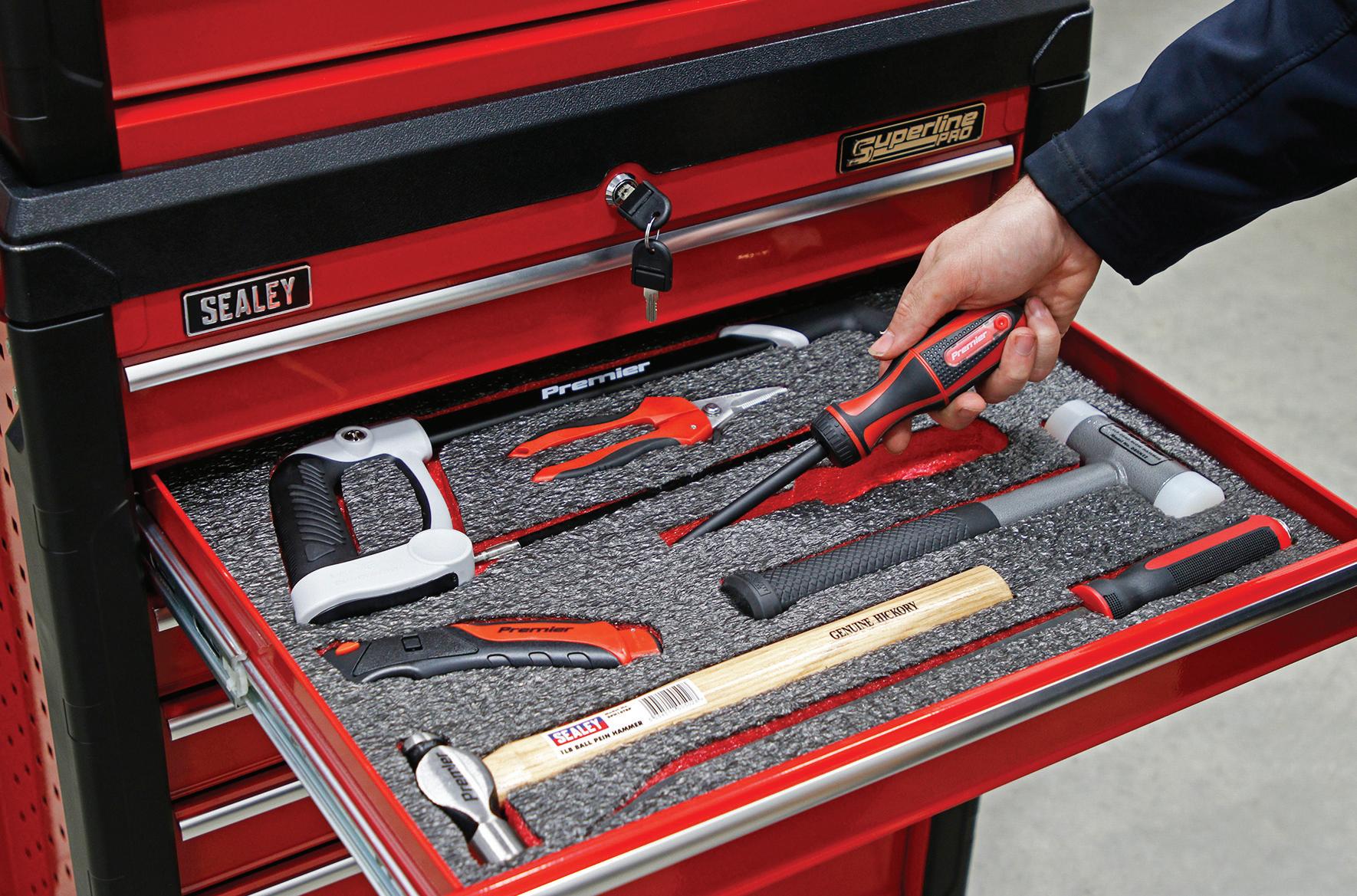
It also good practice to inspect your tools after every use. This involves checking for loose fixings, cracks on power tool handles and removing any sign of rust and corrosion. Sealey’s range of lubricants and aerosols can help with corrosion protection, including the SCS201 rust remover, SCS010S maintenance

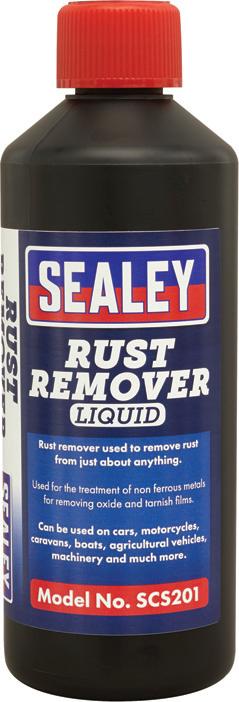
lubricant, SCS019S fine oil lubricant, and SCS012S clear grease lubricant. If the tool is beyond maintenance or repair, it’s crucial to replace it before further use. Defective tools and equipment are a major cause of injuries. Power tools are standard in many industries since they make work easier and help to perform tasks with more accuracy and precision. However, a defect in these tools can significantly impact workers’ safety.
When sourcing replacements, it might be tempting to opt for the cheapest model, particularly in today’s financial climate. However, this can often be a false economy as they may not offer you the same
lifespan as higher-grade tools. All Sealey’s premier hand tools are manufactured from high-quality materials to exacting standards said to ensure a long and durable life. They are also backed up by a lifetime guarantee, offering you peace of mind and many years of service ahead. Sealey’s premier power tools also offer a three-year guarantee. A proper storage system is also vital. If each tool is suitably protected it will reduce wear and tear, preserving the lifespan of the tool and saving you money in the long run. Sealey’s shadow foam, for example, offers protection for your tools. It is specifically formulated with a unique, high-impact resistant structure, ensuring your tools stay protected and organised during transportation. Whilst the visual tool management that the insert provides guarantees a quick and efficient tool inventory.
Storing your tools
Unlike traditional dividers and racks, shadow foam inserts are endlessly adaptable. The cutting process is clean and simple and the high-quality, multi-layered construction peels away easily, supplying a secure fit for all your valuable tools. This ensures a more professional finish is achieved than with alternative foam-grade inserts. With a choice of colours and depths available, it is easy to select the ideal insert to complement your toolbox. By following these general maintenance steps, you will get the best payback from your tools. Cleaning and storing them correctly and inspecting them regularly will help ensure you will always be able to use the tools effectively when you need them most.
PMM MARCH 2023 51 TOOLS & GARAGE EQUIPMENT
Tool specialist Sealey gives its advice on maintaining
the tools in your workshop.
TO KNOW MORE? FOR MORE INFORMATION
WANT
WWW.RDR.LINK/AAV019
“If you neglect your equipment, you may end up having to buy new tools sooner than expected, resulting in unnecessary costs for your workshop.”
A KEY addition
eating into your margin. Historically, tokenbased machines were more advanced than non-token based, however this is no longer the case.
Manual vs automatic
to get started in offering a spare key service you will need a key programmer, a key cutting machine and a transponder cloning device.
Margins are huge, aftermarket remotes for everyday cars will usually cost £20-£40 and the price a customer will be charged is usually £100-£200. Often the actual job start to finish will only take 15 minutes. Not only is this a good revenue stream, it will attract new customers that would have otherwise gone elsewhere.
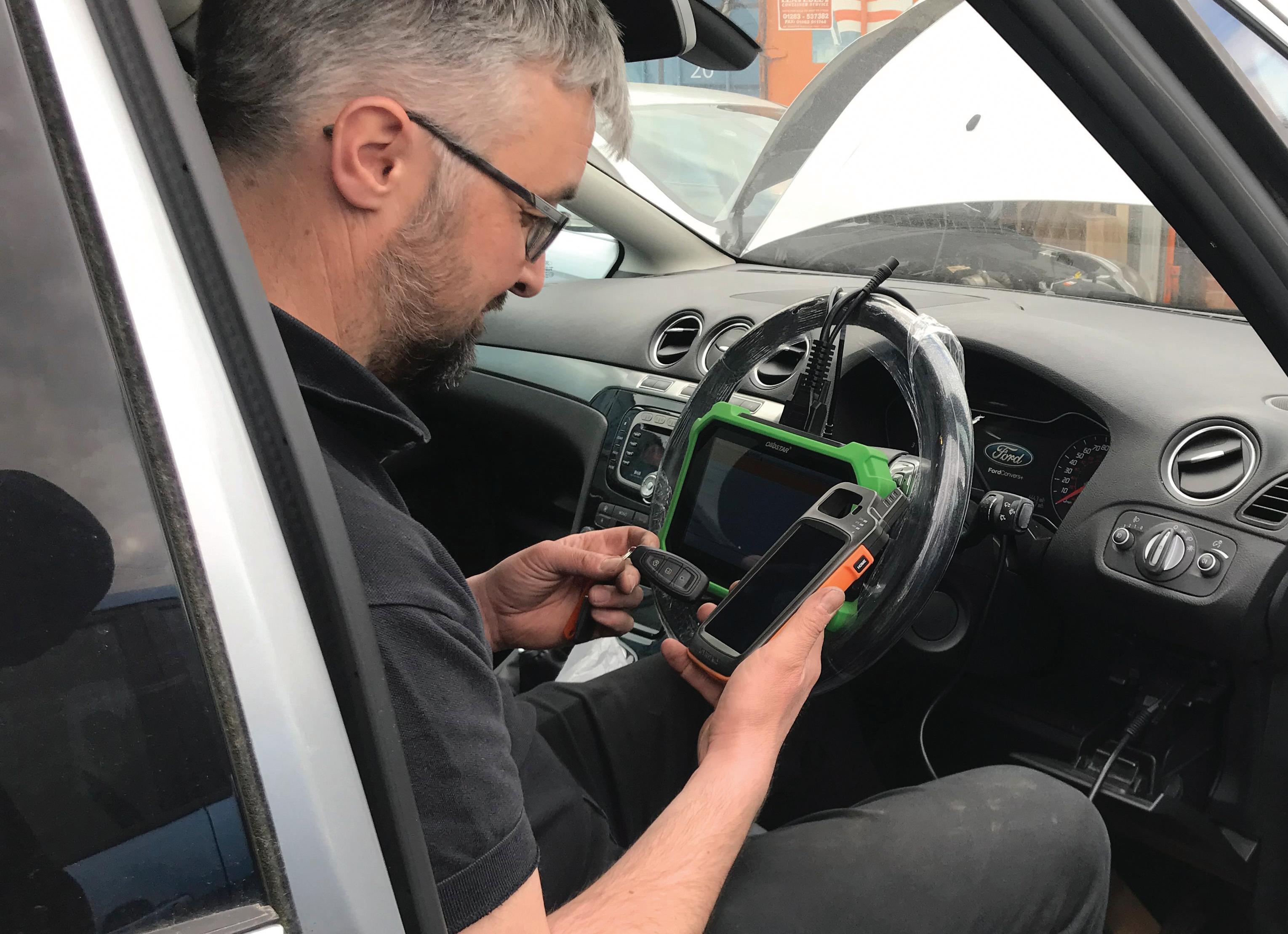
Key programming devices

Many high-end diagnostic devices have some form of key programming functionality, however if you want to be serious about programming keys buy a dedicated device. On the flip side, using a key programmer with diagnostic functions as your main diagnostic tool is not recommended.
The safest option would be an all-round key programmer that would handle multiple brands, devices from brands such as Obdstar, Xtool and Lonsdor. You can spend £500 all the way up to £10,000 on devices out in the market, with some promising to programme the world; but the sweet spot is around £1,500. At this price point you will get a good all-rounder and there is no need to spend much more.

A trend seen with manufacturers is the charging of “tokens” for using a key programming device, this should be avoided at all costs — otherwise, you are simply

Key cutting machines can be broken down into two main categories, manual and automatic.
A manual machine will use a tracing technique, quite easy to use after a bit of practice and cheaper to buy than an automatic. You are often limited to a type of profile depending on the machine you choose, and the work is all done by the user. Manual machines are okay and if budget is an issue then buying one can get you started. For a manual machine Xhorse offers machines ranging from £400-£800.
Automatic machines are electronically controlled and the user just needs to load the key and select the correct options on the screen. The machine does all the work and can be left to cut unattended, most automatic machines cover various types of keys and if budget allows then this would be the route to take. There is a huge range of machines
52 MARCH 2023 PMM
TOOLS & GARAGE EQUIPMENT
Key cutting and programming is easier than ever for workshops to benefit from. Autowave argues this is a revenue stream you could be taking advantage of.
available on the market ranging from £1,500 all the way up to £10,000, but often the more expensive machines offer the same functions as mid-range machines. Spending £1,500-£2,500 on a machine will be more than sufficient and a good machine should last many years.
Transponder cloning devices are useful when offering a customer a manual spare key — a key that starts the vehicle but doesn’t have a remote. They offer a quick and easy solution for many types of spare key
scenario. Devices are not expensive, usually around the £100-£150 mark. Xhorse offer a mini key tool which is considered the industry standard.
Training
Buying the equipment is one thing but having training and using it properly is another. Autowave offers onsite and webbased training, as well as a plethora of YouTube tutorials.

Ongoing support is another huge factor as devices are constantly being updated and you will always come across a vehicle for the first time, often with the customer breathing down your neck. Autowave offers varying levels of support packages and with most of the devices it can log in via TeamViewer and walk you through the job remotely.
Pricing varies with keys and there is no set formula, however because the margin is great it doesn’t mean discount is necessary. The company have seen most garages making between £70-£120 profit on a spare remote key, whilst remaining competitive.

Job selection
In an ideal world you would say yes to every job, but it is recommended that beginners avoid “all key lost” scenarios. Basically, if the customer can’t drive the vehicle to you with an existing working key, then leave it to a mobile auto locksmith. These types of job not only require lock picking/decoding skills but often have a totally different programming method which is not recommended for a less experienced technician.
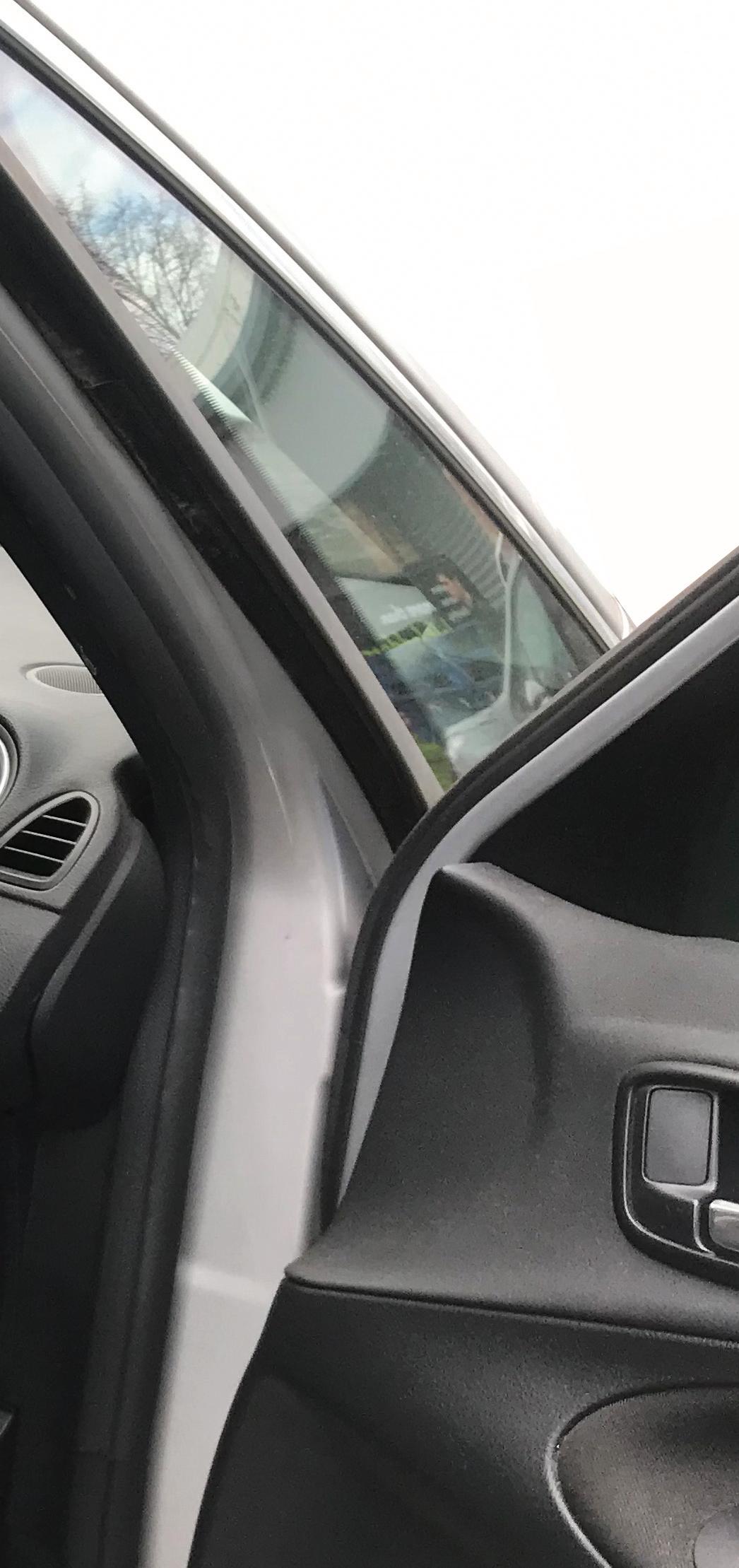
The jobs to promote are the everyday cars, not too new, not too old. Renault, Citroen, Peugeot, Ford and Vauxhall are a few brands that come to mind. These vehicles are relatively easy and offer a great margin, whist also being in abundance. Once you have cracked it with these brands you can start expanding your offering and before you know it, offering a spare key will be a standard practice.
WANT TO KNOW MORE? FOR MORE INFORMATION
WWW.RDR.LINK/AAV020
What will 2023 bring for GARAGE EQUIPMENT?
UKCA marking: as I have raised the awareness of this subject on many an occasion, I felt it only correct to let the readers know of the government changes announced in late 2022. As many of you will recall following brexit, one of the many changes that was to be introduced in the UK was the stopping of the acceptance of the EU’s CE safety test/marking scheme and the start of our own scheme known as the UKCA mark. This was first due to be implemented at the end of 2021, but was deferred to the end of 2022. However, back in November the government again postponed the mandatory implementation of the UK scheme until the 31st December 2024. In simple terms, this means EU tested and certified items can still be imported and sold in the UK using the CE mark.

MOT changes
What other changes are we expecting in 2023? Well, one such area for our industry is the DVSA MOT testing scheme. Starting back in 2019 the DVSA started rolling out connected MOT testing equipment. The main purpose of connected MOT equipment is to
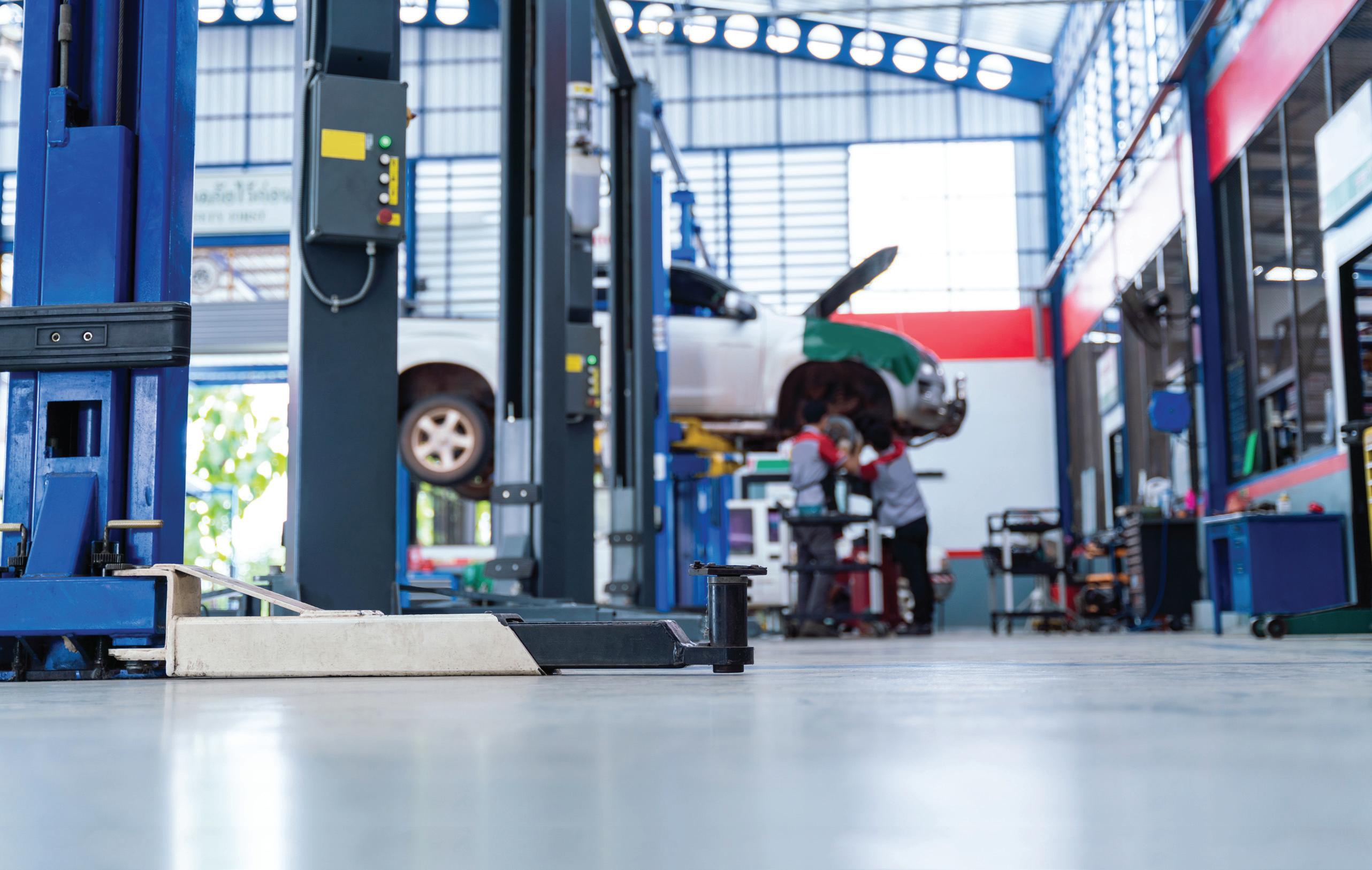
help the busy MOT stations do the job mor easily and help drive down unintentional errors in data transferring. Since 2019, when the RBTs first went connected we now have connected decelerometers, connected exhaust gas analysers and diesel smoke meters. At the point of writing this article we are
years since the first connected equipment was introduced by the DVSA, so we do not need to think of this as new technology anymore but see that it’s technology that works and helps improve the MOT tester’s life, the AEDM’S job and the MOT business as a whole.
The GEA also holds the complete list of DVSA approved MOT equipment if you want to check your MOT equipment is still current and fully supported.
looking forward to the next pieces of equipment that will go connected, which will potentially be the electronic headlight aim test equipment, which will help analyse and test modern headlights or an ANPR camera to improve the registering of the MOT test. We totally understand some people’s reluctance in the industry on implementing/investing in new technologies straightaway, but we are now coming to four
If you looking to replace/renew any of your garage equipment (not only MOT equipment) during 2023 remember to always use a GEA member company and ensure that the engineer doing the work on site is GEA accredited, always ask your engineer to show you their accreditation card when they arrive on site. GEA accredited engineers (and salespeople) have been independent assessed by the GEA as competent and that they work to an industry code of conduct.
WANT TO KNOW MORE? FOR MORE INFORMATION WWW.RDR.LINK/AAV021 TOOLS & GARAGE EQUIPMENT
The Garage Equipment Association’s chief executive Julian Woods keeps workshops up-to-date with developments in the world of garage equipment.
“The main purpose of connected MOT equipment is to help the busy MOT stations do the job more easily”
54 MARCH 2023 PMM
Julian Woods
After the success of exhibiting its MLT 1000 headlight at PMM’s trade show Mechanex, MAHA is happy to showcase the MLT range to PMM readers.
Going on DISPLAY
Headlight technology has improved at such a pace that it is almost impossible for the human eye to judge a headlight pattern and assess whether a headlight is in the correct position. Accurate headlight alignment ensures motorists have excellent vision while driving at night, while also preventing oncoming traffic and pedestrians from being dazzled.
Independent technicians and MOT testers, therefore, require a precise headlight alignment tester to ensure they can do their job to the best of their ability, while supporting the safety of their customers and those around them.
Analogue solution
Maha’s MLT 1000 is an analogue headlight alignment tester that is said to produce quick and reliable testing and results. It displays a vehicle’s headlight on a projection surface with a percentage scale with accuracy.
The MLT 1000, along with the MLT 3000 digital headlight alignment tester, is DVSA-approved.


Following installation, a member of the company’s service team will illustrate how the tester works, how to maximise its potential and how to keep it in working order. What’s more, a company engineer will pay the customer a visit every six months (subject to contract) to calibrate the equipment, to
ensure it remains in peak condition.
Another attribute of the headlight alignment tester is its device design, offering a long-life precision guide pillar, even if used frequently. Also, a counterweight is integrated into the pillar, said to allow the measurement housing to be lowered and raised with one hand in a smooth gliding movement, supported by a ball bearing.
The MLT 1000 can be easily positioned in front of a vehicle; a large fresnel lens enables the unit to be positioned in front of a headlight correctly and simply. For exact alignment to a vehicle’s longitudinal axis, a laser alignment unit is available as an alternative to a mirror. It also moves between a vehicle’s headlights, with full directional stability, thanks to individual rails.

Handling matrix LED bulbs
The technology featured in the headlight alignment tester series reduces thepossibility of human error but also the reliance on technicians. As technology has progressed with the introduction of matrix LED headlights in passenger vehicles, it’s more important than ever headlight alignment testers are brought into an independent workshop.
There are still some workshops that continue to use a 30-year-old headlight tester, mounted to an MOT bay, but that simply won’t do the job anymore – the lens won’t be capable of measuring new matrix LED bulbs. On the MLT 3000, for instance, via camera technology, electronic software can make the decision whether a headlight, irrespective of how many LEDs are present, is aligned correctly or not. It changes how people interpret what they’re seeing (subject to DVSA’s pending specifications).
The MLT 3000 is available as a single purchase but is also a EUROSYSTEM module; therefore, technicians can add the headlight alignment tester to Maha’s range of workshop equipment, such as the MBT 2250 brake tester.
WANT TO KNOW MORE? FOR MORE INFORMATION
WWW.RDR.LINK/AAV022
PMM MARCH 2023 55 TOOLS & GARAGE EQUIPMENT
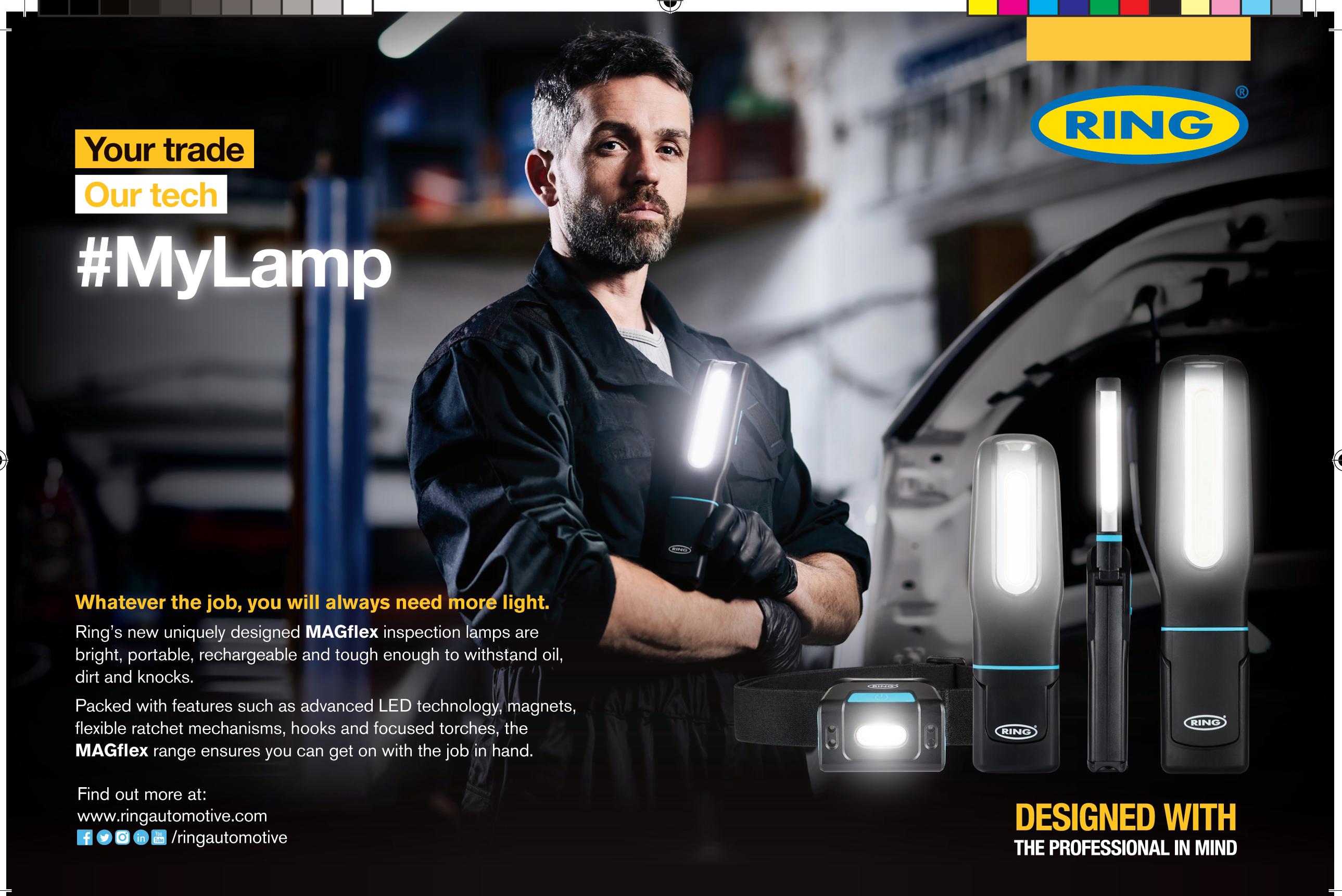
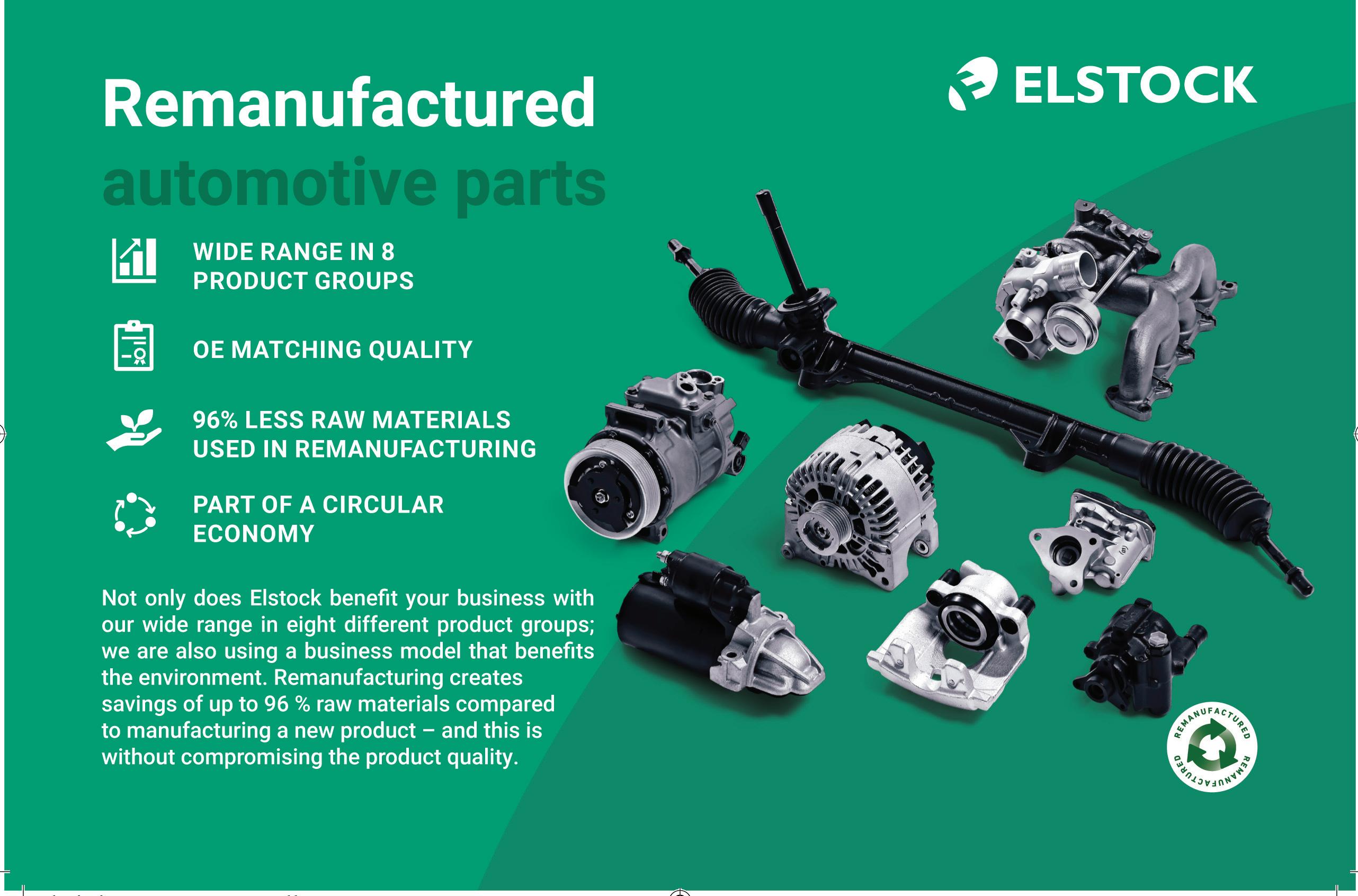
The GREENER solution
Denso is widely recognised as one of the world’s largest original equipment component manufacturers and system suppliers, with an extensive aftermarket portfolio. Our remanufacturing programme however, is less well known, despite being active in the European market for more than 10years.
The reasons behind having a remanufacturing programme at Denso are actually threefold: to deliver high quality products of the same standards as the original component on the vehicle, but manufactured in an environmentally friendly and sustainable way.
Today, if a product like a starter or alternator fails, or the battery in their hybrid vehicle breaks down, European motorists have a choice as to whether they replace it with a brand-new unit or a remanufactured one.
Each of these components is the same in terms of quality, in fact in some circumstances, such as when it’s rebuilt according to the latest OE standards compared to a new unit of a four-year-old design, you could even say it’s better. So, the choice for the driver is whether they prefer a remanufactured unit that is more environmentally friendly and cheaper to purchase, or a completely new one.

Remanufacture vs repair
An example of a repair, would be if there was a problem with a solenoid on a starter, which could simply be replaced and the fault rectified. In contrast, remanufacture is when the unit is completely disassembled and every component is cleaned, examined, tested and recycled, or if necessary, replaced. It is then rebuilt and tested against the standard of the original unit, so that as far as its performance and reliability is concerned, it will become, in effect, a new unit.
However, a distinction needs to be made when it comes to diesel components such as injectors, which due to their complexity cannot be repaired in the sense of replacing just one small part, they have to be completely remanufactured.
To shine a light on the process, let’s take diesel pumps and injectors as an example. There are two sides to remanufacturing these products. The first is the remanufacture of diesel injectors carried out by us in our own facilities, which is an operation only for our vehicle manufacturer partners and their dealer networks. The second consists of diesel parts remanufactured through our service repair network, a service offered to both VM dealers and the independent aftermarket.
This network is made up of independent diesel specialists based throughout Europe,
who are trained and authorised by us to execute diagnostics, service and repair to our standards. This means they are able to remanufacture these components to the same OE standards, the only meaningful difference being that they are more limited in their production capacity compared to our mass production-focused facilities.

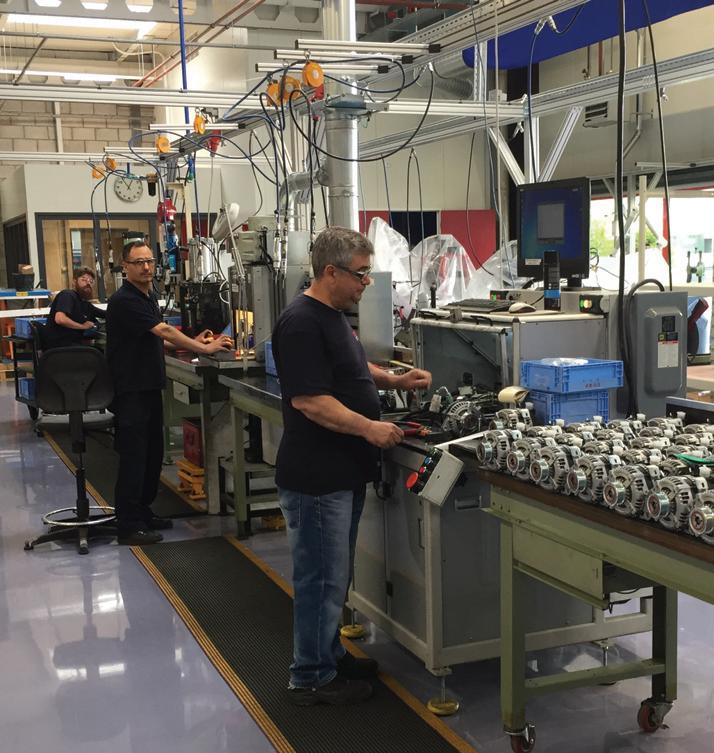
Service repair network
It’s worth adding that the service repair network is an important part of Denso’s service and repair solution for both the independent aftermarket and the VM’s dealer networks. It provides them with a comprehensive diesel support package that means that any diesel fault can be diagnosed and repaired by a true specialist, with an extremely high level of competence. The network therefore follows our QCD (quality, cost and delivery) principle, which means that an end-user can simply walk in with a problem and leave with a high quality, low cost and quick delivery solution.
A remanufactured component needs to be completely dismantled and cleaned and any substandard parts replaced with original parts, so the real question is “Is the process really any more environmentally friendly than manufacturing a completely new unit?” In short, yes, it is! Our philosophy is to reuse as much as possible and in the case of alternators this is usually around 85 per cent and with batteries it’s close to 90 per cent. This automatically provides great environmental gains, but there are also considerable CO2 reductions in not having to produce every part from scratch. So, the process is considerably more environmentally friendly.
PMM MARCH 2023 57 REMANUFACTURING
TO KNOW MORE? FOR MORE INFORMATION WWW.RDR.LINK/AAV023
WANT
Andre Koppenhol, the manager of Denso’s remanufacturing team, discusses the benefits of remanufacturing and shines a light on a less well-known aspect of the business.
QUALITY PARTS that don’t cost the earth
Carwood has more than 50 years expertise in the car, commercial vehicle, off-highway, motorsport and defence industries. Today, its remanufactured portfolio spans OEMapproved diesel fuel injectors and pumps, turbochargers, DPF cleaning, engines, hydraulics, starters, alternators and other coil wound electrical components, such as electric motors for the latest hybrid and electric vehicles. The company supplies these parts to leading vehicle manufacturers, OEMs, factory-owned race teams and distributors across the globe – its customers including Jaguar Land Rover, Mitsubishi, Perkins, CAT, Isuzu, Agco and the Ministry of Defence.
Remanufacturing: built-in quality at every stage
“Whilst we’re proud to have a wide-ranging and established customer base, including many of the industries’ biggest names, who it’s for, or what it is, is largely irrelevant. Every one of our remanufactured parts goes through the same stringent inspection, cleaning, rebuild, calibration and test procedures,” explains Simon Quantrell, deputy managing director, Carwood.
“Although the process itself may sound simple, the level at which this is done, and the know-how and equipment needed to do it, is more akin to the production of the original component – the only real difference being that we return a used part to its original condition, instead of producing a brand new one.”
OE-approved remanufacturer, Carwood, explains why and how its sustainable products are the perfect solution to the cost of living crisis.
The old part, otherwise known as the core, is critical to reman, and is why Carwood has a dedicated core team, managing stock of up to 10,000 pumps, 60,000 injectors and 10,000 turbochargers for both its own, and leading vehicle and engine manufacturer’s ranges.

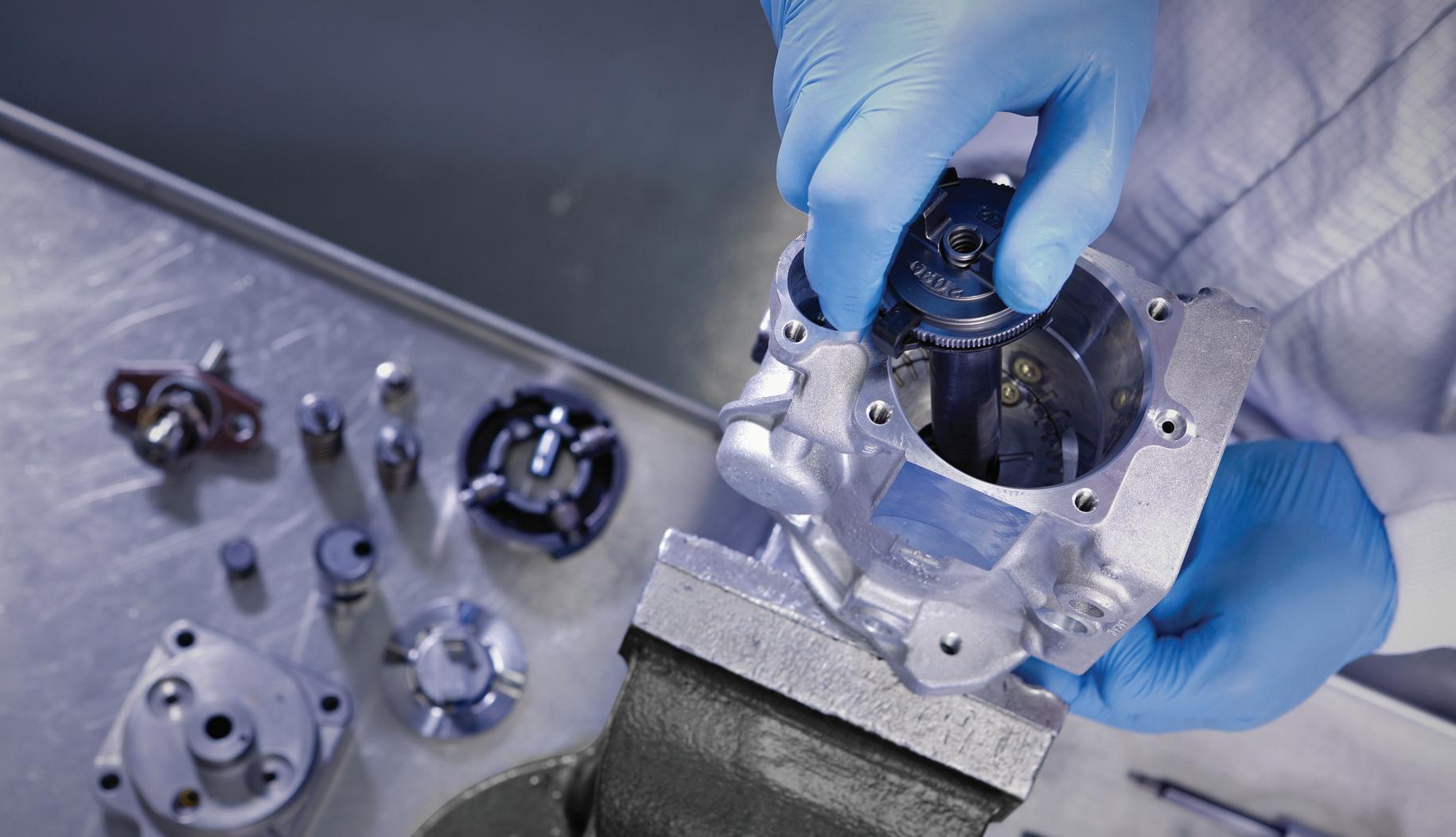
On receipt, each core unit is carefully inspected against strict acceptance criteria to ensure its suitability for remanufacturing. Those that pass the test, the first of many, are individually sorted, labeled, and stored in a dedicated core warehouse.
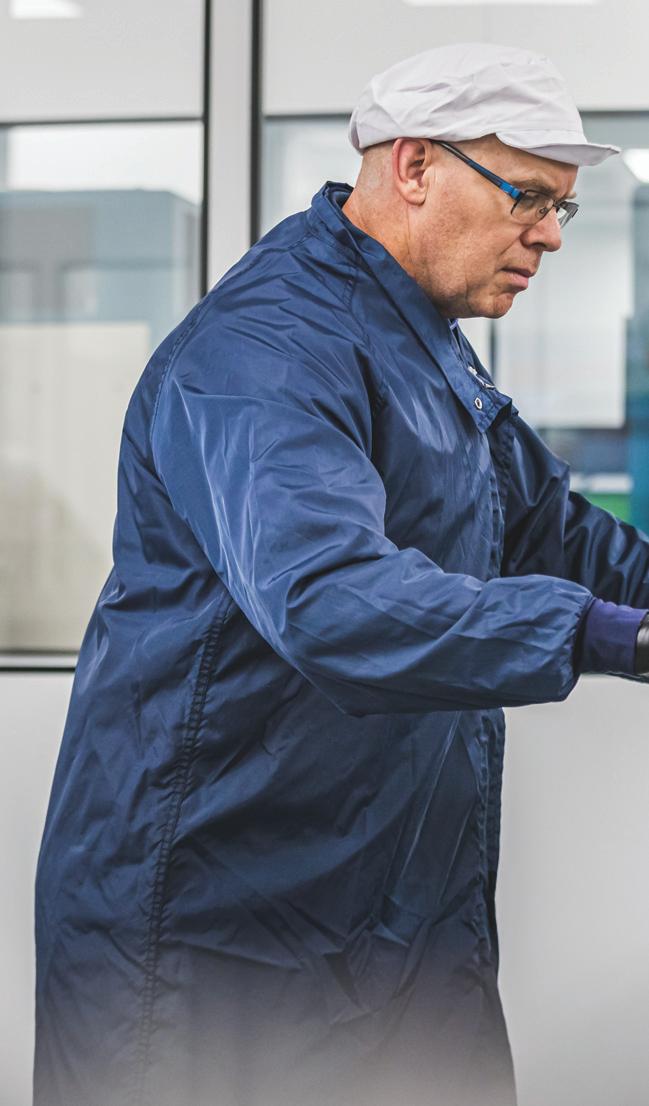
Once selected, the unit is stripped down –any products with cracks, corrosion or faulty
connectors are rejected. Reusable components are then thoroughly cleaned to remove dirt, debris and any contaminants, and inspected once again to ensure they meet the original specification and tolerances.
“We then start the process of putting them back together, replacing all wearable parts with like-for-like OE” adds Quantrell. “As an OEapproved remanufacturer for Bosch, Delphi Technologies, Denso and VDO, we also mirror their standards and processes. Our ISO14644 Class-7 certified clean room, for example, can filter down to as little as 0.5 microns, ensuring OE levels of cleanliness throughout the build.”
REMANUFACTURING
58 MARCH 2023 PMM
“Of course, no product will leave our factory, until it has gone through the same demanding test schedule as the OE product. For the latest common rail injectors, that can require some 700 test points just to recalibrate it –a critical step which allows the ECU to adjust fuel delivery and engine performance when the injector is installed back into the vehicle.”
For its turbos –covering OEMs such as BorgWarner, Garrett, IHI and Mitsubishi –all units are either fitted with a new CHRA, or are repaired and balanced using a VSR (vibration sorting rig), to ensure every moving part performs to the exact specification. Variable vane turbos are then calibrated on either a Turbo Technics VTR or G3 Power rig where the min and max flow rates are set to OEM standards.
“Through this process, we can be confident that every Carwood reman part has been returned to the vehicle manufacturer’s original factory specification,” continues Quantrell. “It’s a far cry from a reconditioned unit that has simply been disassembled, cleaned, and may or may not, have some damaged components replaced. Our products are just as good-as-new. Sometimes even better than new.”
He explains this last point: “By working closely with the OEMs, we are able to bring the very latest technology changes to older remanufactured parts. We can also engineer out any design defects, so more often than not, our reman part will outperform the original.”

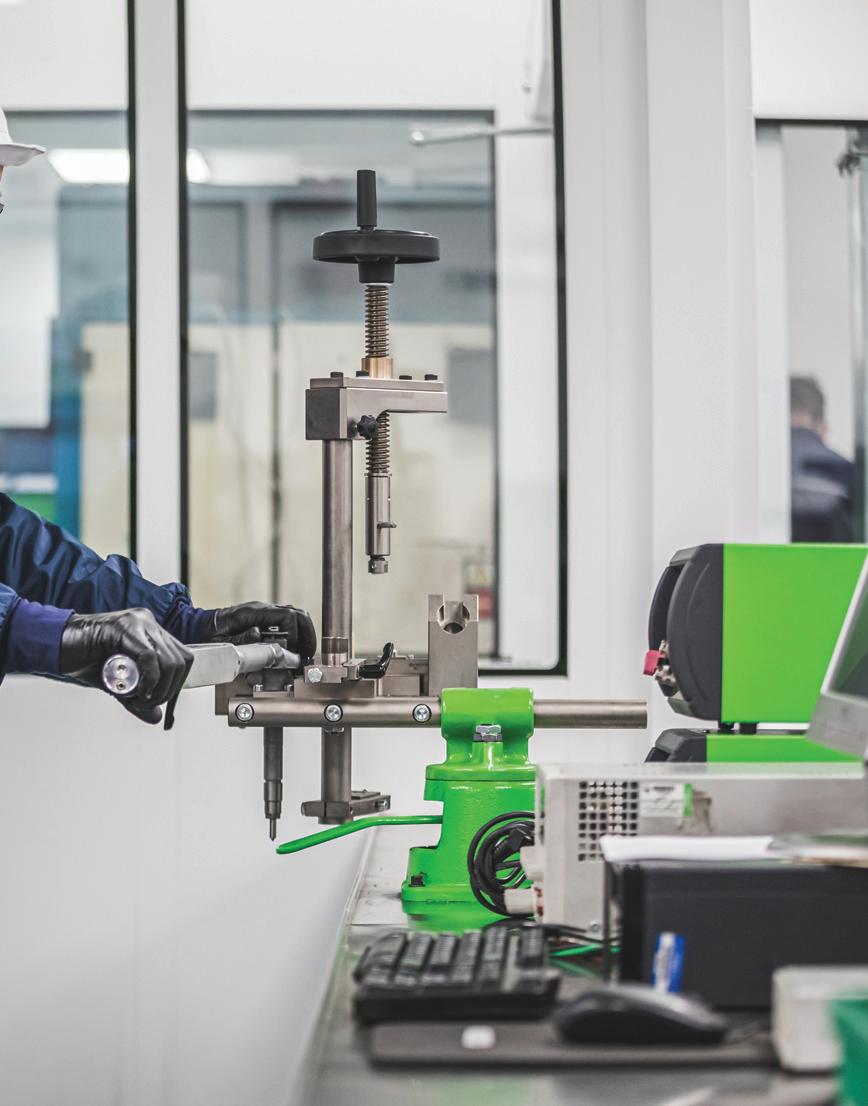
Better for the environment
But that’s not the only benefit. In retaining both the material and value added from the original product, remanufacturing can save up to 70 per cent of the resources, and use around 85 per cent less energy than new.

“We’re not extracting new raw materials,” says Quantrell. “We’re using the part in its final form, so the processes aren’t anywhere
nearly as intensive. Plus, we’re stopping waste from going to landfill. It’s a positive story about harnessing the circular economy, and one that we’re excited to be part of, ensuring our company continues to thrive, as does the environment we live in.”
Affordable solution
While environmentally conscious consumers are contributing to the growing demand, the inflation-beating power of remanufacturing is the biggest driver.
“Fuel, energy and food costs are going up like we’ve never seen before, so the end user – the vehicle owner – is looking for more economical solutions,” says Quantrell. “Because we reuse the core, it’s a lot more cost-effective than buying new. You’re getting the same performance as new OE, but it’s at least 25 per cent cheaper. Plus, you’re doing your bit for the planet.”
“We also know that the vehicle owner expects a quick fix, meaning garages are under increasing pressure to turn ramps faster. Which is why we’re committed to ensuring we have the right parts – old and late-model - in range, and together with our factor customers, can get them to you quickly. Similarly, we provide access to a technical hotline should you need on-the-job help with diagnosis, removal or refit.”
Quantrell concludes: “With an OEapproved brand like Carwood, you can access a wide range of premium quality, sustainable parts, at a competitive price. It’s what we call ‘Quality parts that don’t cost the Earth’. Simple as that.” WANT
PMM MARCH 2023 59
FOR MORE INFORMATION
TO KNOW MORE?
WWW.RDR.LINK/AAV024
From START to FINISH
The complexity of modern vehicles makes it increasingly difficult for car mechanics to determine the cause of a technical problem. That’s why at ACtronics remanufacturing is seen not as a product but as a service, whereby we gladly support the entire process from diagnosis to test drive. We are happy to share our knowledge in the form of technical advice from our product specialists, but also by publishing various supporting documents. So, with this concept in mind, let’s walk through our remanufacturing process.
Diagnosis and removal
As mentioned above, modern vehicle technology can be quite complex. While training options are endless, you just can’t know every little detail. So, when things get difficult, wouldn’t it be useful to have a specialist like ACtronics as a partner, who can help you both diagnose and solve the problem?


It was precisely this thought that prompted us to start making technical documentation. Besides the countless online articles and fault code lists on our website, we’ve also launched two diagnostic guides: a 120+ page book about transmission control units and a 150+ page one about the ABS/ESP braking system. It contains technical information, diagnosis tips and instructions how to remove and re-install the part properly. Our customers can download or order a copy in their online account. This initiative has been so well received that we are developing other editions as well.
Of course, when documentation isn’t sufficient, you can always call customer service. Our product specialists will help you out.
Packing and sending
Once it has been determined that the part is faulty, the next thing to do is pack it up and send it to us. Because our process is largely automated, this is a very important part of the process. It consists of four simple steps:
Register the part for remanufacturing on our website
Print out the Remanufacturing Order Form (ROF)
Pack the part
Send the package
Or alternatively to step 4: Choose the pick-up service and we’ll have the package collected from your workshop.
Stay informed online
From here, everything is taken care of for you. The current status can be tracked in real time on ‘my account’ at our website and you will also receive status updates by email. Of course, we will always contact you should anything particular arise.
Testing, repairs and final inspection
Why would you limit to repair if there is a better alternative like remanufacturing? That’s quite the statement, but there are some major differences between the two. Where “repair” could be explained as a single action, “remanufacturing” is more like a whole process. At ACtronics remanufacturing consists of testing, all recommended repairs (not only the one that solves the current problem!) and a final inspection.
Testing
In general, any weaknesses in an electronic component do not always appear during the preproduction test period, but only after several years of everyday use. Because manufacturers have already shifted their focus to newer products by then, these weaknesses are often no longer corrected. This presents an opportunity for remanufacturing specialists like ACtronics, because we can analyse these weaknesses in detail and improve the product where necessary. In many instances, a remanufactured product is therefore even more reliable than a new one. This is also the main reason why we have a testing phase at ACtronics, where a part performs an automated
REMANUFACTURING
Remanufacturing expert ACtronics’ COO Thijs Jasink explains what goes into every remanufactured part.
60 MARCH 2023 PMM
script (simulation) that will expose any problems. Any underlying issues will certainly be noticed.
All recommended repairs
At ACtronics quality is top priority. This is reflected in the way we perform our repairs as well. Each remanufacturing solution has its own protocols and where possible improvements are made. We’ve even launched two fully automated remanufacturing lines last year, using vapor phase soldering, pick and place machines and glue robots. We are very proud to have come this far, but of course we’ll keep on improving.
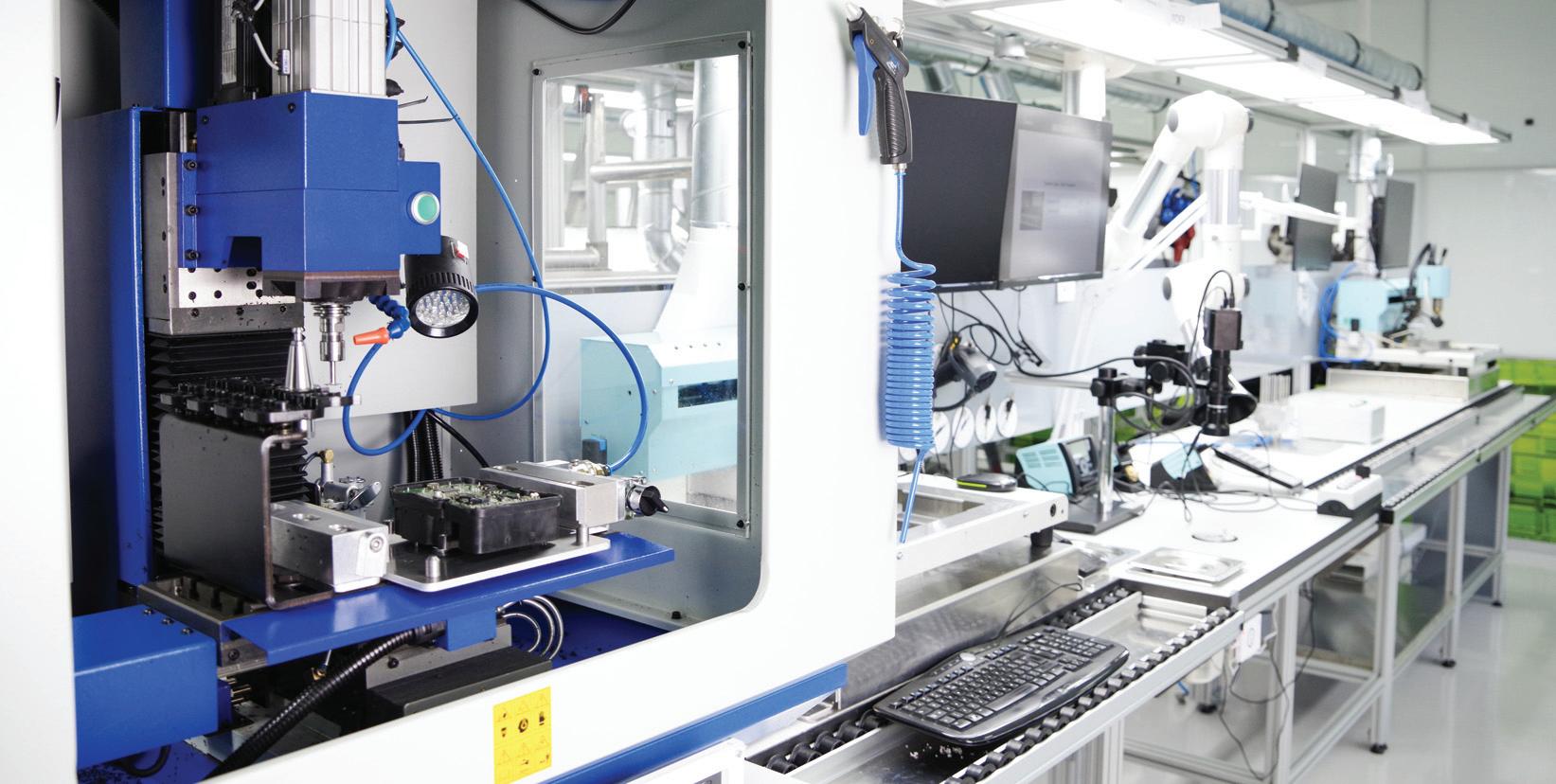
Final inspection
No part will be shipped back to the customer unless a successful final inspection is completed. It uses the same automated script as entry testing, but the part must also pass a visual quality control.
Back into the car: plug-and-play?
And that’s it, just put the part back into the car and the job is done. But is it?
Encrypted components
For various reasons, car manufacturers are increasingly encrypting electronic components. This is making it increasingly difficult to replace these parts. Programming a new component often requires special (expensive) equipment as well as specialist knowledge of the procedures to be carried out. In these cases, it is therefore much easier to have the

defective part remanufactured because it preserves existing configurations and minimises the need for re-learning. This saves valuable time as well. So yes, in most cases putting back a remanufactured part is really plug-and-play.

Software updates
As is the case with PCs and mobile phones, the electronics used in the automotive sector are also increasingly provided with software updates. This is common practice to ensure the existing functionality, but also for tightening up on environmental requirements or solving any problems found. Unfortunately, you will lose these updates as soon as a new component has to be installed. Of course, it’s possible to update these parts, but the procedures for doing so can be cumbersome. All of which makes remanufacturing a very interesting option.
Installation instructions
However, even putting back a part without programming and updating can be a complex process. To help you further and provide you with information after the remanufacture has been completed, we will supply you an installation instruction if necessary. And of course, you can also use our diagnostic guides.
WANT TO KNOW MORE?
FOR MORE INFORMATION
WWW.RDR.LINK/AAV025
Going back to the CORE
For any of our readers unfamiliar with the remanufacturing process, Shaftec’s marketing manager
Adrian Kitchen outlines the four steps that go into each remanufactured product: inspection, disassembly & cleaning, reassembly and testing. Before all else, “every single part is checked and its fate determined by either being fit for remanufacturing or being damaged and unfit for remanufacturing. The part is then stripped bare ready for cleaning/de-greasing. As soon as the parts are clean, they are shot blasted. Now the components are organised onto part specific trolleys and handed over to our team of professional builders who assemble the
part using new components. Every single part that flows through this department is tested using purpose-built machinery.”
So what advantages, exactly, can this process bring to the aftermarket?

Remanufacturing’s OE credentials are something that the three companies I spoke to all emphasised. Autoelectro’s UK sales manager, Nick Hood pointed out that “because the original OE body remains, mechanics can rely on an accurate fit” and cited the importance of technical knowledge:

“Understanding how a part, like a starter motor or alternator, operates and why it fails is invaluable; it
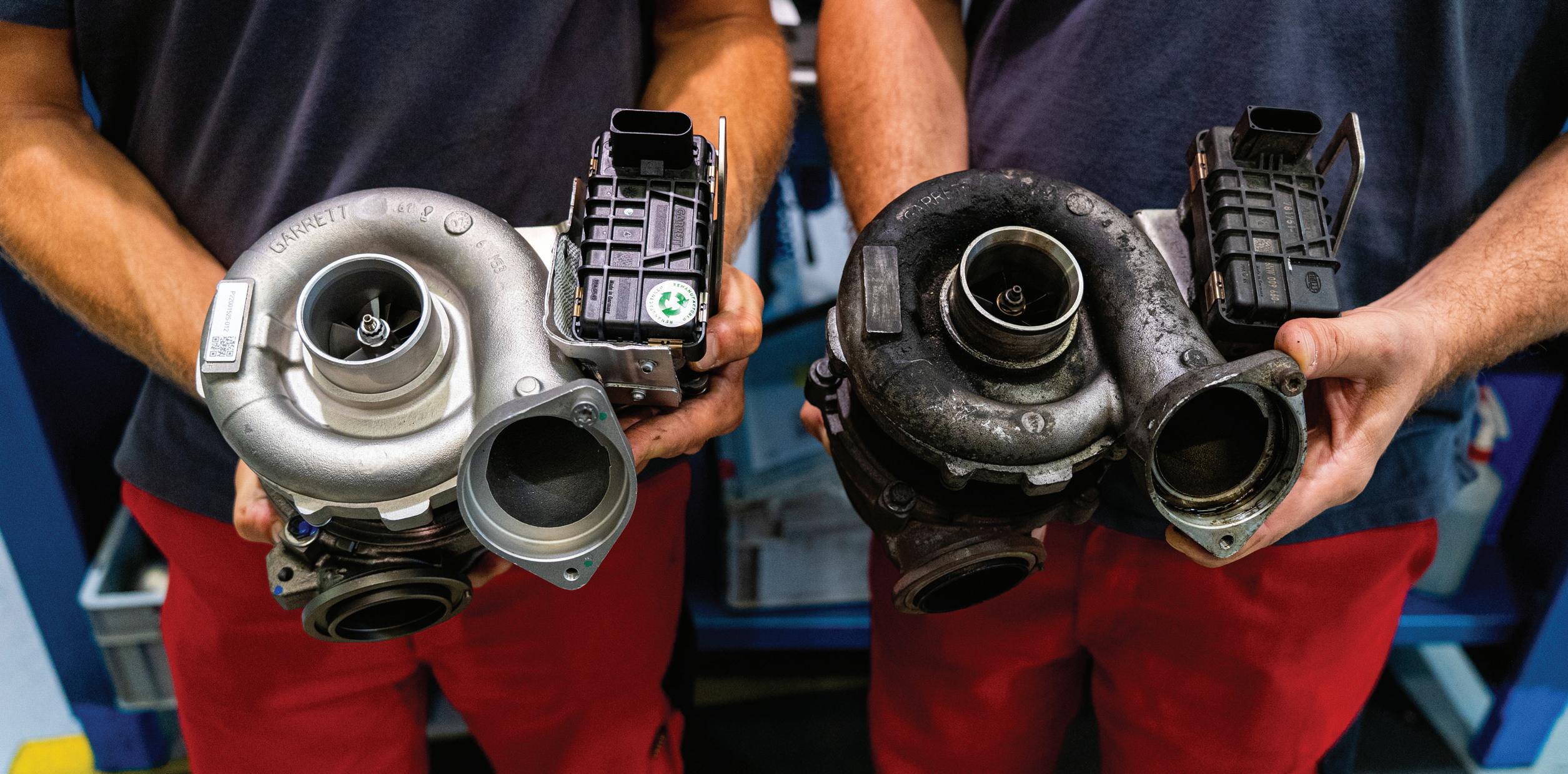
enables us to support a workshop with technical information that it wouldn’t otherwise receive from a spurious source that imports new units.” Borg Automotive argues that remanufacturers can even go one better than OE, claiming “we can adjust part numbers which are “born” with faults.”
The nature of remanufactured products, with the “core” of the product coming not from a factory but from the car parc itself, means that whatever cars are still on the road are, in theory, able to replenish the stock of products available. This method of sourcing stock from existing cars makes it more reactive to what is needed. As Borg points out, “in some cases, remanufactured parts may be the only option for older or hard-to-find vehicles, as new parts may no longer be available. This is a big help to drivers of older cars who struggle to find replacement parts.
Of course, one of the biggest benefits of remanufacturing is its low environmental impact. According to Borg: “Remanufacturing helps to conserve resources by giving used products more than one life. This reduces the need to extract and process raw materials, which can be energy-intensive and environmentally damaging. A study shows that remanufacturing on average saves 96 per cent of the raw materials used in manufacturing the original automotive part.”
Shaftec’s Adrian adds: “As an individual
REMANUFACTURING
PMM ’s editor Kieran Nee asked three remanufacturers to share their knowledge and expertise to highlight the benefits and challenges of the remanufacturing process.
62 MARCH 2023 PMM
company we aren’t making a significant dent in the reduction of greenhouse gases but our contribution along with all the other remanufacturers out there does help to make a sizeable impact on a more environmentally friendly way of producing parts.”

So far, so good. But as you might imagine, receiving core from existing cars and transforming it into OE-quality components is not without its difficulties. Autoelectro’s Nick Hood details some of the challenges they face: “A general reluctance to return old core. This is heightened by the introduction of units that are surcharge free. There are more vehicle-specific units these days too; there aren’t many instances where one reference fits different applications. What’s more, the economy of scale on purchasing is not what it was. Remanufacturing a part on the periphery of a range results in buying a limited number of components; therefore, it becomes more expensive to remanufacture that part.”
Not all parts are appropriate for remanufacture, according to Borg – the following should not be remanufactured: “Parts that are severely damaged or worn, parts that have reached the end of their service life, parts with safety-critical functions, parts that have been recalled and wear parts.”
To conclude, I asked what advice can be given to any workshops considering buying remanufactured parts. Autoelectro emphasised the quality aspect of it: “Remanufacturing is an unusual concept in some ways; in normal circumstances, offer someone a product that’s brand new or remanufactured, I think most people’s disposition would be to choose new because it’s perceived to be better – and this is
where the quality argument falls within the aftermarket. Just because a part is brand new in the aftermarket doesn’t mean it’s the same quality as OE.”

Borg urged workshops “it is important to research the supplier of the parts to ensure that they are reputable and have a track record of producing high-quality products.” Meanwhile, Shaftec finished by clearing up a myth about the area: “A lot of people label remanufactured parts as “reconditioned”. We are completely stripping parts back with sophisticated machinery and replacing the components that actually fail. We do not remanufacture Chinese units, only OE parts.
Special thanks to Autoelectro, Shaftec and BORG Automotive for their participation. WANT
TO KNOW MORE? FOR MORE INFORMATION
WWW.RDR.LINK/AAV026
Those of you not taking advantage of the PMM website are truly missing out. With an array of technical articles, breaking news and helpful business tips, it’s a great source of information right at your fingertips. If you haven’t already, the PMM website is also a great place to listen to our monthly podcast (WWW.RDR.LINK/AAV027), If you’re not already convinced, this month, PMM ’s news and products editor, Freya Coleman, takes a look back at the most popular articles on the website from the past month.

Digital Digest!
level of sensitivity that the traditional oxygen sensor. To read in more detail about the differences, make sure to follow the link below.
Battery support







1 3








WWW.RDR.LINK/AAV029
Marketing is key
The first online article that proved popular amongst the website’s visitors this month was from Kalimex, outlining why it believes marketing is key for workshops to weather storms ahead. It is recommend to focus on back-to-basics marketing such as talking to customers at least once a month — email marketing being the perfect example of this as well as face-face visits to promote tradetrusted products.
A brief history
Have you ever wondered how diagnostics found their way into the modern workshop? Well, Andy Brooke from Maverick Diagnostics is here to take us back in time 137 years with a brief history of vehicle diagnostics, whilst also looking at what the future might look like.
WWW.RDR.LINK/AAV030






All about sensors

Next up is an online article from Denso answering the question about the difference between air/fuel ratio sensors and oxygen sensors. The article points out that whilst both sensors serve a similar purpose, the air/fuel ratio sensor provides a higher

In this next online article, CTEK explores how the shift in driving habits has impacted the importance of battery support during diagnostics. It details how battery issues have become more common in vehicles entering the workshop. For example, in a six-week trial the company found that as many as 50 per cent of vehicles arriving in the workshop needed battery attention.


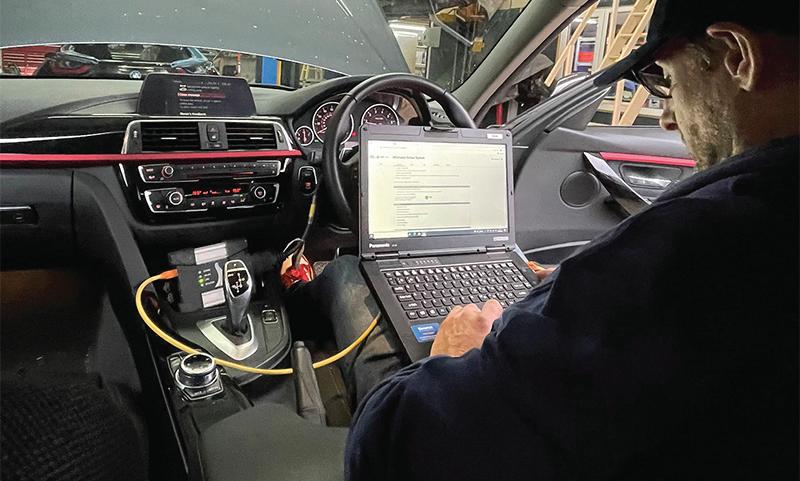
WWW.RDR.LINK/AAV031
Digital tool launch

Last but not least, read up on the details of Continental’s latest digital tool aimed at competing with dealers — the SINDRI app. Its aim is to make data available much faster than conventional methods to be used in parallel with visual inspection. Join others in keeping up to date with product releases by checking out the link below.






WWW.RDR.LINK/AAV032

64 MARCH 2023 PMM
ONLINE ROUND UP
The internet’s top 5
4 5
TOOL SPOTLIGHT
What’s new?
PMM takes a look at some new products from Laser

Tools
■ TUBE STRAIGHTENER
First up is this tube straightener (part number 8443) which is said to straighten copper, stainless steel or aluminium pipe with diameters ranging from 4mm to 10mm. It utilises seven U-shaped, grooved rollers, which can be adjusted gradually and held in place by using the thumb lock, to guide the pipe through the straighteners without causing damage to the profile of the pipe. The tool also features a fold out tab that enables it to be mounted on a vice for ease of use. Ideal for use when fabricating replacement automotive brake pipe, or the larger-sized central heating or airconditioning installation pipework. For tube diameters: 4.75 - 5mm (3/16 in.), 6 - 6.3mm (1/4 in.), 8mm (5/16 in.) and 10mm (3/8 in.) tubing.
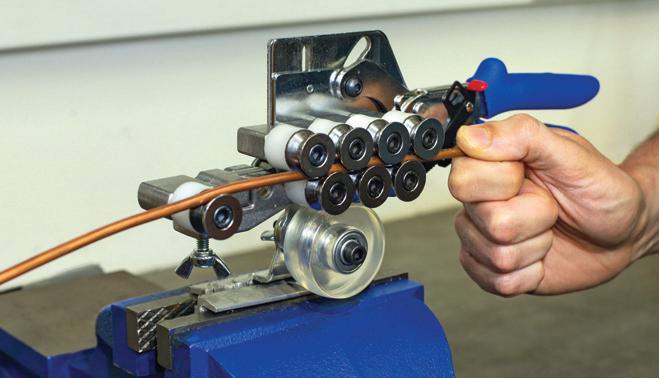
WANT TO KNOW MORE?
WWW.RDR.LINK/AAV033
■ WATER PUMP PLIERS
Next up is these rapid-adjustment water pump pliers that are designed to hold pipes, components and fixings with a tenacious grip. Three sizes are available: 180mm (8478), 250mm (8479) and a mighty 300mm (8480). They all feature a rapid-adjust, push-button mechanism that locks the pliers in the desired position. The 180mm version features 20 set positions that adjusts from 042mm; the 260mm pliers have 16 positions and adjust from 0-50mm. The larger 300mm pliers feature 29 set positions and adjust right up to 70mm.
WANT TO KNOW MORE?
WWW.RDR.LINK/AAV034
■ SUSPENSION ARM LEVER-HOOK
Lastly, is this suspension arm lever-hook. When removing ball joints, control arms and suspension struts it can be a struggle to hold the lower suspension arm out of the way — but this suspension arm lever-hook (part number 8530) aims to solve that problem. This is a strong metal hook that is designed to be used in conjunction with a simple lever or pry bar and then easily and quickly attached to lower suspension arms, allowing the operator to lever the component in the required direction. It provides a simple connection to provide a lever point for lever or pry bars when pulling down lower track control arms, suspension arms, roll bars and exhaust hangers, etc.
WANT TO KNOW MORE?
WWW.RDR.LINK/AAV035
■ 4-IN-1 WHEEL NUT SOCKET
Next is this wheel nut socket — one socket that fits four wheel-nut sizes. It’s a half-inch-drive, double-ended wheelnut socket (part number 8458), that features a spring-loaded insert at each end that enables it to accommodate four different sized wheel nuts in total: 17, 19, 21 and 22mm. This space saving design cuts down on the number of tools needed to be carried and is ideal where storage space is limited.
Each end includes an internal sliding socket insert that moves out of the way when the larger size is required, provided two socket sizes at each end. At 78mm long, the socket is suitable for deepseated wheel nuts and bolts. Also included is a 77mm long 1/2 in. drive extension bar which makes this an ideal combination for an emergency tool kit providing both space and weight savings. The tool is manufactured from chrome vanadium steel with a satin finish.


WANT TO KNOW MORE?
WWW.RDR.LINK/AAV036
PRODUCT SPOTLIGHT
PMM MARCH 2023 65
■ HEADTORCH
NightSearcher has upgraded their Zoom 580R with the Zoom 700R — a head torch with a super bright 700 lumens and still features a hybrid power supply, allowing you to swap from the supplied rechargeable battery pack to 3 x AAA batteries.
This headtorch has a spot-to-flood beam zoom function, ideal for dark and confined spaces. Simply rotate the zoom lens to switch from a narrow 200m spot beam for illuminating precise targets to a wide flood beam to light up everything in front of you. The beam angle can be adjusted to 90°, there is also the warm white diffused beam, perfect for detailing and close-up illumination. The runtimes for the Zoom 700R are 2-25 hours depending on the light mode.

Suitable for use with helmets, the head torch features non-slip straps and can also be attached with optional helmet clips. It’s incredibly lightweight at just 95 grams and is comfortable to wear.
WWW.RDR.LINK/AAV037
■ REMOTE DIAGNOSTICS TOOLS

The new Thinkcar Thinktool range, which includes the X10S and X5, offers streamlined remote diagnostics and video and voice guidance capabilities to ensure an even quicker fault to fix for automotive technicians. This ‘phone a friend’ diagnostic system aims to enable quick and easy diagnostics and repairs.
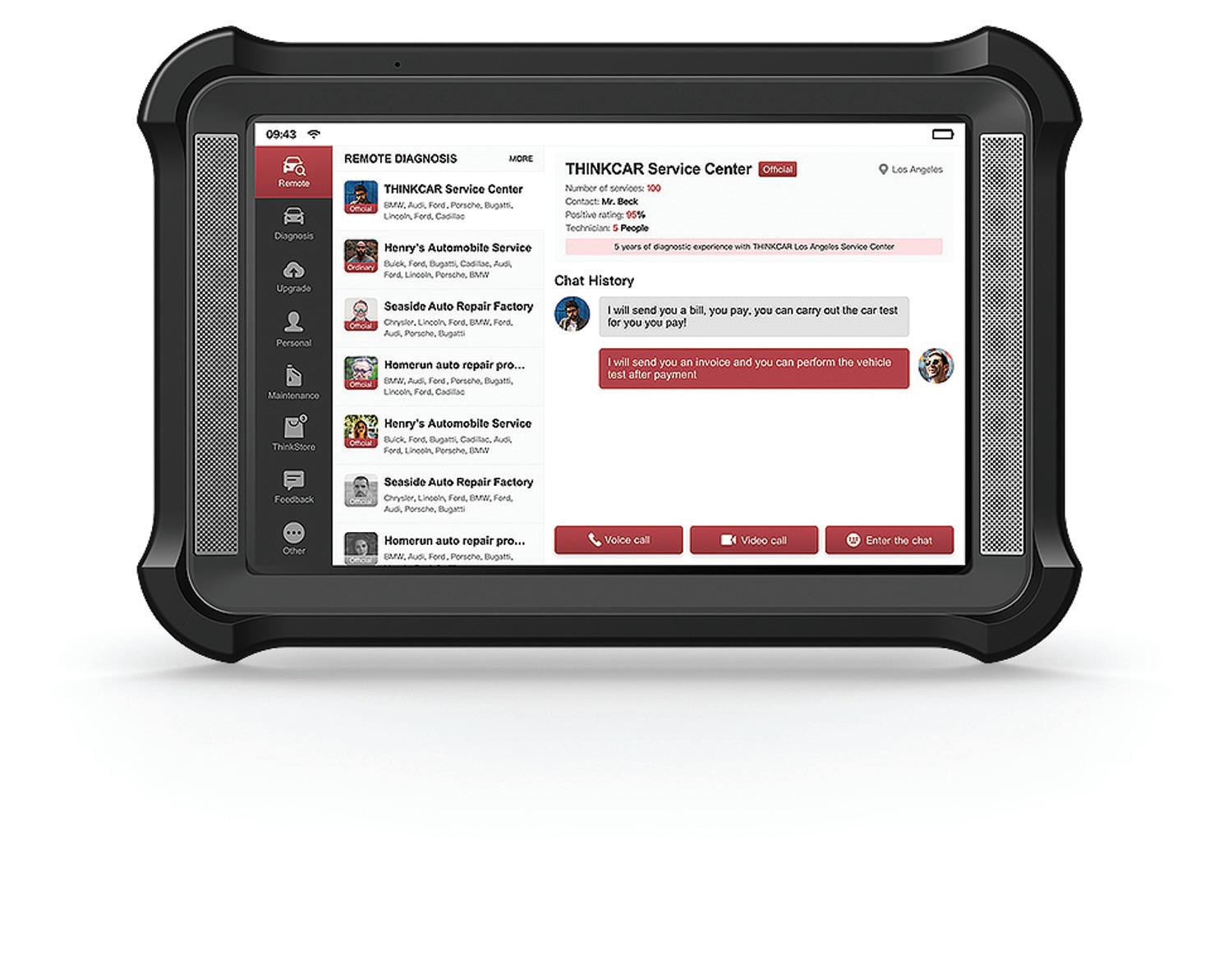
The X10S offers online programming for multiple brands including VAG, Mercedes, BMW, Jag/Land Rover, Nissan/Hyundai as well as online functionality for Ford and other brands. Using the X10S on Volkswagen, Audi, Seat, and Skoda, a check of the vehicle can be conducted for software updates. A reflash of the same software version, or an updated version can also be performed. This is particularly useful on VAG if it is suspected that the vehicle has a dubious remap and a confirmation of the current software installed is required.
The X5 is an all-makes tool, but without the online functionality of its parent X10S. X5 is the perfect addition for workshops who wish to only access the Thinkcar UK advanced remote network.
The Remote Technician Team
The Remote Technician team at Thinkcar UK are all specialist technicians with a wealth of experience who use the Thinkcar range on a daily basis. Each specialist has been picked for a unique area of automotive expertise. The team includes:
■ The UK’s best Automatic gearbox specialists are available to help diagnose and program gearbox-related faults
■ The UK’s leading dealer diagnostic technicians who can carry out OEM programming and ADAS work on most vehicle brands.
■ An Autolocksmith trainer who can help with key-related issues as well as programming jobs.
How does a remote programming service work?
Starting a session is easy — users simply click on the on-screen remote icon and select their desired remote technician.
Direct messages can be sent to the remote technician to provide details about the job requirement. A job fee will be arranged, and then work can begin – then, the technician will program or diagnose your vehicle remotely from its various UK-based locations, all whilst the technician gets on with another job.
WWW.RDR.LINK/AAV038
66 MARCH 2023 PMM WHAT’S NEW?
MORE INFO
Just type in www.rdr.link followed by the unique code shown to get straight to more info.
Here is a useful summary of all the adverts that appear in this issue of Professional Motor Mechanic. Each is listed with its page number and a direct URL that will get you straight to the relevant online information
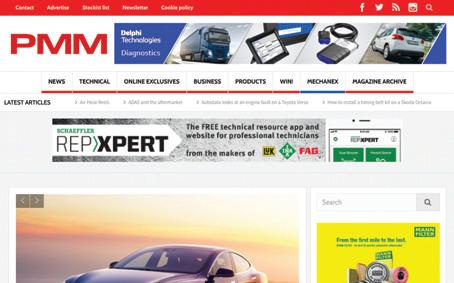


AC Tronics Ltd ..................................................................(page 27) www.rdr.link/AAV100
Alldata UK Sales Ltd ........................................................(page 11) www.rdr.link/AAV101
Automechanika ..................................................................(page 28) www.rdr.link/AAV102
Autotech Recruit ................................................................(page 33) www.rdr.link/AAV103
Bailcast ..............................................................................(page 50) www.rdr.link/AAV104
Ben ....................................................................................(page 40) www.rdr.link/AAV105
Bonaprene Products/Polybush ............................................(page 47) www.rdr.link/AAV106
Borg Automotive ................................................................(page 56) www.rdr.link/AAV107
Borg Warner ......................................................................(page 22) www.rdr.link/AAV108
Bowmonk ..........................................................................(page 53) www.rdr.link/AAV109
Carwood Motor Units Ltd ..................................................(page 63) www.rdr.link/AAV110
Clarios ..................................................................................(page 8) www.rdr.link/AAV111
Contitech Power Transmission ..........................................(page 31) www.rdr.link/AAV112
Delphi Technologies Ltd ..........................................(page 68/OBC) www.rdr.link/AAV113
Diagnostic Connections ......................................................(page 27) www.rdr.link/AAV114
Ferdinand Bilstein UK Ltd/Febi ..........................................(page 4) www.rdr.link/AAV116 Jack Sealey Ltd ..................................................................(page 25) www.rdr.link/AAV117
KEEP UP TO DATE WITH PMM ADVERTISEMENT INDEX A FOLLOW US ON TWITTER @PMMMAGAZINE B LIKE US ON FACEBOOK @PROFESSIONALMOTORMECHANIC VISIT OUR WEBSITE WWW.PMMONLINE.CO.UK
Esprit
..................................................................................(page 38) www.rdr.link/AAV115
Kalimex Ltd ......................................................................(page 49) www.rdr.link/AAV118 Klarius Products Ltd ..........................................................(page 43) www.rdr.link/AAV119 Liqui Moly UK ..................................................................(page 16) www.rdr.link/AAV120 MAM Software ..................................................................(page 35) www.rdr.link/AAV121 Maverick Diagnostics ........................................................(page 33) www.rdr.link/AAV122 PMM Online ......................................................................(page 44) www.rdr.link/AAV123 PMM Podcast ....................................................................(page 18) www.rdr.link/AAV124 Ring Automotive ................................................................(page 56) www.rdr.link/AAV125 Rotronics Battery Management ..........................................(page 37) www.rdr.link/AAV126 Saxon Brands ....................................................................(page 39) www.rdr.link/AAV127 Schaeffler Automotive ..................................................(page 2/IFC) www.rdr.link/AAV128 SP Diagnostics ..................................................................(page 61) www.rdr.link/AAV129
















 Editor KIERAN NEE
Editor KIERAN NEE












 with Freya Coleman
with Freya Coleman






















































































































































































































